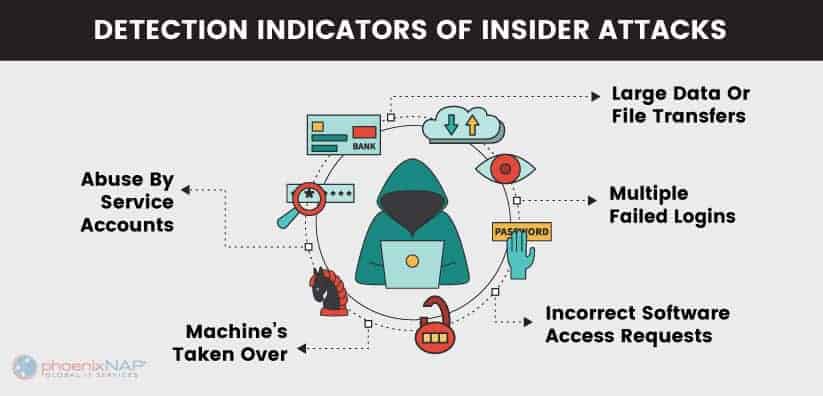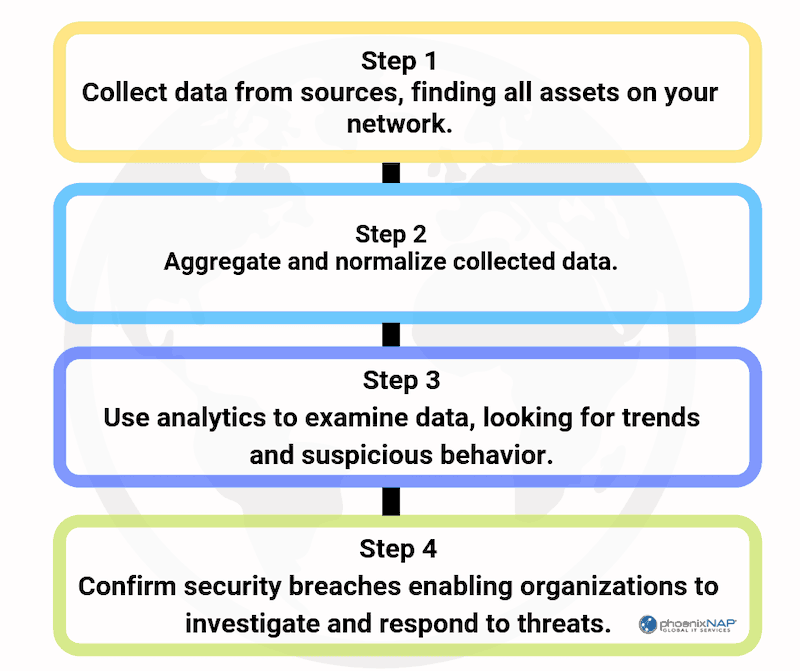30 Cloud Monitoring Tools: The Definitive Guide For 2020
Cloud monitoring tools help assess the state of cloud-based infrastructure. These tools track the performance, safety, and availability of crucial cloud apps and services.
This article introduces you to the top 30 cloud monitoring tools on the market. Depending on your use case, some of these tools may be a better fit than others. Once you identify the right option, you can start building more productive and cost-effective cloud infrastructure.
What is Cloud Monitoring?
Cloud monitoring uses automated and manual tools to manage, monitor, and evaluate cloud computing architecture, infrastructure, and services.
It incorporates an overall cloud management strategy allowing administrators to monitor the status of cloud-based resources. It helps you identify emerging defects and troubling patterns so you can prevent minor issues from turning into significant problems.
Best Cloud Management and Monitoring Tools
1. Amazon Cloudwatch
Amazon Web Services offers to monitor cloud resources and applications running on Amazon AWS. It lets you view and track metrics on Amazon EC2 instances and other AWS resources such as Amazon EBS volumes and Amazon RDS DB instances. You can also use it to set alarms, store log files, view graphs and statistics, and monitor or react to AWS resource changes.
Amazon Cloudwatch gives you an insight into your system’s overall health and performance. You can use this information to optimize your application’s operations. The best part of this monitoring solution is you don’t need to install any additional software.
It is an excellent practice to have multi-cloud management strategies. They give you cover in case of incidences such as when Amazon Web Services went dark in March 2017.
2. Microsoft Cloud Monitoring
If you run your applications on Microsoft Azure, you can consider Microsoft Cloud Monitoring to monitor your workload. MCM gives you immediate insights across your workloads by monitoring applications, analyzing log files, and identifying security threats.
Its built-in cloud monitoring tools are easy to set up. They provide a full view of the utilization, performance, and health of your applications, infrastructure, and workloads. Similar to Amazon Cloudwatch, you don’t have to download any extra software as MCM is inbuilt into Azure.
3. AppDynamics
Cisco Systems acquired AppDynamics in early 2017. AppDynamics provides cloud-based network monitoring tools for assessing application performance and accelerating operations shift. You can use the system to maximize the control and visibility of cloud applications in crucial IaaS/PaaS platforms such as Microsoft Azure, Pivotal Cloud Foundry, and AWS. AppDynamics competes heavily with other application management solutions such as SolarWinds, Datadog, and New Relic.
The software enables users to learn the real state of their cloud applications down to the business transaction and code level. It can effortlessly adapt to any software or infrastructure environment. The new acquisition by Cisco Systems will only magnify AppDynamic’s capabilities.
4. BMC TrueSight Pulse
BMC helps you boost your multi-cloud operations performance and cost management. It helps measure end-user experience, monitor infrastructure resources, and detect problems proactively. It gives you the chance to develop an all-around cloud operations management solution. With BMC, you can plan, run, and optimize multiple cloud platforms, including Azure and AWS, among others.
BMC can enable you to track and manage cloud costs, eliminate waste by optimizing resource usage, and deploy the right resources at the right price. You can also use it to break down cloud costs and align cloud expenses with business needs.
5. DX Infrastructure Manager (IM)
DX Infrastructure Manager is a unified infrastructure management platform that delivers intelligent analytics to the task of infrastructure monitoring. DX IM provides a proactive method to troubleshooting issues that affect the performance of cloud infrastructure. The platform manages networks, servers, storage databases, and applications deployed using any configuration.
DX IM makes use of intelligent analytics to map out trends and patterns which simplify troubleshooting and reporting activities. The platform is customizable, and enterprises can build personalized dashboards that enhance visualization. The monitoring tool comes equipped with numerous probes for monitoring every aspect of a cloud ecosystem. You can also choose to integrate DX IM into Incident Management Tools to enhance their infrastructure monitoring capabilities.

6. New Relic
New Relic aims at intelligently managing complex and ever-changing cloud applications and infrastructure. It can help you know precisely how your cloud applications and cloud servers are running in real-time. It can also give you useful insights into your stack, let you isolate and resolve issues quickly, and allow you to scale your operations with usage.
The system’s algorithm takes into account many processes and optimization factors for all apps, whether mobile, web, or server-based. New Relic places all your data in one network monitoring dashboard so that you can get a clear picture of every part of your cloud. Some of the influential companies using New Relic include GitHub, Comcast, and EA.
7. Hyperic
vRealize Hyperic, a division of VMware, is a robust monitoring platform for a variety of systems. It monitors applications running in a physical, cloud, and virtual environments, as well as a host of operating systems, middleware, and networks.
One can use it to get a comprehensive view of all their infrastructure, monitor performance, utilization, and tracklogs and modifications across all layers of the server virtualization stack.
Hyperic collects performance data across more than 75 application technologies. That is as many as 50,000 metrics, with which you can watch any component in your app stack.
8. Solarwinds
Solarwinds provides cloud monitoring, network monitoring, and database management solutions within its platform for enterprises to take advantage of. Solarwinds cloud management platform monitors the performance and health status of applications, servers, storage, and virtual machines. The platform is a unified infrastructure management tool and has the capacity to monitor hybrid and multi-cloud environments.
Solarwinds offers an interactive virtualization platform that simplifies the process of receiving insight from the thousands of metrics collected from an IT environment. The platform includes troubleshooting and remediation tools that enable real-time response to discovered issues.
9. ExoPrise
The ExoPrise SaaS monitoring service offers you comprehensive security and optimization services to keep your cloud apps up and running. The tool expressly deals with SaaS applications such as Dropbox, Office 365, Salesforce.com, and Box. It can assist you to watch and manage your entire Office 365 suite, while simultaneously troubleshooting, detecting outages, and fixing problems before they impact your business.
ExoPrise also works to ensure SLA compliance for all your SaaS and Web applications. Some of the major clients depending on ExoPrise include Starbucks, PayPal, Unicef, and P&G.
10. Retrace
Retrace is a cloud management tool designed with developers’ use in mind. It gives developers more profound code-level application monitoring insights whenever necessary. It tracks app execution, system logs, app & server metrics, errors, and ensures developers are creating high-quality code at all times. Developers can also find anomalies in the codes they generate before the customers do.
Retrace can make your developers more productive, and their lives less complicated. Plus, it has an affordable price range to fit small and medium businesses.
How to outsource? Out of the box cloud solutions with in-built monitoring and threat detection services offload the time and risk associated with maintaining and protecting complex cloud infrastructure.
To learn more, read about Data Security Cloud.
11. Aternity
Aternity is a top End User Experience (EUE) monitoring system that was acquired by Riverbed Technology in July 2016. Riverbed integrated the technology into its Riverbed SteelCentral package for a better and more comprehensive cloud ecosystem. SteelCentral now combines end-user experience, infrastructure management, and network assessments to give better visibility of the overall system’s health.
Aternity is famous for its ability to screen millions of virtual, desktop, and mobile user endpoints. It offers a more comprehensive approach to EUE optimization by the use of synthetic tests.
Synthetic tests allow the company to find crucial information on the end user’s experience by imitating users from different locations. It determines page load time and delays, solves network traffic problems, and optimizes user interaction.
Aternity’s capabilities offer an extensive list of tools to enhance the end user’s experience in every way possible.
12. Redgate
If you use Microsoft Azure, SQL Server, or.NET, then Redgate could be the perfect monitoring solution for your business. Redgate is ingenious, simple software that specializes in these three areas. It helps teams in managing SQL Server environments to be more proactive by providing real-time alerts. It also allows you to unearth defective database deployments, diagnose root problem causes fast, and gain reports about the server’s overall well-being.
Redgate also allows you to track the load on your cloud system down to the database level, and its SQL monitor gives you all the answers about how your apps are delivering. Redgate is an exceptional choice for your various Microsoft server stacks. It is a top choice for over 90% of the Fortune 100 companies.
13. Datadog
Datadog started as an infrastructure monitoring service but later expanded into application performance monitoring to rival other APM providers like New Relic and AppDynamics. This service swiftly integrates with hundreds of cloud applications and software platforms. It gives you full visibility of your modern apps to observe, troubleshoot, and optimize their speed or functionality.
Datadog also allows you to analyze and explore logs, build real-time interactive dashboards, share findings with teams, and receive alerts on critical issues. The platform is simple to use and provides spectacular visualizations.
Datadog has a set of distinct APM tools for end-user experience test and analysis. Some of its principal customers include Sony, Samsung, and eBay.
14. Opsview
Opsview helps you track all your public and private clouds together with the workloads within them under one roof. It provides a unified insight to analyze, alert, and visualize occurrences and engagement metrics. It also offers comprehensive coverage, intelligent notifications, and aids with SLA reporting.
Opsview features highly customizable dashboards and advanced metrics collection tools. If you are looking for a scalable and consistent monitoring answer for now and the future, Opsview may be a perfect solution for you.
15. Logic Monitor
Logic Cloud Monitor was named the Best Network Monitoring Tool by PC magazine for two years in a row (2016 & 2017). This system provides pre-configured and customizable screening solutions for apps, networks, large and small business servers, cloud, virtual machines, databases, and websites. It automatically discovers, integrates, and watches all components of your network infrastructure.
Logic is also compatible with a vast range of technologies, which gives it coverage for complex networks with resources within the premises or spread across multiple data centers. The system gives you access to infinite dashboards to visualize system execution data in ways that inform and empower your business.
16. PagerDuty
PagerDuty gives users comprehensive insights on every dimension of their customer experience. It’s enterprise-level incident management and reporting tool to help you respond to issues fast. It connects seamlessly with various tracking systems, giving you access to advanced analytics and broader visibility. With PagerDuty, you can quickly assess and resolve issues when every second on your watch counts.
PagerDuty is a prominent option for IT teams and DevOps looking for advanced analysis and automated incident resolution tools. The system can help reduce incidents in your cloud system, increasing the happiness of your workforce and overall business outcome.
17. Dynatrace
Dynatrace is a top app, infrastructure, and cloud monitoring service that focuses on solutions and pricing. Their system integrates with a majority of cloud service providers and micro-services. It gives you full insight into your user’s experience and business impact by screening and managing both cloud infrastructure and application functionality.
AI powers Dynatrace. It offers a fast installation process to allow users quick free tests. The system helps you optimize customer experience by analyzing user behavior, meeting user expectations, and increasing conversion rates.
They have a 15-day trial period and offer simple, competitive pricing for companies of all sizes.

18. Sumo Logic
Sumo Logic provides SaaS security monitoring and log analytics for Azure, Google Cloud Platform, Amazon Web Services, and hybrid cloud services. It can give you real-time insights into your cloud applications and security.
Sumo Logic monitors cloud and on-premise infrastructure stacks for operation metrics through advanced analytics. It also finds errors and issues warnings quickly actions can be taken.
Sumo Logic can help IT, DevOps, and Security teams in business organizations of all sizes. It is an excellent solution for cloud log management and metrics tracking. It provides cloud computing management tools and techniques to help you eliminate silos and fine-tune your applications and infrastructure to work seamlessly.
19. Stack Driver
Stack Driver is a Google cloud service monitoring application that presents itself as intelligent monitoring software for AWS and Google Cloud.
It offers assessment, logging, and diagnostics services for applications running on these platforms. It renders you detailed insights into the performance and health of your cloud-hosted applications so that you may find and fix issues quickly.
Whether you are using AWS, Google Cloud Platforms, or a hybrid of both, Stack Driver will give you a wide variety of metrics, alerts, logs, traces, and data from all your cloud accounts. All this data will be presented in a single dashboard, giving you a rich visualization of your whole cloud ecosystem.
20. Unigma
Unigma is a management and monitoring tool that correlates metrics from multiple cloud vendors. You can view metrics from public clouds like Azure, AWS, and Google Cloud. It gives you detailed visibility of your infrastructure and workloads and recommends the best enforcement options to your customers. It has appealing and simple-to-use dashboards that you can share with your team or customers.
Unigma is also a vital tool in helping troubleshoot and predict potential issues with instant alerts. It assists you to visualize cloud expenditure and provides cost-saving recommendations.
21. Zenoss
Zenoss monitors enterprise deployments across a vast range of cloud hosting platforms, including Azure and AWS. It has various cloud analysis and tracking capabilities to help you check and manage your cloud resources well. It uses the ZenPacks tracking service to obtain metrics for units such as instances. The system then uses these metrics to ensure uptime on cloud platforms and the overall health of their vital apps.
Zenoss also offers ZenPacks for organizations deploying private or hybrid cloud platforms. These platforms include OpenStack, VMware vCloud Director, and Apache CloudStack.
22. Netdata.cloud
Netdata.cloud is a distributed systems health monitoring and performance troubleshooting platform for cloud ecosystems. The platform provides real-time insights into enterprise systems and applications. Netdata.cloud monitors slowdowns and vulnerabilities within IT infrastructure. The monitoring features it uses include auto-detection, event monitoring, and machine learning to provide real-time monitoring.
Netdata is open-source software that runs across physical systems, virtual machines, applications, and IoT devices. You can view key performance indexes and metrics through its interactive visualization dashboard. Insightful health alarms powered by its Advanced Alarm Notification System makes pinpointing vulnerabilities and infrastructure issues a streamlined process.
23. Sematext Cloud
Sematext is a troubleshooting platform that monitors cloud infrastructure with log metrics and real-time monitoring dashboards. Sematext provides a unified view of applications, log events, and metrics produced by complex cloud infrastructure. Smart alert notifications simplify discovery and performance troubleshooting activities.
Sematext spots trends and patterns while monitoring cloud infrastructure. Noted trends and models serve as diagnostic tools during real-time health monitoring and troubleshooting tasks. Enterprises get real-time dynamic views of app components and interactions. Sematext also provides code-level visibility for detecting code errors and query issues, which makes it an excellent DevOps tool. Sematext Cloud provides out-of-the-box alerts and the option to customize your alerts and dashboards.
24. Site 24×7
As the name suggests, Site 24×7 is a cloud monitoring tool that offers round-the-clock services for monitoring cloud infrastructure. It provides a unified platform for monitoring hybrid cloud infrastructure and complex IT setups through an interactive dashboard. Site 24×7 offers cloud monitoring support for Amazon Web Services (AWS), GCP, and Azure.
The monitoring tool integrates the use of IT automation for real-time troubleshooting and reporting. Site 24×7 monitors usage and performance metrics for virtual machine workloads. Enterprises can check the status of Docker containers and the health status of EC2 servers. The platform monitors system usage and health of various Azure services. It supports the design and deployment of third-party plugins that handle specific monitoring tasks.
25. CloudMonix
CloudMonix provides monitoring and troubleshooting services for both cloud and on-premise infrastructure. The unified infrastructure monitoring tool keeps a tab on IT infrastructure performance, availability, and health. CloudMonix automates the processes of recovery, which delivers self-healing actions and troubleshoots infrastructural deficiencies.
The unified platform offers enterprises a live dashboard that simplifies the visualization of critical metrics produced by cloud systems and resources. The dashboard includes predefined templates of reports such as performance, status, alerts, and root cause reports. The interactive dashboard provides deep insight into the stability of complex systems and enables real-time troubleshooting.
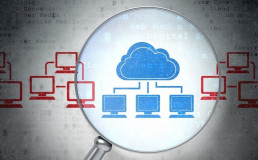
26. Bitnami Stacksmith
Bitnami offers different cloud tools for monitoring cloud infrastructure services from AWS, Microsoft Azure to Google Cloud Platform. Bitnami services help cluster administrators and operators manage applications on Kubernetes, virtual machines, and Docker. The monitoring tool simplifies the management of multi-cloud, cross-platform ecosystems. Bitnami accomplishes this by providing platform-optimized applications and infrastructure stack for each platform within a cloud environment.
Bitnami is easy to install and provides an interactive interface that simplifies its use. Bitnami Stacksmith features helps in installing many slacks on a single server with ease.
27. Zabbix
Zabbix is an enterprise-grade software built for real-time monitoring. The monitoring tool is capable of monitoring thousands of servers, virtual machines, network or IoT devices, and other resources. Zabbix is open source and employs diverse metric collection methods when monitoring IT infrastructure. Techniques such as agentless monitoring, calculation and aggregation, and end-user web monitoring make it a comprehensive tool to use.
Zabbix automates the process of troubleshooting while providing root cause analysis to pinpoint vulnerabilities. A single pane of glass offers a streamlined visualization window and insight into IT environments. Zabbix also integrates the use of automated notification alerts and remediation systems to troubleshoot issues or escalate them in real-time.
28. Cloudify
Cloudify is an end-to-end cloud infrastructure monitoring tool with the ability to manage hybrid environments. The monitoring tool supports IoT device monitoring, edge network monitoring, and troubleshooting vulnerabilities. Cloudify is an open-source monitoring tool that enables DevOps teams and IT managers to develop monitoring plugins for use in the cloud and on bare metal servers. Cloudify monitors on-premise IT infrastructure and hybrid ecosystems.
The tool makes use of Topology and Orchestration Specification for Cloud Applications (TOSCA) to handle its cloud monitoring and management activities. The TOSCA approach centralizes governance and control through network orchestration, which simplifies the monitoring of applications within IT environments.
29. Manage IQ
Manage IQ is a cloud infrastructure monitoring tool that excels in discovering, optimizing, and controlling hybrid or multi-cloud IT environments. The monitoring tool enables continuous discovery as it provides round-the-clock advanced monitoring capabilities across virtualization containers, applications, storage, and network systems.
Manage IQ brings compliance to monitoring IT infrastructure. The platform ensures all virtual machines, containers, and storage keep to compliance policies through continuous discovery. Manage IQ captures metrics from virtual machines to discover trends and patterns relating to system performance. The monitoring tool is open-source and provides developers with the opportunity to enhance application monitoring.
30. Prometheus
Prometheus is an open-source platform that offers enterprises with event monitoring and notification tools for cloud infrastructure. Prometheus records real-time metrics through graph queries, which aren’t similar to a virtualized dashboard. The tool must be hooked up to Grafana to generate full-fledged dashboards.
Prometheus provides its query language (PrmQL), which allows DevOps organizations to manage collected data from IT environments.
Learn how to monitor Kubernetes with Prometheus.
In Closing, Monitoring Tools for Cloud Computing
You want your developers to focus on building great software, not on monitoring. Cloud monitoring tools allow your team to focus on value-packed tasks instead of seeking errors or weaknesses in your setup.
Now that you are familiar with the best monitoring tools out there, you can begin analyzing your cloud infrastructure. Choose the tool that fits your needs the best and start building an optimal environment for your cloud-based operations.
Each option presented above has its pros and cons. Consider your specific needs. Many of these solutions offer free trials. Their programs are easy to install, so you can quickly test them to see if the solution is perfect for you.
Recent Posts
Types of Network Security Explained
There is a wide variety of network security hardware, software, and methods that can be combined to protect sensitive data against external attacks and insider threats.
This article outlines network security core principles and the most popular technologies used by cybersecurity professionals to reduce network vulnerabilities.
What is Network Security?
Network security is any practice or tool designed and implemented to secure a network and its data. It includes software, hardware, and cloud solutions. Effective network security tools stop a wide range of cyberattacks, and prevent attacks spreading throughout the network in case of a data breach.
In today’s cyber environment, every organization must implement network security processes and solutions to maintain the uptime of their online resources. All network security solutions are implemented in accordance with the core principles of network security.
Understanding the Principles of Network Security
The CIA Triad
The CIA triad consists of three core principles that work together to ensure network security. Any network security solution can be categorized as supporting one of the following principles:
- Confidentiality: Data is kept protected against threats and unauthorized access.
- Integrity: Data is kept accurate and trustworthy by preventing accidental or intentional alterations or deletion.
- Availability: Data is kept accessible to those who are authorized to have access.
Network Security Components
To deter cyberattacks and hacking attempts, a total of three types of network security components can be called upon – hardware, software, and cloud security components.
Hardware components include servers and devices that perform an array of security operations within a network. Hardware components can be set up in two ways:
- Out of the path of network traffic (“out-of-line”): Operating as a separate entity from network traffic, out-of-line security appliances are tasked with monitoring traffic and raising alerts when they detect malicious data.
- In the path of network traffic (“in-line”): A more popular option of the two, in-line hardware appliances are tasked with directly blocking data packets the moment they run into potential threats.
Security software components are installed on devices across the network, providing added detection capabilities and threat remediation. The far most common form of software network security components are antivirus applications.
Finally, cloud services entail offloading the security infrastructure onto a cloud provider. The protection strategy is similar to in-line hardware appliances as all the network traffic goes through the cloud provider. While there, the traffic gets scanned for potential threats before either being blocked or allowed into the network.
Sound networks usually rely on a combination of several security components working at once. This kind of a multi-layered defense system ensures that even if a threat manages to slip through the cracks of one component, another layer of protection will keep it from gaining access to the network.
Layered Security
Layered security is a network security practice that combines multiple security controls to protect networks against threats. By using a layered security approach, a network has the greatest amount of coverage possible to address the wide variety of security threats that could infiltrate the network. A layered security approach also provides added opportunities for threat detection and response in the event that a threat bypasses one of the security layers.
For example, in an effort to secure a house against outside intruders a homeowner may use a fence, locks on the doors, security cameras, and a guard dog. Each added layer of security increases the overall effectiveness of the defense strategy while simultaneously adding unique threat detection and prevention capabilities that complement and supplement the other security measures.
The Zero-Trust Framework
Zero-trust is a cybersecurity framework that emphasizes that organizations should not automatically allow traffic throughout the network, even if it comes from an internal source. This differs from the castle-and-moat framework, where network security is achieved by creating a hardened perimeter of security that is focused on addressing external threats.
The core concept of zero-trust is that traffic cannot be trusted until it is properly verified as being legitimate. This protects networks against insider threats and compromised credentials within the internal perimeter that would normally provide threat actors with minimal resistance as they spread throughout the network.
Verification is achieved through a variety of methods and technologies, including multi-factor authentication (MFA), identity and access management (IAM), and data analytics. In a segmented network, the verification systems that are in place continue to verify traffic as it passes along each of the segments to ensure that the user activity is legitimate throughout the entire session.
Types of Network Security, Tools, & Methods
Access Control & Authentication
Access control and authentication measures protect networks and data by validating user credentials and ensuring that those users are only permitted to access the data that is necessary for their role. Tools that aid access control and authentication include privileged access management (PAM), Identity as a Service (IaaS) providers, and network access control (NAC) solutions.
Access control and authentication solutions are also used to verify that valid users are accessing the network from secured endpoints. To verify, it performs a ‘health check’ that ensures the latest security updates and prerequisite software are installed on the endpoint device.
Anti-Virus & Anti-Malware
Anti-virus and anti-malware protect networks from malicious software that is used by threat actors to create a backdoor that they can use to further infiltrate the network. It’s important to note that while there are similarities between anti-virus and anti-malware programs, they are not exactly the same.
- Anti-Virus: Prevention-based, protects networks by proactively stopping endpoint devices from becoming infected.
- Anti-Malware: Treatment-based, protects networks by detecting and destroying malicious programs that have infiltrated the network.
As the nature of malicious software is continually evolving, implementing both network security options in conjunction is the best method for ensuring network security.
Application Security
Application security ensures that the software used throughout the network is secure. Application security is ensured by limiting the amount of software that is used, ensuring that software is kept up-to-date with the latest security patches and that applications developed for use in the network are appropriately hardened against potential exploits.
Behavioral Analytics
Behavioral analytics is an advanced threat detection method that compares historical network activity data to current events in an effort to detect anomalous behavior. An example of this would be if a user typically uses a given endpoint device to access a specific database somewhere between 3-4 times per day on average, an instance where that user instead uses a new endpoint device to access a different database several times would be flagged for review.
DDoS Prevention
Distributed denial-of-service (DDoS) attacks attempt to crash the network by overloading it with a large influx of incoming connection requests. DDoS prevention solutions analyze incoming requests to identify and filter out illegitimate traffic in an effort to maintain the network’s accessibility for legitimate connections.
DDoS attacks are either carried out through a distributed network of attackers that execute scripts to send a large volume of incoming requests to the network or through a widespread series of devices that have been compromised and converted into an orchestrated system known as a botnet.
Data Loss Prevention (DLP)
Data loss prevention (DLP) tools protect the data inside a network by preventing users from sharing sensitive or valuable information outside of the network and ensuring that data is not lost or misused. This can be accomplished by analyzing files that are sent via email, file transfers, and instant messages for data that is considered to be sensitive, such as personally identifiable information (PII).
Email Security
Email security measures protect networks from phishing attacks that attempt to trick users into clicking links to malicious websites or downloading seemingly innocent attachments that introduce malware into the network. Email security tools proactively fight phishing by identifying suspicious emails and filtering them out before they reach the user’s inbox.
According to the 2019 Verizon Data Breach Investigations Report (DBIR), 94% of malware was discovered to have been delivered via email and 32% of data breaches involved phishing attacks. Email security tools complement anti-phishing training by reducing the volume of malicious emails that pass through the network and into the inboxes of users.
Endpoint Security
Endpoint security protects networks by ensuring that the devices that will be connected to the network are secured against potential threats. Endpoint security is achieved alongside network security by combining several other network security tools such as network access control, application security, and network monitoring.
An endpoint device is any piece of hardware that is connected to a local area network (LAN) or wide area network (WAN), such as workstations, laptops, smartphones, printers, and mobile kiosks.
Firewalls
Firewalls are hardware appliances and software programs that act as a barrier between incoming traffic and the network. The firewall compares data packets that are sent over the network to predefined policies and rules that indicate whether or not the data should be permitted into the network.
Learn more about the different types of firewalls that exist.
The basic types are hardware and software firewall solutions.
Mobile Device Security
Mobile device security centers around limiting the access that mobile devices have to the network and ensuring that the security vulnerabilities of mobile devices that are permitted on the network are monitored and managed.
Mobile device security measures include mobile device management (MDM) solutions that allow administrators to segment sensitive data on mobile devices, enforce data encryption, determine the applications that are permitted to be installed, locate lost or stolen devices, and remotely wipe sensitive data.
Network Monitoring & Detection Systems
Network monitoring & detection systems include a wide variety of applications that are designed to monitor incoming and outgoing network traffic and respond to anomalous or malicious network activity.
Examples of network monitoring & detection systems:
- Intrusion Prevention Systems (IPS) scan network traffic for suspicious activity such as policy violations in an effort to automatically block intrusion attempts.
- Intrusion Detection Systems (IDS) work similarly to IPS, with an emphasis on monitoring network packets and flagging suspicious activity for review.
- Security Information And Event Management (SIEM) provide a detailed overview of network events using a combination of host-based and network-based intrusion detection methods. SIEM systems provide administrators with valuable log data for investigating security incidents and flagging suspicious behavior.
Network Segmentation
Network segmentation is a common network security practice for reducing the ease of which network security threats can spread. Network segmentation involves classifying a larger network into multiple subnetworks, with each subnetwork being managed with its own unique access controls. Each subnetwork acts as its own unique network to improve monitoring capabilities, boost network performance, and enhance security.
Virtual Private Networks (VPN)
Virtual private networks provide secure remote access from a given endpoint into a network. A VPN encrypts all network traffic that goes through it to prevent the unauthorized analysis of data sent to and from the network. It is often used by off-site workers that need a secure connection to their company’s network, allowing them to access data and applications that are necessary for their role.
Do you own or lease a server?
Learn how to protect it with our 21 Server Security Tips.
Web Security
Web security protects networks by proactively protecting endpoint devices against web-based threats. Web security technologies such as a web filter will use a database of known malicious or vulnerable websites to maintain a blacklist, block commonly exploited network ports, and prevent users from engaging in high-risk activities on the internet.
Web filtering solutions can be configured to only allow pre-authorized domains that are on the web filter’s whitelist. When a whitelist is used the web filter will block access to all websites that are not on the whitelist.
Web security products may also include capabilities for analyzing connection requests to a website and determining if the website meets the minimum security requirements of the network before allowing users to access it.
Wireless Security
Wireless security measures protect the network against vulnerabilities that are unique to wireless connections. Wi-Fi networks openly broadcast connections to nearby devices, creating added opportunities for nearby threat actors to attempt to access the network. Wireless security is enhanced through methods such as encrypting data passed over wireless networks, filtering MAC addresses to restrict access, and privatizing the network SSID to avoid broadcasting the name of the network.
Conclusion
To truly protect a network, multiple specialized hardware and software need to be installed and managed. By implementing a layered network security approach with tools that support the principles of the CIA triad, a network can be secured against a wide array of vulnerabilities.
This article was written in collaboration with Dale Strickland, Marketing Coordinator at CurrentWare.
Recent Posts
What is a Brute Force Attack? Types & Examples
Brute force attacks are alluring for hackers as they are often reliable and simple.
Hackers do not need to do much of the work. All they have to do is create an algorithm or use readily available brute force attack programs to automatically run different combinations of usernames and passwords until they find the right combination. Such cyberattacks account for roughly 5 percent of all data breaches. According to statistics on data breaches, it only takes one data breach to create severe adverse implications for your business.
What is a Brute Force Attack?
The phrase “brute force” describes the simplistic manner in which the attack takes place. Since the attack involves guessing credentials to gain unauthorized access, it’s easy to see where it gets its name. Primitive as they are, brute force attacks can be very effective.
The majority of cyberattackers who specialize in brute force attacks use bots to do their bidding. Attackers will generally have a list of real or commonly used credentials and assign their bots to attack websites using these credentials.
Manual brute force cracking is time-consuming, and most attackers use brute force attack software and tools to aid them. With the tools at their disposal, attackers can attempt things like inputting numerous password combinations and accessing web applications by searching for the correct session ID, among others.
How Brute Force Attacks Work
In simple terms, brute force attacks try to guess login passwords. Brute force password cracking comes down to a numbers game.
For most online systems, a password is encouraged to be at least eight characters long. Most passwords are eight characters long but are often a mix of numeric and alphabetic (case sensitive) characters, which is 62 possibilities for a given character in a password chain. If we combine 62 options for every character in an eight-character password, the result would be 2.18 trillion possible combinations. That is a lot of combinations for a cyberattacker to try.
In the past, if a hacker tried to crack an eight-character password with one attempt per second, it would roughly take seven million years at most. Even if the hacker were able to attempt 1000 combinations per second, it would still take seven thousand years.
It’s a different story nowadays with brute force hacking software having the power to attempt vastly more combinations per second than mentioned above. For example, let’s say a supercomputer can input 1 trillion combinations per second. With that amount of power, a hacker can reduce the time it takes to try 2.18 trillion password/username combinations to just 22 seconds!
Computers manufactured within the last decade have advanced to the point where only two hours are necessary to crack an eight-character alphanumeric password. Many cyber attackers can decrypt a weak encryption hash in months by using an exhaustive key search brute force attack.
The example above applies to password combinations of 8 characters in length. The time it takes to crack a password varies depending on its length and overall complexity.
Why Hackers Use Brute Force Attacks?
Hackers use brute force attacks during initial reconnaissance and infiltration. They can easily automate brute force attacks and even run them in parallel to maximize their chances of cracking credentials. However, that is not where their actions stop.
Once they gain access to a system, attackers will attempt to move laterally to other systems, gain advanced privileges, or run encryption downgrade attacks. Their end goal is to cause a denial of service and get data out of the system.
Brute force attacks are also used to find hidden web pages that attackers can exploit. This attack can be programmed to test web addresses, find valid web pages, and identify code vulnerabilities. Once identified, attackers use that information to infiltrate the system and compromise data.
Brute force attack programs are also used to test systems and their vulnerability to such attacks. Furthermore, a targeted brute force attack is a last resort option for recovering lost passwords.
Types of Brute Force Attacks
Brute force cracking boils down to inputting every possible combination access is gained. However, there are variants of this kind of attack.
Dictionary Attack
A dictionary attack uses a dictionary of possible passwords and tests them all.
Instead of using an exhaustive key search, where they try every possible combination, the hacker begins from an assumption of common passwords. They build a dictionary of passwords and iterate the inputs.
With this approach, hackers eliminate having to attack websites randomly. Instead, they can acquire a password list to improve their chances of success.
Dictionary attacks often need a large number of attempts against multiple targets.
Simple Brute Force Attack
A simple brute force attack is used to gain access to local files, as there is no limit to the number of access attempts. The higher the scale of the attack, the more successful the chances are of entry.
Simple brute force attacks circulate inputting all possible passwords one at a time.
Hybrid Brute Force Attack
The hybrid brute force attack combines aspects of both the dictionary and simple brute force attack. It begins with an external logic, such as the dictionary attack, and moves on to modify passwords akin to a simple brute force attack.
The hybrid attack uses a list of passwords, and instead of testing every password, it will create and try small variations of the words in the password list, such as changing cases and adding numbers.
Reverse Brute Force Attack
The reverse brute force attack flips the method of guessing passwords on its head. Rather than guessing the password, it will use a generic one and try to brute force a username.
Credential Recycling
As it sounds, credential recycling reuses passwords. Since many institutions don’t use password managers or have strict password policies, password reuse is an easy way to gain access to accounts.
Because these cyberattacks depend entirely on lists of second-hand credentials gained from data breaches, they have a low rate of success. It’s essential to update usernames and passwords after a breach regularly, to limit the effectiveness of stolen credentials.
Rainbow Table Attacks
Rainbow table attacks are unique as they don’t target passwords; instead, they are used to target the hash function, which encrypts the credentials.
The table is a precomputed dictionary of plain text passwords and corresponding hash values. Hackers can then see which plain text passwords produce a specific hash and expose them.
When a user enters a password, it converts into a hash value. If the hash value of the inputted password matches the stored hash value, the user authenticates. Rainbow table attacks exploit this process.
If you’re concerned about impending cyber threats, a phoenixNAP consultant can walk you through our Data Security Cloud, the world's safest cloud with an in-built threat management system.
Examples of Brute Force Attacks
How common are brute force attacks?
Brute force attacks are so frequent that everyone, from individuals to enterprises operating in the online realm, has experienced such an attack. The organizations that have been hit the hardest in the last couple of years include:
- In 2018, Firefox’s master password feature was proven to be easily cracked with a brute force attack. It is unknown how many users’ credentials were exposed. In 2019. Firefox deployed a fix to resolve this issue.
- In March 2018, Magento was hit by a brute force attack. Up to 1000 admin panels had been compromised.
- In March 2018, several accounts of members of the Northern Irish Parliament had been compromised in a brute force attack.
- In 2016, a brute force attack resulted in a massive data leak in the e-Commerce giant, Alibaba.
- According to Kaspersky, RDP-related brute force attacks rose dramatically in 2020 due to the COVID-19 pandemic.
Every brute force attack’s end-goal attack is to steal data and/or cause a disruption of service.
How to Detect Brute Force Attacks
The key indication a bad actor is trying to brute force their way into your system is to monitor unsuccessful login attempts. If you see there have been many repeated failed login attempts, be suspicious. Watch for signs related to multiple failed login attempts from the same IP address and the use of multiple usernames from the same IP address.
Other signs can include a variety of unrecognized IP addresses unsuccessfully attempting to login to a single account, an unusual numerical or alphabetical pattern of failed logins, and multiple login attempts in a short time period.
It’s also possible for these cyberattacks to add you to a botnet that can perform denial-of-service attacks on your website. Aside from the above, spam, malware, and phishing attacks can all be the prerequisite of a brute force attack.
If you receive an email from your network service provider notifying you of a user from an unrecognized location logged into your system, immediately change all passwords and credentials.
In Conclusion, Stay Safe and Secure
The primitive nature of brute force attacks means there is an easy way to defend against them. The best defense against a brute force attack is to buy yourself as much time as you can, as these types of attacks usually take weeks or months to provide anything of substance to the hacker. The simplest precaution you can take to boost your accounts’ security is to use strong passwords.
It is also highly recommended to monitor servers and systems at all times. Utilizing a threat management system can significantly help as it detects and reports issues in real-time.
For more information, read our detailed knowledge base article on how to prevent brute force attacks.
Recent Posts
How to Leverage Object Storage with Veeam Backup Office 365
Introduction
phoenixNAP Managed Backup for Microsoft Office 365 solution powered by Veeam has gained popularity amongst Managed Service Providers and Office 365 administrators in recent years.
Following the publication of our KB article, How To Install & Configure Veeam Backup For Office 365, we wanted to shed light on how one can leverage Object Storage as a target to offload bulk Office 365 backup data. Object Storage support has been introduced in the recent release of Veeam Backup for Office 365 v4 as of November 2019. It has significantly increased the product’s ability to offload backup data to cloud providers.
Unlike other Office 365 backup products, VBO has further solidified the product’s flexibility benefits to be deployed in different scenarios, on-premises, as a hybrid cloud solution, or as a cloud service. phoenixNAP has now made it easier for Office 365 Tenants to leverage Object Storage, and for MSPs to increase margins as part of their Managed Backup service offerings. It’s simple deployment, lower storage cost and ability to scale infinitely has made Veeam Backup for Office 365 a top performer amongst its peers.
In this article, we will be discussing the importance of taking Office 365 backup, explain Object Storage architecture in brief and present the necessary steps required to configure Object Storage as a backup repository for Veeam Backup for Office 365.
You may have different considerations in the way the product should be configured. Nonetheless, this blog will focus on leveraging Object Storage as a backup target for Office 365 data. Since Veeam Backup for Office 365 can be hosted in many ways, this blog will remain deployment-neutral as the process required to add Object Storage target repository is common to all deployment models.
Why Should We Backup Office 365?
Some misconceptions which frequently surface when mentioning Office 365 backup is the idea that since Office 365 data resides on Microsoft cloud, such data is already being taken care of. To some extent they do, Microsoft goes a long way to have this service highly available and provide some data retention capabilities, but they still make it clear that as per the Shared Responsibility Model and GDPR regulation, the data owner/controller is still the one responsible for Office 365 data. Even if they did, should you really want to place all the eggs in one basket?
Office 365 is not just limited to email communication – Exchange Online, but it is also the service used for SharePoint Online, OneDrive, and Teams which are most commonly used amongst organizations to store important corporate data, collaborate, and support their distributed remote workforce. At phoenixNAP we’re here to help you elevate Veeam Backup for Office 365 and assist you in recovering against:
- Accidental deletion
- Overcome retention policy gaps
- Fight internal and external security threats
- Meet legal and compliance requirements
This further solidifies our reason why you should also opt for Veeam Backup for Office 365 and leverage phoenixNAP Object Storage to secure and maintain a solid DRaaS as part of your Data Protection Plan.
Object Storage
What is object storage?
Object Storage is another type of data storage architecture that is best used to store a significant amount of unstructured data. Whereas File Storage data is stored in a hierarchical way to retain the original structure but is complex to scale and expensive to maintain, Object Storage stores data as objects typically made up of the data itself, a variable amount of metadata and unique identifiers which makes it a smart and cost-effective way to store data.
Cache helps in cost reduction and is aimed at reducing cost expensive operations, this is especially the case when reading and writing data to/from object storage repositories. With the help of cache, Veeam Explorer is powerful enough to open backups in Object Storage and use metadata to obtain the structure of the backup data objects. Such a benefit allows the end-user to navigate through backup data without the need to download any of it from Object Storage. Large chunks of data are first compressed and then saved to Object Storage. This process is handled by the Backup Proxy server and allows for a smarter way to store data. When using object storage, metadata and cache both reside locally, backup data is transferred and located in Object Storage
In this article, we’ll be speaking on how Object Storage is used as a target for VBO Backups, but one must point out that as explained in the picture below, other Veeam products are also able to interface with Object Storage as a backup repository.
Why should we consider using it?
With the right infrastructure and continuous upkeep, Office 365 administrators and MSPs are able to design an on-premise Object Storage repository to directly store or offload O365 backup data as needed but to fully achieve and consume all its benefits, Object Storage on cloud is the ideal destination for Office 365 backups due to its simpler deployment, unlimited scalability, and lower costs;
- Simple Deployment
As noted further down in this article one will have a clear picture of the steps required to set up an Object Storage repository on the cloud. With a few necessary pre-requires and proper planning, one can have this repository up and running in no time by following a simple wizard to create an Object Storage repository and present it as a backup repository. - Easily Scalable
While the ability to scale and design VBO server roles as needed is already a great benefit, the ability to leverage Object Storage to a cloud provider makes harnessing backup data growth easier to achieve and highly redundant. - Lower Cost Capabilities
An object-based architecture is the most effective way for organizations to store large amounts of data and since it utilizes a flat architecture it consumes disk space more efficiently thus benefiting from a relatively low cost without the overhead of traditional file architectures. Additionally, with the help of retention policies and storage limits, VBO provides great ways on how one can keep costs under control.
Veeam Backup for Microsoft Office 365 is licensed per user account and supports a variety of licensing options such as Subscription or Rental based licenses. In order to use Object Storage as a backup target, a storage account from a cloud service provider is required but other than that, feel free to start using it!
VBO Deployment Models
For the benefit of this article, we won’t be digging in too much detail on the various deployment models that exist for VBO, but we believe that you ought to know about the various models that exist when opting for VBO.
VBO can run on-premises, private cloud, and public cloud environments. O365 tenants have the flexibility to choose from different designs based on their current requirements and host VBO wherever they deem right. In any scenario, a local primary backup repository is required as this will be the direct storage repository for backups. Object Storage can then be leveraged to offload bulk backup data to a cheaper and safer storage solution provided by a cloud service provider like phoenixNAP to further achieve disaster recovery objectives and data protection.
In some instances, it might be required to run and store VBO in different infrastructures for full disaster recovery (DR) purposes. Both O365 tenants and MSPs are able to leverage the power of the cloud by collaborating with a VCSP like phoenixNAP to provide them the ability to host and store VBO into a completely different infrastructure while providing self-service restore capabilities to end-users. For MSPs, this is a great way to increase revenue by offering managed backup service plans for clients.
The prerequisites and how these components work for each environment are very similar, hence for the benefit of this article the following Object Storage configuration is generally the same for each type of deployment.
Click here to see the image in full size.
Configuring Object Storage in Veeam Backup for Office 365
As explained in the previous section, although there are different ways on how one can deploy VBO, the procedure to configure and set up Object Storage repository is quite similar in any case, hence no specific attention will be given to a particular deployment model during the following configuration walk-through.
This section of the document will assume that the initial configuration as highlighted with checkmarks below, has so far been accomplished and in a position to; set up Object Storage as a Repository, Configure the local Repository, Secure Object Storage and Restore Backup Data.
- Defined Policy-based settings and retention requirements according to Data Protection Plan and Service Costs
- Object Storage cloud account details and credentials in hand
- Office 365 prerequisite configurations to connect with VBO
- Hosted and Deployed VBO
- Installed and Licensed VBO
- Created an Organization in VBO
Adding S3 Compatible Object Storage Repository*
Adding Local Backup Repository
Secure Object Storage
Restore Backup Data
* When opting for Object Storage, it is a suggested best practice that S3 Object Storage configuration is set up in advance, this will come in handy when asked for Object Storage repository option when adding the Local Backup Repository.
Adding S3 Compatible Object Storage Repository
Step 1. Launch New Object Storage Repository Wizard
Right-click Object Storage Repositories, select Add object storage.
Step 2. Specify Object Storage Repository Name
Enter a Name for the Object Storage Repository and optionally a Description. Click Next.
Step 3. Select Object Storage Type
On the new Object storage type page, select S3 Compatible (phoenixNAP compatible). Click Next.
Step 4. Specify Object Storage Service Point and Account
Specify the Service Point and the Datacenter region. Click Add to specify the credentials to connect with your cloud account.
If you already have a credentials record that was configured beforehand, select the record from the drop-down list. Otherwise, click Add and provide your access and secret keys, as described in Adding S3-Compatible Access Key. You can also click Manage cloud accounts to manage existing credentials records.
Enter the Access key, the Secret key, and a Description. Click OK to confirm.
Step 5. Specify Object Storage Bucket
Finalize by selecting the Bucket to use and click Browse to specify the folder to store the backups. Click New folder to create a new folder and click OK to confirm
Clicking Advanced lets you specify the storage consumption soft limit to keep costs under control, this will be the global retention storage policy for Object Storage. As a best practice, this consumption value should be lower than the Object Storage repository amount you’re entitled to from the cloud provider in order to leave room for additional service data.
Click OK followed by Finish.
Adding Local Backup Repository
Step 1. Launch New Backup Repository Wizard
Open the Backup Infrastructure view.
In the inventory pane, select the Backup Repositories node.
On the Backup Repository tab, click Add Repository on the ribbon.
Alternatively, in the inventory pane, right-click the Backup Repositories node and select Add backup repository.
Step 2. Specify Backup Repository Name
Specify Backup Repository Name and Description then click Next.
Step 3. Specify Backup Proxy Server
When planning to extend a backup repository with object storage, this directory will only include a cache consisting of metadata. The actual data will be compressed and backed up directly to object storage that you specify in the next step.
Specify the Backup Proxy to use and the Path to the location to store the backups. Click Next.
Step 4. Specify Object Storage Repository
At this step of the wizard, you can optionally extend a backup repository with object storage to back up data directly to the cloud.
To extend a backup repository with object storage, do the following:
- Select the Offload backup data to the object storage checkbox.
- In the drop-down list, select an object storage repository to which you want to offload your data.
Make sure that an object storage repository has been added to your environment in advance. Otherwise, click Add and follow the steps of the wizard, as described in Adding Object Storage Repositories. - To offload data encrypted, select Encrypt data uploaded to object storage and provide a password.
Step 5. Specify Retention Policy Settings
At this step of the wizard, specify retention policy settings.
Depending on how retention policies are configured, any obsolete restore points are automatically removed from Object Storage by VBO. A service task is used to calculate the age of offloaded restore points, when this exceeds the age of the specified retention period, it automatically purges obsolete restore points from Object Storage.
- In the Retention policy drop-down list, specify how long your data should be stored in a backup repository.
- Choose a retention type:
- Item-level retention.
Select this type if you want to keep an item until its creation time or last modification time is within the retention coverage.
- Item-level retention.
- Snapshot-based retention.
Select this type if you want to keep an item until its latest restore point is within the retention coverage.
- Click Advanced to specify when to apply a retention policy. You can select to apply it on a daily basis, or monthly. For more information, see Configuring Advanced Settings.
Configuring Advanced Settings
After you click Advanced, the Advanced Settings dialog appears in which you can select either of the following options:
- Daily at:
Select this option if you want a retention policy to be applied on a daily basis and choose the time and day.
- Monthly at:
Select this option if you want a retention policy to be applied on a monthly basis and choose the time and day, which can be the first, second, third, fourth or even the last one in the month.
Securing Object Storage
To ensure Backup Data is kept safe and secure from any possible vulnerabilities, one must make sure to secure the backup application itself, and its communication channels. Veeam has made this possible by continuously implementing key security measures to address and mitigate any possible threats while providing us with some great security functionalities to interface with Object Storage.
VBO v4 can provide the same level of protection for your data irrelevant to any deployment model used. Communications between VBO components are always encrypted and all communication between Microsoft Office 365 and VBO is encrypted by default. When using object storage, data can be protected with optional encryption at-rest.
VBO v4 also introduces a Cloud Credential Manager which lets us create and maintain a solid list of credentials provided by any of the Cloud Service Providers. These records allow us to connect with the Object Storage provider to store and offload backup data. Credentials will consist of access and secret keys and work with any S3-Compatible Object Storage.
Password Manager lets us manage encryption passwords with ease. One can create passwords to protect encryption keys that are used to encrypt data being transferred to object storage repositories. To encrypt data, VBO uses the AES-256 specification.
Watch one of our experts speak about the importance of Keeping a Tight Grip on Office 365 Security While Working Remotely.
Restoring from Object Storage
Restoring backup data from Object Storage is just as easy as if you’re restoring from any traditional storage repositories. As explained earlier in this article, Veeam Explorer is the tool used to open and navigate through backups without the need to download any of it.
Veeam Explorer uses metadata to obtain the structure of the backup data objects and once backup data has been identified for restore, you may choose to select any of the available restore options as required. When leverage Object Storage on the cloud, one is also able to host Veeam explorer locally and use it to restore Office 365 backup data from the cloud.
Where Does phoenixNAP Come into Play?
- Pricing per mailbox as low as $2 per mailbox
- Hosting S3-Compatible Object Storage
- Hosting Veeam Backup for Office 365 – Backup Proxy Server on our secure cloud platform
- VCSP information
For more information, please look at our product pages and use the form to request additional details or send an e-mail to sales@phoenixnap.com
Abbreviations Table
| DRaaS | Disaster Recovery as a Service |
| GDPR | General Data Protection Regulation |
| MSP | Managed Service Provider |
| O365 | Microsoft Office 365 |
| VBO | Veeam Backup for Office 365 |
| VCC | Veeam Cloud Connect |
| VCSP | Veeam Cloud & Service Provider |
17 Best Server Monitoring Software & Tools for 2020
The adoption of cloud technologies has made setting up and managing large numbers of servers for business and application needs quite convenient. Organizations opt for high amounts of servers to satisfy load balancing needs and also to cater to situations like disaster recovery.
Given these trends, server monitoring tools have become extremely important. While there are many types of server management tools, they cater to different aspects of monitoring servers. We looked at 17 of the best software tools for monitoring servers in this article.
Best Monitoring Tools for Servers
1. Nagios XI
A list of tools server monitoring software, would not be complete without Nagios. It’s a reliable tool to monitor server health. This Linux based monitoring system provides real-time monitoring of operating systems, applications, infrastructure performance monitoring, and systems metrics.
A variety of third-party plugins makes Nagios XI able to monitor all types of in-house applications. Nagios is equipped with a robust monitoring engine and an updated web interface to facilitate excellent monitoring capabilities through visualizations such as graphs.
Getting a central view of your server and network operations is the main benefit of Nagios. Nagios Core is available as a free monitoring system. Nagios XI comes recommended due to its advanced monitoring, reporting, and configuration options.
2. WhatsUp Gold
WhatsUp Gold is a well-established monitoring tool for Windows servers. Due to its robust layer 2/3 discovery capabilities, WhatsUp Gold can create detailed interactive maps of the entire networked infrastructure. It can monitor web servers, applications, virtual machines, and traffic flow across Windows, Java, and LAMP environments.
It provides real-time alerts via email and SMS in addition to the monitoring and management capabilities offered in the integrated mobile application. The integrated REST API’s features include capabilities such as integrating monitoring data with other applications and automating many tasks.
WhatsUp Gold provides specific monitoring solutions for AWS, Azure, and SQL Server environments. These integrate with native interfaces and collect data regarding availability, cost, and many other environment-specific metrics.
3. Zabbix
Zabbix is a free and open-source Linux server monitoring tool. It is an enterprise-level monitoring solution and facilitates monitoring servers, networks, cloud services, applications, and services. One of its most significant advantages is the ability to configure directly from the web interface, rather than having to manage text files like on some other tools like Nagios.
Zabbix provides a multitude of metrics like CPU usage, free disk space, temperature, fan state, and network status in its network management software. Also, it provides ready-made templates for popular servers like HP, IBM, Lenovo, Dell, and operating systems such as Linux, Ubuntu, and Solaris.
The monitoring capabilities of Zabbix are enhanced even more through the possibility of setting complex triggers and dependencies for data collection and alerting.
4. Datadog
Datadog is a consolidated monitoring platform for your servers, applications, and stacks. Named a leader in intelligent application and server monitoring in 2019 by Forrester Wave, Datadog boasts of a centralized dashboard that brings many metrics together.
Datadog’s monitoring features include those required for servers and into the realm of source control and bug tracking as well. It also facilitates many metrics, such as traffic by source and containers in cloud-native environments. Notifications are available by email, Slack, and many other channels.
Mapping dependencies and application architecture across teams has allowed users of Datadog to build a complete understanding of how applications and data flow work across large environments.
5. SolarWinds Server and Application Monitor
SolarWinds monitors your server infrastructure, applications, databases, and security. Its Systems Management Software provides monitoring solutions for servers, virtualization, disk space, server configurations, and backups.
The main advantage here is that SolarWinds Server and Application Monitor allows getting started within minutes thanks to their vast number of (1,200+) pre-defined templates for many types of servers and cloud services. These templates can quickly be customized to suit virtually any kind of setup.
SolarWinds application monitoring boasts a comprehensive system for virtual servers across on-premise, cloud, and hybrid environments to overcome VM Sprawl and having to switch to different tools. Tools are available for capacity planning, event monitoring, and data analysis with alerts and dashboards.
6. Paessler PRTG
Paessler Router Traffic Grapher is a server management software that uses SNMP, Packet Sniffing, and Netflow. PRTG caters to both Windows servers and Linux environments. A wide range of server monitoring software applications is available for services, network, cloud, databases, and applications.
The PTRG server monitoring solution caters to web servers, database servers, mail, and virtual servers. Cloud monitoring is the strong suit of PTRG, providing a centralized monitoring system for all types of IAAS / SAAS / PAAS solutions such as Amazon, Docker, and Azure.
PTRG monitors firewalls and IPs to ensure inbound and outbound traffic. It will provide regular updates regarding firewall status and automatic notifications through the integrated web and mobile applications continually monitoring your network security.
7. OpenNMS
OpenNMS is a fully open-source server monitoring solution published under the AGPLv3 license. It is built for scalability and can monitor millions of devices from a single instance.
It has a flexible and extensible architecture that supports extending service polling and performance data collection frameworks. OpenNMS is supported both by a large community and commercially by the OpenNMS group.
OpenNMS brings together the monitoring of many types of servers and environments by normalizing specific messages and disseminating them through a powerful REST API. Notifications are available via email, Slack, Jabber, Tweets, and the Java native notification strategy API. OpenNMS also provides ticketing integrations to RT, JIRA, OTRS, and many others.
8. Retrace
Retrace includes robust monitoring capabilities and is highly scalable. It is recommended for new teams without much experience as it provides smart defaults based on your environment. This program gives you a headstart in monitoring servers and applications.
It monitors application performance, error tracking, log management, and application metrics. Retrace notifies relevant users via SMS, email, and Slack alerts based on multiple monitoring thresholds and notifications groups.
Custom dashboards allow Retrace to provide both holistic and granular data regarding server health. These dashboard widgets collect data on CPU usage, disk space, network utilization, and uptime. Retrace supports both Windows servers as well as Linux.
9. Spiceworks Network Monitor
Spiceworks is a simplified free server monitoring software for server and network monitoring. The connectivity dashboard can be set up on any server in minutes, and after application URL configuration, monitoring can begin immediately.
You will be able to receive real-time insights regarding slow network connections and overloaded applications, both on-premise as well as on the cloud. You will be able to fix issues before they become problematic. One disadvantage is that there is no proper mechanism for notifications. Spiceworks has promised a solution to this soon through email alerts for server and application events.
The monitoring solution is fully integrated with the Spiceworks IT management cloud tools suite and also provides free support through online chat and phone.
10. vRealize Hyperic
An open-source tool for server and network monitoring from VMware, vRealize Hyperic provides monitoring solutions for a wide range of operating systems. Including middleware and applications in both physical and virtual environments.
Infrastructure and OS application monitoring tools allow users to understand availability, utilization, events, and changes across every layer of your virtualization stack, from the vSphere hypervisor to guest OSs.
Middleware monitors collect data of thousands of metrics useful for application performance monitoring. The vRealize Operations Manager application provides centralized monitoring for infrastructure, middleware, and applications.
11. Icinga
Icinga has a simple set of goals, monitor availability, provide access to relevant data, and raise alerts to keep users informed promptly. The integrated monitoring engine is capable of monitoring large environments, including data centers.
The fast web interface gives you access to all relevant data. Users will be able to build custom views by grouping and filtering individual elements and combining them in custom dashboards. This setup allows you to take quick action to resolve any issues it’s identified.
Notifications arrive via email, SMS, and integrated web and mobile applications. Icinga is fully integrated with VMware environments and fetches data about hosts, virtual servers, databases, and many other metrics and displays them on a clean dashboard.
12. Instrumental
Instrumental is a clean and intuitive application that monitors your server and applications. It provides monitoring capabilities across many platforms such as AWS and Docker, many database types, and applications stacks such as .Net, Java, Node.js, PHP, Python, and Ruby.
In addition to the native methods available to collect data, Instrumental also integrates with many other platforms like Statiste, telegraf, and StatsD. The built-in query language allows you to transform, aggregate, and time-shift data to suit any visualization you require.
A purposefully designed dashboard interface allows viewing holistic data as well as digging deep into each server and application. Instrumental provides configurable alerts via email, SMS, and HTTP notification based on changes to metrics.
13. Tornimo
Tornimo brings real-time monitoring with unlimited scaling. It is a Graphite compatible application monitoring platform with a front end build on Grafana dashboards. It also provides support for switching from a custom Graphite deployment or many other compatible SaaS platforms in minutes.
Tornimo uses a proprietary database system that allows it to handle up to a million metrics as your environment grows. Clients trust Tornimo to monitor mission-critical systems irrespective of the amount of data they need to monitor as it offers consistent response times.
A significant advantage of Tornimo over many other monitoring tools is that it does not average older data to save on storage. It allows users to leverage older data to identify anomalies with ease.
14. ManageEngine OpManager
OpManager from ManageEngine is a trusted server monitoring software that has robust monitoring capabilities for all types of network nodes such as routers and switches, servers, VMs, and almost anything that has an IP.
With over 2,000 built-in server performance monitoring tools, OpManager’s monitoring tools for servers cater to both physical and virtual servers with multi-level thresholds and instant alerts. It provides customizable dashboards to monitor your network at a glance.
As a server monitoring solution for Windows, Linux, Solaris, and Unix, OpManager supports system health monitoring and process monitoring through SNMP and WMI for many platforms such as VMware, Hyper-V, and Citrix XenServer.
15. Sciencelogic SL1
The server management tools from Sciencelogic allow you to monitor all your server and network resources based on their configurations, performance, utilization, and capacity spanning across a multitude of vendors and server technologies.
Supported platforms include cloud services such as AWS, Azure, Google Cloud, and OpenStack. Sciencelogic also supports Hypervisors like VMware, Hyper-V, Xen, and KVM as well as containers like Docker. In terms of operating systems, it supports Windows, Unix, and Linux.
Sciencelogic’s custom dashboards allow monitoring through ready-made or custom monitoring policies, using health checks and ticket queues associated with pre-defined events. It uses advanced API connectivity to merge with cloud services and provide accurate data for monitoring.
16. Panopta
Panopta facilitates server and network monitoring for on-premise, cloud, and hybrid servers. Panopta provides a unified view across all your server environments through server agents and native cloud platform integrations.
A comprehensive library of out-of-the-box metrics makes setting up Panopta quick and convenient. You can configure these via reporting features and customizable dashboards for a clear, holistic view. It avoids alert fatigue and false positives by filtering through accurate and actionable information.
CounterMeasures is a tool offered by Panopta to configure pre-defined remedial actions to resolve recurring issues as they are detected. Panopta’s SaaS-delivered monitoring platform allows organizations to have a single point for monitoring all its infrastructure without any additional equipment or worrying about which OS they use and licenses.
17. Monitis
Monitis is a simplified monitoring tool for servers, applications, and more with a simple sign-up process and no software to be set up. A unified dashboard provides data on uptime and response time, server health, and many other custom metrics.
Instant alerts are supported via email, SMS, Twitter, and phone when any of the pre-defined triggers are activated. Monitis supports alerts even when your network is down. It also provides an API for additional monitoring needs so that users can import metrics and data to external applications.
Monitis provides monitoring capabilities along with reporting that users can share. Users can access these features through both the web interface as well as the integrated mobile applications.
Choosing Server Monitoring Software
The top server monitoring tools we listed have one goal in common – to monitor the uptime and health of your servers and applications. Most of these tools offer free trials or free versions with limited functionality, so make sure to try them out before selecting the best server monitoring tool for your servers.
Looking for application performance monitoring tools, then read our guide on the 7 Best Website Speed and Performance Testing Tools.
If you would like to learn more, bookmark our blog and follow the latest developments on servers, container technology, and many other cloud-related topics.
Recent Posts
17 Best Vulnerability Assessment Scanning Tools
Vulnerability scanning or vulnerability assessment is a systematic process of finding security loopholes in any system addressing the potential vulnerabilities.
The purpose of vulnerability assessments is to prevent the possibility of unauthorized access to systems. Vulnerability testing preserves the confidentiality, integrity, and availability of the system. The system refers to any computers, networks, network devices, software, web application, cloud computing, etc.
Types of Vulnerability Scanners
Vulnerability scanners have their ways of doing jobs. We can classify the vulnerability scanners into four types based on how they operate.
Cloud-Based Vulnerability Scanners
Used to find vulnerabilities within cloud-based systems such as web applications, WordPress, and Joomla.
Host-Based Vulnerability Scanners
Used to find vulnerabilities on a single host or system such as an individual computer or a network device like a switch or core-router.
Network-Based Vulnerability Scanners
Used to find vulnerabilities in an internal network by scanning for open ports. Services running on open ports determined whether vulnerabilities exist or not with the help of the tool.
Database-Based Vulnerability Scanners
Used to find vulnerabilities in database management systems. Databases are the backbone of any system storing sensitive information. Vulnerability scanning is performed on database systems to prevent attacks like SQL Injection.
Vulnerability Scanning Tools
Vulnerability scanning tools allow for the detection of vulnerabilities in applications using many ways. Code analysis vulnerability tools analyze coding bugs. Audit vulnerability tools can find well-known rootkits, backdoor, and trojans.
There are many vulnerability scanners available in the market. They can be free, paid, or open-source. Most of the free and open-source tools are available on GitHub. Deciding which tool to use depends on a few factors such as vulnerability type, budget, frequency of how often the tool is updated, etc.
1. Nikto2
Nikto2 is an open-source vulnerability scanning software that focuses on web application security. Nikto2 can find around 6700 dangerous files causing issues to web servers and report outdated servers based versions. On top of that, Nikto2 can alert on server configuration issues and perform web server scans within a minimal time.
Nikto2 doesn’t offer any countermeasures for vulnerabilities found nor provide risk assessment features. However, Nikto2 is a frequently updated tool that enables a broader coverage of vulnerabilities.
2. Netsparker
Netsparker is another web application vulnerability tool with an automation feature available to find vulnerabilities. This tool is also capable of finding vulnerabilities in thousands of web applications within a few hours.
Although it is a paid enterprise-level vulnerability tool, it has many advanced features. It has crawling technology that finds vulnerabilities by crawling into the application. Netsparker can describe and suggest mitigation techniques for vulnerabilities found. Also, security solutions for advanced vulnerability assessment are available.
3. OpenVAS
OpenVAS is a powerful vulnerability scanning tool that supports large-scale scans which are suitable for organizations. You can use this tool for finding vulnerabilities not only in the web application or web servers but also in databases, operating systems, networks, and virtual machines.
OpenVAS receives updates daily, which broadens the vulnerability detection coverage. It also helps in risk assessment and suggests countermeasures for the vulnerabilities detected.
4. W3AF
W3AF is a free and open-source tool known as Web Application Attack and Framework. This tool is an open-source vulnerability scanning tool for web applications. It creates a framework which helps to secure the web application by finding and exploiting the vulnerabilities. This tool is known for user-friendliness. Along with vulnerability scanning options, W3AF has exploitation facilities used for penetration testing work as well.
Moreover, W3AF covers a high-broaden collection of vulnerabilities. Domains that are attacked frequently, especially with newly identified vulnerabilities, can select this tool.
5. Arachni
Arachni is also a dedicated vulnerability tool for web applications. This tool covers a variety of vulnerabilities and is updated regularly. Arachni provides facilities for risk assessment as well as suggests tips and countermeasures for vulnerabilities found.
Arachni is a free and open-source vulnerability tool that supports Linux, Windows, and macOS. Arachni also assists in penetration testing by its ability to cope up with newly identified vulnerabilities.
6. Acunetix
Acunetix is a paid web application security scanner (open-source version also available) with many functionalities provided. Around 6500 vulnerabilities scanning range is available with this tool. In addition to web applications, it can also find vulnerabilities in the network as well.
Acunetix provides the ability to automate your scan. Suitable for large scale organizations as it can handle many devices. HSBC, NASA, USA Air force are few industrial giants who use Arachni for vulnerability tests.
7. Nmap
Nmap is one of the well-known free and open-source network scanning tools among many security professionals. Nmap uses the probing technique to discover hosts in the network and for operating system discovery.
This feature helps in detecting vulnerabilities in single or multiple networks. If you are new or learning with vulnerabilities scanning, then Nmap is a good start.
8. OpenSCAP
OpenSCAP is a framework of tools that assist in vulnerability scanning, vulnerability assessment, vulnerability measurement, creating security measures. OpenSCAP is a free and open-source tool developed by communities. OpenSCAP only supports Linux platforms.
OpenSCAP framework supports vulnerability scanning on web applications, web servers, databases, operating systems, networks, and virtual machines. Moreover, they provide a facility for risk assessment and support to counteract threats.
9. GoLismero
GoLismero is a free and open-source tool used for vulnerability scanning. GoLismero focuses on finding vulnerabilities on web applications but also can scan for vulnerabilities in the network as well. GoLismero is a convenient tool that works with results provided by other vulnerability tools such as OpenVAS, then combines the results and provides feedback.
GoLismero covers a wide range of vulnerabilities, including database and network vulnerabilities. Also, GoLismero facilitates countermeasures for vulnerabilities found.
10. Intruder
Intruder is a paid vulnerability scanner specifically designed to scan cloud-based storage. Intruder software starts to scan immediately after a vulnerability is released. The scanning mechanism in Intruder is automated and constantly monitors for vulnerabilities.
Intruder is suitable for enterprise-level vulnerability scanning as it can manage many devices. In addition to monitoring cloud-storage, Intruder can help identify network vulnerabilities as well as provide quality reporting and suggestions.
11. Comodo HackerProof
With Comodo Hackerproof you will be able to reduce cart abandonment, perform daily vulnerability scanning, and use the included PCI scanning tools. You can also utilize the drive-by attack prevention feature and build valuable trust with your visitors. Thanks to the benefit of Comodo Hackerproof, many businesses can convert more visitors into buyers.
Buyers tend to feel safer when making a transaction with your business, and you should find that this drives your revenue up. With the patent-pending scanning technology, SiteInspector, you will enjoy a new level of security.
12. Aircrack
Aircrack also is known as Aircrack-NG, is a set of tools used for assessing the WiFi network security. These tools can also be utilized in network auditing, and support multiple OS’s such as Linux, OS X, Solaris, NetBSD, Windows, and more.
The tool will focus on different areas of WiFi security, such as monitoring the packets and data, testing drivers and cards, cracking, replying to attacks, etc. This tool allows you to retrieve the lost keys by capturing the data packets.
13. Retina CS Community
Retina CS Community is an open-source web-based console that will enable you to make a more centralized and straightforward vulnerability management system. Retina CS Community has features like compliance reporting, patching, and configuration compliance, and because of this, you can perform an assessment of cross-platform vulnerability.
The tool is excellent for saving time, cost, and effort when it comes to managing your network security. It features an automated vulnerability assessment for DBs, web applications, workstations, and servers. Businesses and organizations will get complete support for virtual environments with things like virtual app scanning and vCenter integration.
14. Microsoft Baseline Security Analyzer (MBSA)
An entirely free vulnerability scanner created by Microsoft, it’s used for testing your Windows server or windows computer for vulnerabilities. The Microsoft Baseline Security Analyzer has several vital features, including scanning your network service packets, checking for security updates or other windows updates, and more. It is the ideal tool for Windows users.
It’s excellent for helping you to identify missing updates or security patches. Use the tool to install new security updates on your computer. Small to medium-sized businesses find the tool most useful, and it helps save the security department money with its features. You won’t need to consult a security expert to resolve the vulnerabilities that the tool finds.
15. Nexpose
Nexpose is an open-source tool that you can use for no cost. Security experts regularly use this tool for vulnerability scanning. All the new vulnerabilities are included in the Nexpose database thanks to the Github community. You can use this tool with the Metasploit Framework, and you can rely on it to provide a detailed scanning of your web application. Before generating the report, it will take various elements into account.
Vulnerabilities are categorized by the tool according to their risk level and ranked from low to high. It’s capable of scanning new devices, so your network remains secure. Nexpose is updated each week, so you know it will find the latest hazards.
16. Nessus Professional
Nessus is a branded and patented vulnerability scanner created by Tenable Network Security. Nessus will prevent the networks from attempts made by hackers, and it can scan the vulnerabilities that permit remote hacking of sensitive data.
The tool offers an extensive range of OS, Dbs, applications, and several other devices among cloud infrastructure, virtual and physical networks. Millions of users trust Nessus for their vulnerability assessment and configuration issues.
17. SolarWinds Network Configuration Manager
SolarWinds Network Configuration Manager has consistently received high praise from users. The vulnerability assessment tool features that it includes addresses a specific type of vulnerability that many other options do not, such as misconfigured networking equipment. This feature sets it apart from the rest. The primary utility as a vulnerability scanning tool is in the validation of network equipment configurations for errors and omissions. It can also be used to check device configurations for changes periodically.
It integrates with the National Vulnerability Database and has access to the most current CVE’s to identify vulnerabilities in your Cisco devices. It will work with any Cisco device running ASA, IOS, or Nexus OS.
Vulnerability Assessment Secures Your Network
If an attack starts by modifying device networking configuration, the tools will be able to identify and put a stop to it. They assist you with regulatory compliance with their ability to detect out-of-process changes, audit configurations, and even correct violations.
To implement a vulnerability assessment, you should follow a systematic process as the one outlined below.
Step 1 – Begin the process by documenting, deciding what tool/tools to use, obtain the necessary permission from stakeholders.
Step 2 – Perform vulnerability scanning using the relevant tools. Make sure to save all the outputs from those vulnerability tools.
Step 3 – Analyse the output and decide which vulnerabilities identified could be a possible threat. You can also prioritize the threats and find a strategy to mitigate them.
Step 4 – Make sure you document all the outcomes and prepare reports for stakeholders.
Step 5 – Fix the vulnerabilities identified.
Advantages of Scanning for Vulnerabilities
Vulnerability scanning keeps systems secure from external threats. Other benefits include:
- Affordable – Many vulnerability scanners are available free of charge.
- Quick – Assessment takes a few hours to complete.
- Automate – can use automated functions available in the vulnerability tools to perform scans regularly without manual involvement.
- Performance – vulnerability scanners perform almost all the well-known vulnerability scan.
- Cost/Benefit – reduce cost and increase benefits by optimizing security threats.
Vulnerability Testing Decreases Risk
Whichever vulnerability tool you decide to use, choosing the ideal one will depend on security requirements and the ability to analyze your systems. Identify and deal with security vulnerabilities before it’s too late.
Take this opportunity now to look into the features provided by each of the tools mentioned, and select one that’s suitable for you. If you need help, reach out to one of our experts today for a consultation.
Learn about more of the best networking tools to improve your overall security.
Next you should read
19 Cybersecurity Best Practices to Protect Your Business
Cybersecurity is high on the list of concerns for rapidly evolving businesses online. As more small businesses move services or store data online, they are putting themselves at risk for cyberattacks.
At the forefront of this battle against cybercrime and hackers, companies must consolidate a solid defense by implementing cybersecurity best practices. This article will cover key strategies every company should adopt to avoid attacks and become less exposed.
Cyberattacks aim to compromise systems and access relevant data that they can monetize, ranging from stolen credit card information or credentials for identity theft.
Strong cybersecurity policies and procedures can save millions of dollars for organizations. It does require an initial investment to set up a stable network and protect against intrusions. But the severity and scale of cyberattacks are increasing daily, and the threat is imminent. Thus, the need for safeguarding against such dangers is critical.
Recommended Cybersecurity Best Practices
Adopt the cybersecurity best practices below to prepare your organization against cyber threats and ensure the continuity of your business.
1. Create a Dedicated Insider Threat Role
An insider threat program is considered a core part of a modern cybersecurity strategy. Having employees who have access to data is risky since they can leak information or damage equipment. Creating an insider threat program is essential for companies that have sensitive data, and could have their reputations ruined due to exposure via an insider attack. It does come with a cost and can be considered a low priority task, businesses should not delay, and instead, gain the support of top management to develop policy across all departments.
2. Conduct Phishing Simulations
As of 2020, phishing attacks are one of the most prevalent forms of cyber threats experienced by companies on a global level. Phishing simulations should train employees on how to avoid clicking on malicious links or downloading unknown files. Raising cybersecurity awareness, such as simulated phishing attacks, helps employees understand the far-reaching effects of a phishing attack. The simulation creates a safe space where employees’ knowledge is tested, to ask questions, and find out what the latest tricks are.
3. Secure Remotely Working and Travelling Employees
Many corporate employees have the dangerous habit of accessing corporate networks through unsecured public Wi-Fi networks while traveling on work trips. Sacrificing security for convenience is unacceptable in the corporate world, and employees should be aware of the huge risks they are taking. Training and education on the precautions one can take to avoid risks is essential. Options, such as using VPNs while surfing the web when traveling installing anti-malware programs, will tighten the security gaps in your workforce outside the office. Read our article on remote access security.
4. Prioritize Employee Privacy
Data privacy awareness and digital data sensitivity concerns are at an all-time high, with new legislation coming out to better regulate it. Employee privacy can be prioritized by “anonymizing” their data and taking steps to protect them from threats in a prevention capacity. Educate employees using workshops and presentations about different cybersecurity policies and local laws, emphasizing the impact on their privacy.
5. Create a Cybersecurity Awareness Training Program
Company surveys have found that two out of three insider threat incidents are initiated by an employee or contractor, which can be prevented (ObserveIT). Employees are the first line of defense against cybercrime. Their education is vital in developing all the skills and knowledge needed to protect an organization. A comprehensive cybersecurity awareness program will create a critical “security-first culture.” It would address aspects such as identifying risks, changing employee behaviors, and tracking metrics of improvement.
6. Inform Third-Party Contractors of Cybersecurity Policy
Due to globalization and interconnectivity, many businesses take advantage of allocating specialized workloads to third-party partners or outsourced entities. However, these third-party contractors have to be made aware of the cybersecurity policies you are using. Both in-house staff, as well as third-party contractors, have to be made aware or trained to follow the cybersecurity policies put in place.
7. Implement IS Governance Approach
Every company should establish and maintain an information security (IS) framework that aligns with the business’s existing assurance strategies. When selecting one of these methods, it should ensure that the program selected provides all levels of management with the ability to employ a risk-based approach. This strategy enables staff to detect incidents, investigate, and respond to them faster.
8. Monitor User and File Activity
Malicious insider threats tend to take advantage of multiple channels to exfiltrate data. Developing a good user and file activity monitoring system is one of the best solutions available to this problem. Existing solutions such as Data loss prevention, which focus on only on data and not on user activity, fall short of preventing all malicious insider threats inside the system. If you monitor users closely and know what files they access, it’s easier to react to an incident or prevent one.
9. Be Aware of State-Sponsored Threats
It is well-documented that employees belonging to high-value industries such as healthcare, technology, and banking may be susceptible to monetary incentives to sell data to foreign governments and entities. Understanding the motivation of such entities and potential insider targets is of the utmost priority so that you can spot patterns of suspicious and underhanded behavior.
10. Enforce the Use of Password Managers, SSOs, and MFAs
The use of repetitive or weak passwords is still a very common practice among employees of multinationals today. Implementing a enterprise password manager is the most viable option available to combat potential security soft spots in your company.
11. Audit Privileged Access
For the company’s head management, it’s advisable to review the number of users who have privileged access to sensitive areas of the business or data. Granting privileged access is a necessary risk, especially when there is a changeover in staff or changing roles, etc. Businesses should regularly look at permissions, adopt a system of temporary or rotating credentials, or develop a system of auditing privileged accesses.
Essential Network Security Practices
Security teams are held accountable for addressing the risk of insider breaches. To develop a strong plan against insider risk, take a systematic approach when organizing security measures. Here are some essential network security practices:
12. Stop Data Loss
Enterprises regularly experience the problems caused by leaked and stolen data. One of the top security concerns for modern companies is the act of data exfiltration from an endpoint. Companies should always control access, monitor contractors and vendors, as well as employees, to get a clear picture of how all parties access and handle data.
13. Detect Insider Threat
While well-trained users are a company’s first line in security and defense, technology remains the main tool. Companies can detect unauthorized behavior by regularly monitoring user activity. This strategy helps companies verify user actions that do not violate security policies while flagging the ones that do.
14. Back-Up Data
Backing up data regularly should be mandatory practice, especially when you consider the malicious ransomware out there like “Wannacry” and “Petya.” Data back-ups are good practice to include in one’s basic security hygiene, as well as to combat emerging cyber threats.
Beware of Social Engineering
Social engineering tactics are considered a threat and have been used for decades to gain login credentials and access to files that are encrypted. Such attempts may come from phone devices, emails, social media profiles, etc. In such circumstances, the best defense is to do the following:
15. Outline Clear Use Policies for New Hires and Third Parties
Requirements and expectations that the company has, regarding IT security, should be clearly stated in the employment contracts and the various SLAs and SOPs that a company might have.
16. Update Software and Systems
Cyber threats and crimes are ever-increasing, and an optimized security network might eventually fall prey to it. Thus, a company’s network should always be protected. Plan regular software updates and schedule maintenance on hardware security.
17. Create an Incident Response Playbook
No matter how many security measures a company takes against rising cybercrimes, vulnerability to unseen threats remain. Thus, companies should have a security incident esponse plan in case they get attacked. This planning will allow management to limit the damage of a security breach, allowing them to remediate the situation effectively.
18. Educate and Train Users
Employees should be trained on how to create and maintain strong passwords, recognize phishing emails, avoid dangerous applications, etc. ensuring that valuable information doesn’t flow out of the company in the case of an external attack.
19. Maintain Compliance
No matter what level of cybersecurity a company implements or already has, it should always comply with regulatory bodies such as; HIPAA, PCI, ISO, and DSS and keep up with their latest guidelines.
Preparation is Prevention
There are numerous cybersecurity best practices that a business can consider implementing when creating a security management strategy. We have highlighted ten of those practices as a jumping-off point to begin the journey of securing their business and assets in-house and online. A comprehensive cybersecurity program will protect companies from lasting financial consequences, as well as prevent reputational damage. It’s essential to prepare to prevent incidents and attacks, and the key to modern-day businesses’ survival. Contact our experts today and find out how you can become compliant and better secure data online.
Additional Practices to Improve Cybersecurity
- Build Processes before Choosing Tools: Organizers should implement a formal security governance program and think through the strategies that they will implement before deciding on tools, equipment, or software.
- Recruit HR to Halt Data Loss: Companies should recruit HR teams that can develop and execute better off-boarding processes to protect data. They can do this by systematically removing accesses from employees who have left or are on the verge of leaving.
- Prioritize Visibility: Insider threats that are malicious and accidental can be prevented by continuously monitoring user activity. Thus, the software chosen should also give management, unfettered visibility.
- Automation: Small things such as system updates should never depend on user discretion. Whenever possible, automatic updates, incident detection, etc. should be automated to avoid the instances of human error. Only complex and strategic actions and other activities requiring human intervention can rely on employees.
- Compliance with GDPR: The General Data Protection Regulation (GDPR) is the regulatory body responsible for regulating data privacy for all European citizens. Most companies operating inside the European Union need to ensure that they comply with the directive under this law.
- Securing Site with HTTPs: Companies should protect their site and users with an SSL certificate. Additionally, Google encourages businesses to use HTTPs to ensure secure and private connections to protect their user’s connection to their website. This extra level of security is one of the first steps in implementing the essential methods of site encryption, data integrity, and authentication.
Next you should read
Top eCommerce Security Threats with Solutions for 2020
Ecommerce security isn’t something to be taken lightly. Major data leaks have fundamentally damaged trust in digital security. Consumers are comfortable making payments through familiar systems (PayPal, Amazon, Google, Apple, etc.) but take a bit more convincing to risk their credit card details with unknown companies. After all, they know what’s at stake.
Failing to secure an online retail business can directly impact sales or worse, ruin your reputation. Once it’s known that a business cannot be relied upon to keep data secure, no one will want to buy from them again.
Get serious about protecting your online business. Learn the basics of what you need to know about eCommerce security threats and solutions.
Major Threat: Transaction fraud
Vast amounts of money change hands online with each passing second, and as much as we’d like to think that technology has moved past transactions being dangerous to consumers, it hasn’t. There are two primary forms of payment fraud. The first is stolen credit cards, whose details are used to make unauthorized payments (with the purchased products kept or sold on, even if the payments get canceled). The second is transactions on insecure systems that are interrupted or get redirected.
Online buyers now have access to systems offering unprecedented financial convenience. Bank support is available through live chat, and you can even cancel payments through apps. But this doesn’t fully protect from this type of fraud. The reason is simple: even the most diligent among us will forget to check our bank records on occasion, and it only takes one lapse in attention for a cybercriminal to make numerous payments.
Online shoppers are now aware of the importance of website security markers, such as the HTTPS indicator. Still, such indicators can often be spoofed in a manner that’s sufficiently convincing for most people. This type of forgery can make it quite tricky to tell when a website is providing a secure service. Consumers need to be educated and get better at being vigilant online.
Solution: PCI DSS compliance
The PCI DSS standard was set up to raise levels of online payment security dramatically. Any eCommerce business that wants to protect its transactions (and bolster its credibility in the process) should take action to meet it. Compliance is still nowhere near as common as it should be. It’s frustrating, as it shouldn’t be an issue for the individual retailer since essentially, it’s a benefit. Compliant sellers stand out more through ridding their sales funnels of damaging dead ends (a key conversion optimization tactic) and showing their investment in buyer safety.
Major Threat: Direct site attacks
While phishing is a passive approach, eCommerce sites can sometimes be subjected to direct attacks in the form of DDoS (dedicated denial of service) campaigns. Here’s how it works: those who want to put a store under siege will program many internet-capable devices to near-constantly attempt to use the store site.
This orchestrated attack will overwhelm the store’s hosting and prevent the site from loading for most (if not all) regular visitors. It’s mainly about keeping it so busy that it can’t focus on the visits that actually matter. This attack type can also burn through hosting data allowances, causing other costly issues for businesses. These campaigns are relatively rare, but not so much so that they’re not a threat.
What’s the end goal of a DDoS attack? It depends on the situation. Sometimes it will be to inconvenience the store and damage its reputation, as a matter of corporate sabotage. More often, a DDoS attack will be coupled with a blackmail demand: pay a certain sum, and the attack will be disabled.
Solution: Active protection
An eStore can be attacked at any time, regardless of its fundamental level of security, this threat requires more vigorous measures, so make use of a DoS protection service. The concept is simple enough – incoming traffic is monitored and parsed, and when visit requests are considered to be fraudulent in nature, they are entirely blocked. This defense prevents the DDoS attack from slowing the site down to a crawl, or significantly affecting its performance.
Major Threat: Password assault
Password strategy has been frustrating security consultants since the very beginnings of the internet, all due to the irritating balance needed between protection and convenience. If you choose long and complex passwords, you can end up forgetting them and losing all access. Creating easy-to-remember passwords leaves systems highly vulnerable and open to attack.
There are two main methods for this type of attack to occur. The first is brute forcing, using a program to run through thousands upon thousands of passwords in the hope of eventually getting it right. And second, what can reasonably be called informed guessing: using pieces of information from a user’s life, gleaned off social media to identify the words most likely to appear in their passwords.
And if a key admin password is discovered, the resulting access can prove massively damaging because it might not be noticed for some time. Significant alterations can be made, systems can be taken offline, data can be stolen, and money can be transferred, all with minimal risk to the person with access. It’s like breaking into someone’s house by picking the lock – there’s no apparent damage, but it happens when you’re supposed to be home.
Solution: Stronger passwords and multi-factor authentication
How do eCommerce sellers address the threat of discovered passwords, both for their internal systems and their customers?
There are two strategies they can implement. Firstly, they should use and require that more complex passwords are used internally. They don’t need to be comically long or awkward, but they mustn’t be as simple as “1234” or “password”.
Secondly, they should start using multi-factor authentication for their admin accesses (or for major changes to customer accounts). This setup requires the logged-in user to couple their password access with another form of authentication, such as an authentication code sent via text message. It’s also worth creating regular site backups: that way, in the unlikely event, that someone does gain unauthorized access and makes sweeping changes, they can quickly revert to prior backups.
Major Threat: Social engineering
Social engineering is a broad method for gaining access to systems, money, or assets through deception at a social level instead of directly through technology. One of the most common forms of social engineering is phishing, which involves pretending to be someone trustworthy when contacting someone and exploiting that trust to get something from them.
In the recent past, phishing most commonly occurred through phone calls, letters, and even house visits. An example of a phishing attack is calling someone and claiming to be from their bank saying they need to confirm credit card details. When online shopping and eCommerce developed and became more popular, it grew more sophisticated.
At this point, phishers can learn about which retailers a shopper uses, and spoof emails from them. Emails that are loaded with risks such as fraudulent forms to keylogger installers. They can also pose as retailers through social media or set up stores that appear very similar to legitimate sites by using slightly-different URLs and steal data. These cybercriminals often use misspellings and build a store that copies the design of a trusted retailer, i.e., copying Amazon’s design and making it live at www.amazom.com.
Solution: Wider education
Phishing is difficult to prevent because it’s such a broad category, and it involves no force. It comes down to the criminals laying down the bait and hoping that people will take it. The best way to proceed is for retailers to educate their customers about how they operate. They should add tips to their site content and use their general marketing materials. Customers should know that when they receive emails, they know how to identify them as legit. Clients need to know what they might be asked for and what will never be asked of them. Retailers need to encourage their customers to reach out for confirmation if they ever receive questionable emails.
Other eCommerce Threats You Should Know
For eCommerce businesses dealing in daily monetary transactions, security must become the number one concern. Intensive security measures need to be implemented to obstruct threats effectively and keep transactions protected. Here are other common threats eCommerce sites face:
Brute Force Attacks
Brute force attacks target an online store’s admin panel. Why? They want to figure out the password and gain access, the directness of the attack makes it brute-force. After using software to connect to a site, it using code-crunching programs to crack passwords by using every possible combination imaginable. The solution is easy, protect your system by creating strong and complex passwords, changing them regularly.
Bots
Bots can be both good and bad. The good ones are those that crawl the Internet and determine how to rank your site in search engines. Bots can also scrape websites too for inventory information and pricing and alter prices on a site, freeze popular items in shopping carts, and thereby damage site sales and revenues.
The solution is to protect exposed APIs and mobile apps, and examine traffic sources regularly looking for spikes, and then blocking those hosting providers and proxy services.
Malware
There are different types of malware that want to penetrate the backend to steal sensitive site data and customer information.
Malware are those that use malvertising, ransomware, cross-site scripting, SQL injections, targeting credit card info and personal data. Malicious JavaScript coding is the most common. WordPress sites using WooCommerce and Shopify regularly get targeted by malware injections via widgets and plugin upgrades. The solution is to use professional antivirus and anti-malware software, switch to HTTPS, secure servers and admin panels and use SSL certificates while using employing multi-layer security.
Phishing
Receiving fake “you must take action” emails, either to your company or customers is a widely-used ploy and form of trickery used by hackers. It does require follow-through and unintentionally offering up login information or personal identification information. The solution here is employee training and educating consumers.
Spam
Contact forms and text boxes for blog comments are wide open to spammers. They can leave infected links that others can click on, ruining your reputation and site security. Also known as SQL injections, these cyber-attacks want to access databases via query forms. These links quietly wait for employees in inboxes and can affect site speed also. The solution is employee training and downloading spam filtering tools and anti-virus software, updating it regularly.
eCommerce Security Best Practices
Now that you’re familiar with eCommerce security concerns, and how costly they can be to the bottom line and reputation. Let’s look at solutions to help put a threat protection strategy into action.
PCI Compliance
PCI Security Standards Council releases a strict set of guidelines on how to secure an eCommerce website. It outlines which type of web hosting should be used, the level of security needed at the payment processing level, etc., Adopt their guidelines to ensure your site stays safe.
CDN
Content delivery networks (CDN) are another layer of hosting for an eCommerce website. They improve processes by storing content on servers situated across the country in data centers knows as ‘points of presence.’ These data centers have their own security, meaning it adds another layer of security.
Security Plugins
Security plugins are important for maintaining WordPress sites, ensuring the safe installation of plugins, and keeps the front-end of a site safe. They defend sites DDoS attacks, malware, and hacking, keeping you informed when threats are detected in real-time.
Backup Data
Always back up data and do this regularly. A backup and restore plugin will help. Despite investing in many levels of security, no eCommerce site is impenetrable. Hackers have the patience and time to find new ways of cracking through a site. It’s critical to back up data so a business can recover quickly if an attack happens.
Server Security
Be sure to use a well-established ecommerce web hosting company you can trust and has top-level security features. That should include a server-side firewall, CDN, or SSL certificates and dedicated hosting plans where share server environments are not shared with other sites. Make sure they follow server security best practices.
Payment Gateway Security
Just as critical as web hosting, it’s also key to make sure that the payment gateway provider takes security very seriously and ensure all third-party websites connected to yours, prioritizes security.
Antivirus and Anti-malware Software
Always upkeep and update the network’s servers and equipment with antivirus and anti-malware software.
Firewall
The web host should have a firewall for servers, but it’s also good to have one specifically for your website and computer too. There are many security plugins that come with built-in firewalls.
SSL Certificate
ECommerce sites must have an SSL certificate as it’s the Google standard. But it’s free, and quite a simple way to add more layers of encryption and security to onsite transactions.
Update Software Regularly
Software only works so well as its latest version, so if it’s not updated when suggested by the provider, your eCommerce site and business is put at risk. Schedule updates and keep all programs, software, and plugins updated regularly.
Ecommerce Security: Plan Ahead to Stay Safe
The major threats to eCommerce security that we’ve looked at are potentially devastating not only for retailers but customers as well. For this reason, the appropriate measures must be taken, and strategies put into place to address them. You simply can’t afford to be casual about the protection of websites or customer data.
The goal should be to provide a safe place for consumers online. By protecting them, you protect the bottom line as well. Outside of the eCommerce security threats and solutions we have outlined here, do regular site security audits to stay ahead of the dangers.
Get into the habit of offering sensible security advice to your visitors. Invest in meeting the PCI DSS standard to safeguard transactions. Set up high-quality active site protection to ward off DDoS campaigns. And lastly, get into the habit of using high-quality passwords, and configure multi-factor authentication to prevent the entire site from being compromised as the result of a critical password being left on an office post-it note.
Put a security plan into effect! Find out how to secure an eCommerce business by speaking with one of our experts today.
Next you should read
81 Eye-Opening Data Breach Statistics for 2020
Living in the modern world means integrating technology into almost every aspect of our daily lives. This symbiotic relationship with technology opens us up to becoming highly susceptible to hacking. This vulnerability extends from our smartphones, personal and work computers, transport, bank, and credit card purchases to every small smart device you have installed in the home or workplace.
Why are Data breaches and Cybersecurity breaches a growing concern?
Internet users and consumers might not be concerned enough about the threat of hacking, the real scenario is far from being safe. It is estimated that the world over a typical “hacking activity” attack occurs every 39 seconds.
Large companies and Federal Departments including The US Office of Personnel Management (OPM), Anthem Blue Cross, Yahoo, Uber, Quora, Facebook, Cathay Pacific, Marriott International, Equifax, LinkedIn, etc., have all experienced cyber threats in the past few years. No one is immune.
Recently it’s become apparent that the complexity, frequency, and expense of data breaches are ever-increasing. Many major cyber-attacks have targeted high profile companies in the United States, Europe, and Australia. To counter this, new legislation has been introduced in affected countries, aimed at changing the rules related to threat timeframes and user notification.
We aim to present a comprehensive picture of an alarming threat of cybercrimes and data breaches, something which affects customers, social network users, and even companies. Information is presented in a series of points, covering the most critical cybersecurity statistics for 2019-20.
Costs of a Data Breach
A single instance of a data breach can have immense implications on a business. A smaller sized-company could be put out of business due to a large breach. Below are some statistics related to how costly data breaches are, as of 2019/20.
- Experts agree that by the year 2020, the average cost of a data security breach for a major business would be over $150 million. This estimate is due to the higher level of digitalization and connectivity that the world has experienced over the last few years. [BigCommerce]
- The average total cost per data breach worldwide in 2019 amounted to a total of $3.92 million and $3.5 million in 2014. [IMB]
- The average price for a Business Email Compromise hack is $24,439 per case, according to a 2019 report by Verizon. [Verizon]
- Organizations reporting phishing and social engineering attacks are increasing by 16% year over year. [Accenture]
Data Breach Numbers and Risks
The 2019 Thales Data Threat Report – Global Edition issued by Zurich Insurance, found that rapid digitalization and the internet of things has expanded the connectivity of the developed world and its infrastructure.
To keep up with rapidly expanding and sophisticated technologies, many companies are investing in their service usability. Chasing greater competitiveness, they are migrating to cloud or multi-cloud environments very quickly. This is when the data storage is maintained by a company itself or in tandem with a third party. This hybrid structure can make data very difficult to secure, states the Threat Report.
Most organizations are finding it challenging to control internet security breaches and implement strong safety measures. It’s even harder for smaller and mid-sized companies who due to budget constraints or lack of staff make them vulnerable to attack. The risk of a data breach can be due to a combination of reasons, with some companies being more susceptible than others. The top risk factors are explained below using the relevant statistics.
- A typical user has a 27.9% chance of experiencing a data breach that could affect a minimum of 10000 records. With a total of 6,466,440 (estimated) records succumbing to data breaches worldwide daily. [Security Intelligence]
- The financial sector accounts for 14% of all data breaches. In 47% of all financial data breaches, the victim is a bank. [Fortunly]
- Increasingly more malware attacks, 25.7%, are targeting global financial services and banks. [Intsights Cyber Intelligence]
- Year-over-year increases for compromised credit cards is 212%, credential leaks are 129%, and malicious apps is 102%. [Intsights Cyber Intelligence]
- The United States is in the number one position when it comes to the risk of data breaches. [Statista]
- Reports from 2018 indicate that phishing attacks targeted 76 % of businesses. [Wombat]
- Almost 41% of US-based companies allow employees unrestricted access to sensitive data. [Varonis]
- Experts have calculated that almost 25% of enterprises would succumb to data breaches through IoT devices by the year 2020. The figure poses a problem, as a mere 10% of IT security budgets allocated by companies are directed towards smart device security. [Gartner]
- An estimated 10 million records have been compromised worldwide due to data breaches, as calculated by the Breach Level Index since 2013. The average cost of the data breaches is somewhere around $3.86 million. [Thales Security]
- 88% of businesses have over 1 million folders, do not limit employee access to company files. [Varonis]
- Over 4.5 billion data records were affected by data breaches in the first half of 2018, which equates to over 1 million data breaches per hour. [Gemalto]
- Data breach instances were reported in 2019, with the first half of 2019, experiencing an 11% increase compared to the previous year. [Accenture]
- According to the Imperva 2019 Cyberthreat Defense Report, It’s expected that 57.6% of Government organizations, 73.5% of educational organizations, and 74.5% of retail organizations are at direct risk of suffering data breaches or compromises.
- The 2019 Thales Global Threat Report study revealed that there are some areas where encryption rates are higher, thereby preventing attacks. They are the IoT (42%), containers (47%), and big data (45%). Data encryption makes information unreadable and therefore useless to hackers and allows companies to guard their sensitive data and corporate secrets.
Business Continuity Plan
Having a Business Continuity Plan (BCP) is critical in the face of a data breach. A plan would outline the type of data being stored, where it’s stored, and what the potential liabilities are when implementing data security and recovery actions. AON’s 2019 Cyber Security Risk Report outlined that most organizations are missing a BCP.
When you investigate what’s causing data breaches, many times, it’s criminal activity or human error, or a mix of both. But the most common cause is the failure of organizations to prepare and do assessments in advance to identify their weaknesses. And failing to come up with answers to remedy and recover from their disadvantages. Taking care of weak passwords, improper configuration, untrained staff, or an outdated OS are all things companies can do beforehand to prevent attacks.
Incident Response
A BCP will also entail an effective cyber incident response plan. This refers to an organized approach that is aimed at addressing, managing, and rectifying the damages, in the aftermath of a cyber-attack or data breach incident.
- Organizations take up to 197 days on an average to detect data breaches. [IBM’s Ponemon Institute]
- Companies that contain a data breach in less than 30 days are expected to save over $1 million in finances.[IBM’s Ponemon Institute]
- The FBI’s Internet Crime Complaint Center (IC3), reports that the number of cybercrimes reported account for only 10-12% of the actual number occurring. [FBI IC3]
Largest Data Breaches in History
The number of instances related to data breaches has been steadily increasing since 2013, with an estimated 14,717,618,286 cases where data has been either stolen or lost. Below are some of the most prominent instances of data breaches ever recorded in recent years.
- Target in 2013: The data breach was carried out via malicious software installed on machines used by customers to pay with their cards. A total of 110 million Target accounts were compromised. [Forbes]
- E-Bay in 2014:The data breach was carried out using stolen login credentials from a small number of employees. A total of 145 million eBay accounts were compromised. [Business Insider]
- Anthem Inc. in 2015: The data breach was carried out by hackers after they infiltrated the company server. A total of 37.5 million personally identifiable records of customers were stolen. [Threatpost]
- Yahoo! in 2013/2014: One of the most significant data breaches occurred in 2013-2014, where Yahoo’s 3 billion accounts got compromised. It was a coordinated attack by an organized, unidentified cyber-criminal organization. [REUTERS]
- AOL in 2003: An estimated 92 million customer accounts were compromised after Jason Smathers, a 24-year-old AOL software engineer, caused the security breach. [WIRED]
- Quora in 2018: The data breach was caused due to unauthorized access by a malicious third party. One hundred million user accounts were compromised. [Quora]
- Facebook in 2018: This data breach was caused after hackers exploited a vulnerability in Facebook’s “View As” code. They were left with 50 Million compromised accounts. [The Guardian]
- Marriott International in 2014/2018: The breach occurred due to unauthorized access to the guest’s information database. As a result, over 500 million user accounts were compromised. [Forbes]
- Uber in 2016: Attackers, in this case, obtained credentials and accessed Uber’s cloud servers. They then got access to sensitive user information. As a result, more than 57 million users and driver accounts were compromised. [TechCrunch]
- Equifax in 2017: The data breach occurred as a result of a vulnerability in the open-source software used to access its servers. As a result, the personal information of 143 million consumers was exposed. [Forbes]
- Aadhar Data breach in 2018: The Indian Government’s national ID database, which stores “Aadhar” information, succumbed to a cyber-attack in March 2018. The personal data of over 1.5 billion Indian citizens, including phone numbers, addresses, ID numbers, etc., were left exposed on the web. Experts have labeled this as one of the worst data breaches of all time. [TechCrunch]
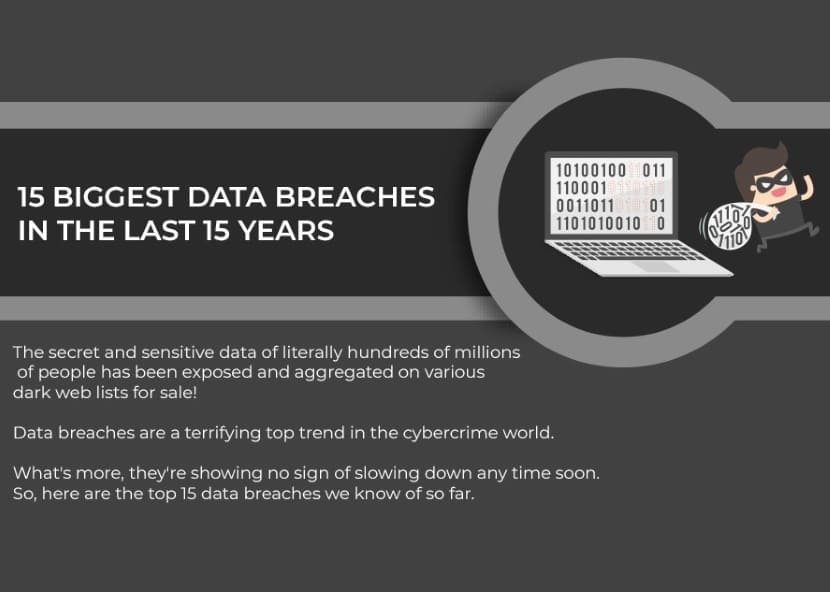
Click here to see the full infographic!
Data Hacking Trends
With the exponential growth of the cloud and IoT applications, such as connected health devices, house or child monitoring equipment, and smart cars. The demand for data-centers keeps increasing. This is also increasing new forms of cybercrime since all these devices are now hackable, susceptible to IoT attacks. It’s not surprising since connected devices are becoming more and more entangled and integrated into everyday lives.
In only 2 years, the total data stored in the cloud – which includes everything from public clouds operated by third-party vendors, government-owned clouds, social media companies, and private clouds run by mid-to-large-sized companies – will be a hundred times greater than today.
Modern hacking trends include a myriad of cybercrime techniques aimed at compromising data. Some of the most dangerous and common types of security threats include:
- Attacks related to ransom malware have caused damages worth almost $1 billion. US users have paid $ 25 million worth of ransom. [Whitehouse Council of Economic Advisors]
- Hacking crimes due to Social engineering account for 97% of the total hacking cases in the world. It also accounts for 93% of data breaches. [PwC Report 2018]
- An estimated 4000,000 DDos attacks were reported monthly in the last few years. [Caliptix Security]
- Service Denial attacks have numbered close to 800000 cases in the first couple of months in 2018 alone.
- [PwC Report 2018]
- 2018 has also seen almost 61% of organizations succumbing to IoT device hacks. That number has risen to 64% in 2019. At the end of 2018, more than 23 billion IoT devices were installed worldwide. [Newsweek]
- Attacks related to phishing and pretexting comprise of nearly 98% of the total incidents involving social channels in 2019. Verizon’s 2017 DBIR revealed that it was still a significant factor in data breaches. [Verizon]
- In a report from Forrester, their research revealed that only 12% of breaches were targeting public cloud environments. 37% of decision-makers believed that heightened security made the migration to the public cloud vital to future success. [Forrester]
The motivation behind cybercrime remains financial gain and has remained the dominant motivator behind cyberattacks, at a rate of 88.1%. Cyberattacks as a form of technology warfare have been rising recently, up to 4% as of January 2019, when only a month earlier, in December 2018, the rate was 2% according to Privacy Affairs. Governments and non-government organizations have taken part in cyber warfare, and that rate should continue to grow as technologies become more integrated into the public’s lives.
C-suite and Cybersecurity
- According to a recent survey carried out on C-suite users, a total of 53% of respondents indicated “cybercrime and data breaches” as the number one concern when it comes to cybersecurity. [IBM Study]
Increased attacks on Service Providers
Attacks on service providers such as Yahoo, AML, etc. have seen a stark rise in the last 6 or 7 years.
- Yahoo faced the worst service provider attack with instances affecting 3 million, 500 million, and 200 million user accounts in 2013, 2014, and 2016 respectively. [NYTimes]
Organizational vulnerabilities
- Both medium and small-scale organizations are losing an estimated $120,000 on average due to service denial attacks. Another figure indicated that enterprises could lose more than $2 million in total, due to denial of service attacks. [Security Intelligence]
- An estimated 61% of organizations worldwide have succumbed to IoT system hacking in 2018 alone. [CSO Online]
- In 2019, 64% of companies that allocate more than 10% of their budget towards cybersecurity experienced at least one breach. 34% of the companies indicated that they experienced a data breach last year. [Helpnet Security]
Third-party/Supply-chain risk
- Most data breaches are caused by malicious activities outside the entity, as a study found that it accounts for 56% of total data breaches in 2018. Malicious insiders account for only 7% of the violations. [Statista]
- Intrusions caused by Phishing attacks have affected 82% of manufacturers in the U.S, which also covers the industrial supply chains present in the manufacturing sectors. [phishing box]
- Almost 59% of UK and US-based companies who have used a third-party service have experienced data breaches. Of them, a measly 16% of them think that the third party’s risk management system is effective enough in 2019. [Business Wire]
Skills Shortage in CyberSecurity
The overall level of skills when it comes to Cybersecurity measures has not matched up to the required standards.
- 38% of global organizations claim that they can handle a sophisticated cyber-attack. [IBM]
- This is a worrying statistic, as over 54% of the world’s organizations have experienced some sort of significant cyber-attack in the past year. [IBM]
- In 2018-2019, almost 53 percent of organizations reported a problematic shortage of cybersecurity skills. [Security Intelligence]
- Cybersecurity engineers will soon be the highest-paid among all IT professionals in 2020, more than software engineers, systems administrators, IT auditors, and software architects. With salaries exceeding $225,000 annually. [InfoSec]
Trends in HIPAA Data Breaches
- In America, the total number of medical records that have been exposed throughout 2019 amounts to a total of 38 Million. [HIPAA JOURNAL]
- The U.S. Department of Health and Human Services experienced 52 data breaches in October 2019 alone. [HIPAA JOURNAL]
- 2015 is still the worst year for data breaches in this sector, with two instances exposing 78.8 million and 11 million customers, respectively. [appknox]
Cybersecurity Spending
As the threat of cybersecurity intensifies, the overall amount spent on cybersecurity has been increasing since 2015.
- The U.S. President’s Budget allocated towards cybersecurity rose to $15 Billion for 2019. [Whitehouse Cybersecurity Funding]
- This is a stark increase of $583.4 Million of almost 4.1% from the budget allocated for 2018. [Whitehouse Cybersecurity Funding]
- The largest contributor to the budget was the Department of Defense, which allocated $8.5 Billion, an increase of $340 million compared to the previous year (2018). [Whitehouse Cybersecurity Funding]
- How much are companies spending on cybersecurity? In 2018, in excess of $114 billion was spent globally on information-security products and services. It’s expected to grow to $170.40 billion by 2022. What’s driving this spending are business needs, security risks, and industry changes. Privacy has also become an important factor according to 2019 cybersecurity statistics. [Gartner]
- In 2020, almost fifty-two percent of companies believe that cloud computing is a priority for cybersecurity investment. [Safe At Last]
- Cloud computing providers will spend more on security spending by 57%. The other areas that will see more development are IoT, mobile computing, cybersecurity analytics, and robotic process automation. [Forrester]
- by 2023, businesses are expected to spend $12.6 billion on cloud security tools, that’s more than double from the $5.6 billion spent in 2018. [Forrester]
Prevention and the Future
The modern, inter-connected world is increasingly falling under threat from growing instances of cybercrimes. Many large companies have fallen prey to such elaborate cybercrime schemes and have lost millions on lawsuits to recover the situation.
In 2018 alone, data breaches affected 45.9% of businesses, 29.2% of medical and healthcare institutions, 10.9% of banking, credit or financial institutions, and 8% of government or military associated companies and departments. [Digital Information World]
The number of data breaches per year in the United States has gradually increased since 2014: [Statista]
- 783 cases in 2014
- 781 cases in 2015
- 1093 cases in 2016
- 1579 cases in 2017
- 1244 cases in 2018
When it comes to 2019, however, the numbers have skyrocketed.
- There were more than 3800 reported cases of breaches in 2019. [Forbes]
- Compared to the first six months of 2018, there has been a 54% increase in the number of reported breaches. [TechRepublic]
- These breaches exposed records which were 52% more than that of 2018. [Risk Based Security]
The largest data breaches in 2019:
- A total of 620 million accounts suffered a data breach in 2019, from a total of 16 websites. [Forbes]
- Websites such as Dubsmash, Armor Games, ShareThis, Whitepages and 500px were among those affected. [IT Governance UK]
Prevention is always better than cure and is most applicable when dealing with cybercrimes. With different forms of cybersecurity, ranging from malware, phishing, denial of service, SQL injection, Zero-day exploits, DNS tunneling, and others, the need for effective cybersecurity measures is of utmost priority.
Cybersecurity measures range from simple to complex. Necessary preventive measures such as password protection and authentication, are not enough to prevent more elaborate and complex cyber threats that are faced by companies today.
From a business perspective, data breaches can never be ignored, and appropriate measures must be taken by the companies, something which is lacking as of now. As hackers find more elaborate ways to breach security, countermeasures need to be in place. The only way to tackle such threats is to develop sophisticated security techniques, as well as to educate users and employees about the dangers of the different forms of cybersecurity threats prevalent currently.
If left untreated, cybercrimes and data breaches can hamper the reputation of a company, assets, finances, and even their existence, which means there will be no future if you don’t start prevention now. Find out more on how to secure your data in the cloud, by connecting with one of our experts.
Key Takeaways for Statistics on Data Breaches
- As an increasingly large number of systems and processes go online, customers, businesses, and governments become more vulnerable to cybercrime and attacks.
- To counter the threat of cybercrime, organizations must increase their investments in cybersecurity and deploy them correctly. Also, to train their workforce regularly.
- Outside comparing the numbers of attacks in 2019, what’s evident is that the variety and severity of cyberattacks are on the rise.
- Plan and prepare by updating your OS regularly. Train employees on the dangers of social engineering. Disallow the downloading of unfamiliar apps from unknown sources.
- If a cyberattack does occur and hackers demand payment, by not reporting it and giving in, will be the easy way out. Hackers will come back for more if they can profit. To avoid future cyberattacks means reporting crimes to the authorities and refusing to pay. This will make future attacks less likely.
Recent Posts
Data Breach: What It Is and How to Prevent One
Data breaches are occurring at an unprecedented rate, and there are no signs that they will slow down any time soon. If you’re one of the many organizations that store sensitive information online, then you’re at risk. Now is the time to learn more about the impending dangers businesses face and how to implement vital data protection practices.
What is a Data Breach?
In any instance, when information is accessed without authorization, it’s a data breach. The types of violations can vary and evolve as technology diversifies, but to put it simply, the information in the wrong hands constitutes a data breach. Information can become compromised in many ways now; a cyber-attack is only one. As the name implies, it’s a confirmed incident when an unauthorized entity has accessed confidential, sensitive, or protected information. Big data is now the norm, as more devices become connected. Those valuable connections also become points of weaknesses. Data breaches can wreak havoc on the reputations of businesses and induce a ripple of after-effects that can leave lasting repercussions.
For instance, a business may have to pay hefty fines due to a breach. Outside of regulatory penalties, they may have to compensate the victims whose data was compromised. Even a minor data breach could put an SMB out of business due to the financial constraints of fines, lawsuits, and loss of public trust. When someone steals secure data and publishes it on the web, it’s out there for the world to see. As more data becomes digitized, and we generate more original digital data, it’s logical that more data breaches will occur.
Recent History of Data Breaches
For the first time since 2013, this past year ransomware declined down 20 percent overall, but up 12 percent for enterprises according to Symantec. The most successful campaigns in 2019 involved ransomware that relies on open Remote Desktop Protocol (RDP) servers as the initial access point. Attackers more commonly use targeted, manual attacks instead of the one-two punch of malvertising exploits. The first quarter of 2019 saw the detection of several new ransomware families using innovative techniques to target businesses.
One of the most recent and significant data breaches occurred in September 2017 with the Equifax data breach, which exposed the personal data of 147 million people.
A few other prominent data breach examples include:
- Yahoo: Between 2013 and 2014, over three million user accounts affected.
- Marriott International: From 2014 to 2018, over 500 million of their user accounts were breached.
- Target Stores: In December of 2014, approximately 110 million of their user accounts got hacked.
- JP Morgan Chase: In July of 2014, around 76 million residential and seven million small business Chase customers had their financial records breached.
- A May 2019 ransomware attack on the City of Baltimore is expected to cost in excess of $18 Million to recover from.
The average cost per ransomware attack to businesses last year was $133,000. Attacks on Brittan’s National Health Service in 2017 cost nearly $100 Million in IT recovery services alone. Yet, the cost of customer confidence and company reputation can be unmeasurable.
Four Common Causes of Data Leaks
| Human error | Errors cannot be avoided, people make mistakes, and information may get distributed without mal intent. Proprietary data can get sent accidentally to the wrong person, and uploads to public folders or misconfigured servers can bleed sensitive information. |
| Theft or loss of devices | We all have devices. From smartphones to laptops, hard drives, USBs, and other data storage devices can easily get stolen, misplaced, lost, or disposed of incorrectly. Sensitive or protected information saved on those devices can end up in the wrong hands and lead to a more significant data breach. |
| Employee data leak or theft | When a company terminates an employee or ends a contract with notice, that person may deliberately access protected information without permission and copy it. They may use or distribute it with malicious intent. |
| Cyberattacks | Hacking is the most apparent form of a data breach. Hackers use malware, phishing, social engineering, skimming, and scams to get access to sensitive and encrypted information. |
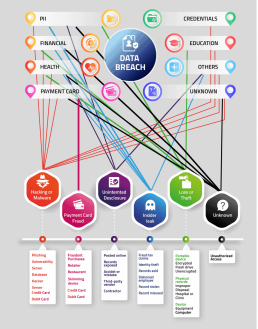
The Reality of Ransomware
Now that we know how data breaches and hacks can occur, we can look at why criminals are looking for a way to penetrate your firewalls. One major ploy cybercriminals use is Ransomware which is a form of extortion. It’s is a malware that infects, overtakes, and locks your data making it inaccessible unless a ransom is paid. The threat could be to publish a company’s data, erase it or perpetually block access to it, which can cripple a business.
The FBI warns not to pay a ransom, but many companies will be at a loss if they can’t access their sensitive data. Since ransomware is so profitable for hackers, attacks have skyrocketed. According to a Quickbridge study, over 4,000 separate ransomware attacks have occurred since 2016. Furthermore, they estimate the damages will reach around $11.9 billion globally.
It’s essential to know which types of information are the most valuable to cybercriminals. Cybercriminals may use programs that mine and lock your data, later using it for ransom. This attack is known as ransomware. Hackers can hold businesses hostage if vital information is leaked and user information exposed. Such an occurrence was the Ashley Madison hack of July 2015.
There are three main reasons a hacker wants your data:
- To sell it on the black market
- Identity theft
- Simply because they can
There’s no such thing as being ‘too safe’ in this digital era. One hundred percent secure may not exist as of yet, but you can take practical steps to mitigate the potential for massive data loss.
What to Do in Case of Ransomware Attack
Here are some ransomware response strategies:
| What you should do: |
|
| What you shouldn’t do: |
|
How to Prevent Security and Data Breaches
If you run a business, then it is likely you store personal information about your employees, customers, and others digitally or online. Since data breaches are on the rise, all organizations must start taking more detailed steps to prevent a data breach. By implementing protection best practices you will stay ahead of potential attacks and ensure the safety of your business.
Ransomware protection and response best practices were in focus of our recent webinar with Veeam. With October being National Cybersecurity Month, we thought it is the right time to revisit it.
Take a look at the recording below and get insights from William Bell, EVP of Products from phoenixNAP, and Brandon McCoy, Cloud Sales Engineer from Veeam.
Here is a detailed checklist we recommend you go through to start consolidating your online security:
Don’t click on email attachments
Spammers and hackers are becoming more ingenious in their attempts to trick people into open email attachments. It’s no longer the Nigerian prince asking you to wire donations to his kingdom. Now you get emails from the IRS, Social Security Administration, and sometimes even someone that looks like one of your relatives. Spammers find relatives by searching your name from any number of person search sites, or social media which display the names of your relatives.
Before clicking on any email attachment, stop and ask yourself if you know the person or organization, and were you notified of an incoming attachment? If you answer no to any of those two questions, don’t open the attachment. In essence, you should delete the email immediately.
When in doubt, you can do a little investigative work to check if an email is legit. For example, check to see if info@paypal.com does originate from the official site. How? In your email client, display the email header information. There, it will be evident if the email did not come from paypal.com. If there are links in the email, hover over one of them, but don’t click it! You should see a popup or hint that displays the full URL. If it doesn’t start with a paypal.com domain, it’s a fake.
Implement and use 2FA
2FA or Two Factor Authentication is a security method that verifies you. You’re already familiar with website logins. 2FA takes logins a step further. It does this by checking if it’s genuinely you that is logging in with your credentials. 2FA does this by asking for additional information. After you enter your login info, the 2FA scheme will send a text code to your verified phone number. Which in turn, you must enter into the login screen to gain access.
There isn’t a field on the login screen to enter your device’s phone number. That would defeat the purpose of 2FA since a spammer would be able to enter their mobile number and hijack the auth code. Instead, the mobile number you saved in your account is used. By involving another device that only you have access to, 2FA provides more confidence that the person logging in is you.
A 2018 study by Carnegie Mellon University found that over 75 percent of study participants thought 2FA made their accounts more secure, but 50 percent thought the process was annoying. 2FA also helped to stop dangerous security practices, such as credential sharing.
Never share your social security number
Most job applications will ask for your social security number to perform a background check. Outside of job applications and government organizations, there is no need to provide your social security number. Some companies may ask for it to set up an account for you. You can decline, and ask that the company uses another identifying number. After all, you have no idea what sort of security practices go on at any company.
Lockdown physical assets
Keep physical locks on any devices which contain sensitive data and are vulnerable to hacking.
Restrict access
Limit access to sensitive data, to employees on a straightforward need-to-know basis.
Update all your operating systems
Through cloud computing, these should be updated consistently and automatically. It’s always safer to ensure you have the latest versions with the most recent security fixes and patches installed.
Schedule regular updates for applications
Some apps will have to be updated manually, where others will be updated automatically. This rule is critical since earlier versions will have loopholes that hackers can exploit.
Use SSL in your email client
When using a desktop email client, the client connects to your email provider’s servers to receive and send emails. With some providers, you have the option to use a non-SSL connection. This can prove risky.
A non-SSL connection will send your non-encrypted email login credentials over the Internet. When you connect to a public or unsecured WiFi network (i.e., coffee shop or hotel), your email credentials will be vulnerable. Always use SSL when connecting to your email provider.
Use machine-generated passwords
With the advent of keyword loggers and even cameras spying on networks and devices, it’s imperative to use a machine-generated password.
Furthermore, hackers often play the guessing game too. One of the most popular passwords are names of personal pets. Using social media, it’s not hard to discover your pet’s name. For example, a simple Facebook search can give any hacker that type of personal information.
Play it safe by using something generated for you, and it is also completely random. If storage and memory pose an issue, then use a password manager.
Use Strong Complex Passwords
Don’t use the same password across multiple logins, even if you have used a password generator. Each login should be different. If one login is compromised, at least your other logins are safe – for now. By diversifying with strong secure passwords, you are essentially creating a firewall between each login.
Use a Credit monitoring service
Credit monitoring services can alert you to suspicious activity within your financial accounts. Credit monitoring services are convenient because you can monitor activity within all of your financial accounts, and through all three credit bureaus.
If you don’t want to pay for a monitoring service, most credit cards and bank accounts have alerts that inform you of suspicious activity. It’s triggered when a transaction exceeds a specific dollar amount, or a questionable purchase has been made on the card.
Contact your financial institution immediately
If you see suspicious activity on one of your business accounts, contact your financial institution right away. Your institution has protocols in place for events like these.
Train and educate your employees
The Office of the Future survey, Canon USA reported that more than one-third of respondents consider malware and ransomware a priority threat. Yet, 25% of respondents say that employees have limited to no security awareness, nor do they understand their role in prevention.
For better overall security, it’s essential to train your employees on your most recent security protocols. Create written privacy and data security policies. Educate your employees on those policies, and make them aware of their responsibilities for keeping company data secure. Offer this type of training at least two or three times per year.
If you’re self-employed, use an EIN instead of your social security number
If you are self-employed and have to fill out W-9s and 1099s, use a federal EIN. Using the Employer Identification Number means you do not need to use your social security number. And this protects you from becoming a victim of identity theft.
Conclusion
Data breaches are an unfortunate part of doing business online and participating in digital activities. In this article, you can learn to arm yourself and your business with protective knowledge and strategies and best practices to avoid data breaches. You can drastically reduce the possibility of your private data ending up online, or in hands, you don’t want it to be.
If you are still unsure about how to secure your business online, contact phoenixNAP today to get more information on how to develop your own strategy.
Recent Posts
What is Cyber Security? Challenges and Threats Organizations Face
Cyber Security is a vital component of every companies infrastructure. Success depends on a company’s ability to protect its proprietary information and customer data from those who would abuse it. Regardless of size, scope, or industry, every company that wants to survive must answer two fundamental questions:
What is Cyber Security?
How to create a successful Cyber Security strategy?
This article will answer both of these questions.
A Definition of Cyber Security
Cybersecurity is a series of protocols that a company or an individual follows to enure information maintains its “ICA” – integrity, confidentiality and availability. If you have the right security in place, you will have the ability to recover very quickly from power outages, errors or hard drive failures. It will make your ogranization less vulnerable to external attacks and hackers. You will get protection from sophisticated criminal groups and ‘script kiddies’ that have the capacity to execute APTs, otherwise known as advanced persistent threats.
The concepts of business continuity and disaster recovery are the base strategies of good cybersecurity. Business continuity is essential to the survival of a business. Recovering from threats quickly means you can retain your audience during problematic situations. Problems will less likely become customer-facing issues if there is a plan in place. Disaster recovery means maintaining the integrity of your data and your infrastructure after a catastrophic event. These threats are ultimately classified by the level of cybersecurity currently implemented in your digital infrastructure.
The Importance of Cybersecurity
Why should security be at the forefront every company’s agenda? Why should senior management, including non-tech C-suite decision-makers, concern themselves with cybersecurity?
There is one undeniable reason: The digital world in which we do business is vulnerable and open to attack.
Digitization brings with it endless opportunities for innovation. It still has a long way to go before becoming a fully secure ecosystem that is programmed to regulate and control itself. Decision-makers should ensure that all systems in their company adhere to the latest high-security standards. Employees must also be trained in basic cyber-security protocols too. This is especially true of non-tech employees. For instance, everyone needs to know how to identify a phishing email and how to quarantine it, while notifying the proper authority, both internal and external.
The odds are against you without the right security strategy. Even with the strongest controls in place, count on those controls to be tested. Attackers know how to find weak spots and exploit them, opening holes up that bring down stronger systems. The solution is having good ‘cyber hygiene’, or practicing the fundamental security tasks that will keep the majority of threats out.
Challenges of Cyber Security
The best cybersecurity strategies go well beyond the basics mentioned above. Any sophisticated hacker can avoid these simple defenses. Cybersecurity also becomes more difficult as a company expands. For example, the ‘attack surface’ of a Fortune 1000 company is much larger than a small to medium-sized business.
Expanded Attack Opportunities for Hackers
Another challenge of cybersecurity is dealing with the increasing overlap between the physical and virtual worlds of information exchange. As driverless cars and other self-regulated devices become the norm, the Internet of Things (IoT) and BYOD business policies give criminals more access to cyber-physical systems. That include cars, factories, the smart fridge and toaster in your kitchen, to even one’s medical pacemaker. In the future, infiltrating one of these systems may mean infiltrating them all.
Complicated Regulation
The regulatory environment is also complicating cybersecurity, especially the political discussions around consumer privacy. The European Union recently implemented the General Data Protection Regulation (GDPR) framework, creating more hurdles for companies to ensure they can do business without incurring hefty fines. The security mandates of regulatory agreements like the GDPR require all companies to be held to a higher standard, which can translate into more complications for SMBs and startups in the short term. In the long term, the virtual environment would likely be safer for everyone involved. However, there is a balance that must be achieved between protecting the consumer and offering that same consumer the choice of new business.
Lack Of IT Talent
A critical challenge of cybersecurity is the lack of qualified professionals to do the job. There are many people on the low end of the cybersecurity spectrum with generic skills. Security Experts who know how to protect companies from sophisticated hackers are rare. Those who know how to get things done understand how in-demand they are. When they work, they charge fees that most smaller enterprises cannot afford. Only the biggest and richest companies in the world can afford these elite-level services, another hurdle that SMBs have to overcome to compete online.
Types of Cyber Security
Cybersecurity covers is a wide subject matter. Below, we will go through the core types of cybersecurities. A holistic strategy includes all of these aspects and overlooks none.
Critical Infrastructure
The critical infrastructure of the world functions as a cyber-physical hybrid.
Everything from hospitals to water purification plants to the electricity grid are now plugged into the online world and digitized. We gain many advantages from this super-structure. Putting a system online, however, also creates new vulnerabilities to cyber-attacks and hacking. When a company first connects itself to the physical and then digital world, the first infrastructure it plugs itself into is the critical infrastructure.
Company decision-makers must include this perspective into their plan on how attacks might affect their functionality. If a company does not have a contingency plan, it should create one immediately.
Network Security
The security of a network protects a company against unauthorized access and intrusions. Proper security over a network can also find and destroy internal threats to the system as well.
Effective implementation of network security often requires some compromise and trade-offs. For instance, extra logins help to protect a company’s information from unauthorized access, but it also slows down company productivity. One of the significant problems of network security is that it uses a lot of company resources.
Network security tools generate huge amounts of data. Even if a network security system finds a threat, it might slip through the cracks, ignored, due to the sheer volume of data that’s being produced. IT teams are now using machine learning to automate the identification of legitimate security threats, thereby reducing human error. But it’s far from a perfect system.
Cloud Security
Cloud security is a set of policies, controls, and procedures, combined with technologies that work together to protect data, infrastructure, and cloud-based systems.
They are specific security measures which are configured to protect a customer’s privacy, guard data, support regulatory compliance, and also sets authentication rules for devices and users. This means anything from filtering traffic, authenticating access, and configuring cloud security for specific client needs. It’s mobile since it’s configured and managed in one location, and frees up businesses to focus resources on other security needs.
Application Security
Many of the best modern hackers find web application security the weakest point to attack an organization.
It’s hard to keep up with them due to the proliferation of new relationships with apps companies have which are not yet properly vetted and secured. Application security starts with great coding, which is also challenging to find. After attaining secure coding practices, penetration testing and fuzzing are the two other security practices every company should begin to implement now.
Internet of things (IoT) Security
The IoT is an important cyber-physical system in how online systems communicate. More specifically, IoT refers to a system of interrelated computing devices, which can be defined as mechanical and digital machines, or objects, animals or people which are given unique identifiers (UIDs) and become digitized in some capacity. It also refers to the distinct ability of this system to transfer data over a network without needing human-to-human or human-to-computer interactions.
IoT will only become more critical to business as time goes on. The Internet of Things will connect consumers in neighborhoods and neighborhoods to critical infrastructure in an unprecedented manner. In a few years, a hacker may open up and exploit someone’s refrigerator or choose to shut down electricity to an entire town – if we are not careful. Today, IoT devices often are shipped to consumers in an insecure state. There are many devices that have no patching for security either, which makes them prime targets for botnets.
Developing a Cyber Security Strategy
Every strategy should be custom-designed. A cybersecurity strategy that works for one company will not necessarily be effective for another. It’s different for every entity based on their specific needs and vulnerabilities.
However, there are some overarching themes that you can take into account regardless of your company size, scope, or industry.
Understanding risks to critical business operations
Cybersecurity is continually becoming more complex. Organizations must have a ‘security vision’ about what cybersecurity means to their operations. This includes generating an acceptable level of risk and prioritizing areas to target for the majority of security investments.
Integrating the strategy across departments
A good security strategy must work across all the security measures that a company already has in place. Companies should intervene smartly in crucial areas to close off backdoors and improve overall security.
Deter the threats on the inside
Many of the backdoors and vulnerabilities that doom a company to cyber victimhood begin from an internal problem. A part of every cybersecurity package should include internal monitoring to prevent insiders from using their access maliciously. Protective monitoring also helps a company to differentiate between insider attacks that are purposeful or accidental.
Plan for breaches ahead of time
Understand that hackers are always one step ahead of the curve in security. No matter how good your defenses may be, they will be breached at some point in time. Instead of waiting in fear for the inevitable, prepare for it. Boost your disaster recovery and business continuity metrics so that when something does happen, you can return to normal functionality as quickly as possible.
With the basics of cybersecurity covered, should a company now feel relaxed with their new insights into protections? Not at all. Cybersecurity means remaining eternally vigilant in a constantly moving digital ecosystem. The solutions that work today will not work tomorrow. Hackers will have figured out something else by then, and they will be at your front door with even more powerful executions.
Here is a cybersecurity checklist to get you started:
- Put Policies and Procedures in Place
- Ensure Gateway Security
- Have End Point Security
- Implement Identity and Access Management
- Implement Multi-Factor Authentication
- Get Mobile Protection, Secure Remote Access, and Virtual Private Networks
- Have Wireless Network Security
- Back up and Disaster Recovery
- Provide Employee Security Awareness Training
Reduce Your Cybersecurity Risk
It’s imperative to use the best practices and tips mentioned above as a starting point to ensure that you’re moving in the right direction. It can mean the difference between life and death for your business. Or save you millions in legal fees that can come along with e-Commerce security threats. Don’t allow the trust that your customers have placed in you to be threatened or breached. And that’s exactly you need to invest in smart cybersecurity services today.
Recent Posts
31 Must-Know Healthcare Cybersecurity Statistics 2020
The healthcare industry is a prime target of hackers. The importance of cybersecurity in healthcare is an essential consideration for all organizations handling patient data.
Be aware of the latest numbers; read our article on the latest Healthcare Cybersecurity Statistics.
Healthcare Data Breaches, By the Numbers
1. 89% of healthcare organizations experienced a data breach in the past two years. Despite the sophisticated measures put in place by providers to prevent data breaches , they are still common. (Source: Dizzion).
2. A Mid-Horizon study concluded that approximately 100 percent of web applications connected to critical health information is vulnerable to cyber attacks. Network penetration results also showed that hackers could easily access domain level admin privileges of most healthcare applications. As a result, the use of advanced technologies such as block-chain and cloud computing is necessary to ward off such attacks in the future. (Source).
3. It is estimated that the loss of data and related failures will cost healthcare companies nearly $6 trillion in damages in the next three years compared to $3 trillion, in 2017. From a statistical point of view, it is the most significant transfer of wealth in human history. If proper security measures are not taken, experts believe that cybercrime can have a devastating financial impact on the healthcare sector in the next four to five years. (Source).
4. 82% of surveyed healthcare organizations agree that digital security is one of their foremost concerns. (Source: Health IT Security)
5. 55% of healthcare companies in the United States faced cyber attacks. Almost one-fifth confirmed that they had been attacked in the last 12 months. (Source).
Healthcare Ransomware Statistics
Ransomware has brought many a healthcare organization to its knees. It is likely to remain one of the most prominent threats of 2019 and beyond. Despite increasing awareness among healthcare professionals, the number of ransomware attacks continues to grow.
6. Ransomware attacks on the healthcare sector will quadruple by 2020. Attackers like to attack the healthcare sector due to the potential value of such data. The healthcare sector is prone to paying the ransom because the disruption, lost productivity, and damage to the data can be more expansive than preventing the loss by paying the ransom. (Source: Herjavec Group Healthcare Report)
7. As of 2018, the number of ransomware families dropped from 98 to only 28. However, there were 350 different variants of ransomware observed in 2018 compared to 241 in the previous years. It means that ransom-takers are using more sophisticated tactics to hack into vulnerable systems. (Source)
8. Healthcare organizations are more willing to pay ransom to avoid downtime and gain access to critical patient data. It is estimated that 23 percent of healthcare organizations paid some form of payment to the attackers. The healthcare industry is vulnerable because it uses legacy systems that are mostly out-dated and vulnerable to attacks. (Source: Infosecurity Magazine)
9. Organizations that handle healthcare data that fail to update their systems may face grave consequences in the future. The majority of healthcare ransomware attacks were malware related. Of the 2,600 incidents reported, 36 percent were malware related followed by accidental disclosure in 26 percent of the cases. (Source: Beazley Breach Briefing)
Implementation of Advanced Security Technologies To Fight Back
10. The nature of cybersecurity spending in the healthcare sector varies significantly due to the specific requirements of organizations. A majority of companies are spending their budgets on network security and investing in mobile protection measures. Another 51% are also spending on advanced technologies that will make data on the move more secure during data transfers. (Source: HIPPA Journal)
11. A large number of healthcare firms are migrating to a cloud-based solution. Despite the safety as their prime concern, 25% of the firms suggest that they are not encrypting their information during data transfer to the cloud. 38% of firms that have data in a multi-cloud environment such as Amazon Web Service does not use encrypted technology. (Source: Hytrust)
12. 60% of healthcare organizations globally have introduced IoT devices into their facilities. The Internet of Things has seen an exponential rise in the use of IoT enabled devices in a range of fields. Wearable and implantable IoT devices are already widely used in healthcare, including insulin level monitors to pacemakers. (Source: Statista)
Cybersecurity IT Talent: Human Weakness
We tend to think of cybersecurity as a system of digital checks and balances. But while this is important, organizations should still consider the human component. Even if you’re spending heavily on automated systems, it means little if you don’t have the right people to implement and manage them.
13. 42% of healthcare organizations leave their cybersecurity in the hands of a vice president or C-level official (Source: Chime).
14. 39% report their biggest challenge when it comes to implementing cyber defenses is the lack of qualified employees (Source: HIPAA Journal).
15. 37% say that less than 1 in 4 candidates are skilled enough to keep their companies secure (Source: Health IT Security).
16. Cybersecurity requires specific knowledge and skills to secure and combat attacks. Often, these skills are not easy to find as 27 percent of healthcare firms reported that they are unable to find suitable candidates to fulfill cybersecurity roles. Another 14 percent suggested that they are not sure if they will be able to fill vacant positions. The ISACA State of Cyber Security Report also concluded that 45 percent of firms don’t think that their applicants understand the nature of their job (Source).
17. If the budget doesn’t restrict healthcare firms to improve their security, the complexity of the system does. 53 percent of the healthcare firms surveyed revealed that complexity of healthcare systems is the major issue holding them back. Healthcare systems can be complicated as lack of experienced and knowledgeable staff to handle such complex systems is another significant concern, cited by 39 percent of firms (Source: Thales Data Threat Report).
18. For small and medium-sized healthcare firms, cloud adaption is a haven from cyber attacks. Despite the early adaption of cloud-based technology by the healthcare sector, nearly 40 percent of these organizations do not have a dedicated staff that can deal with cloud-based problems. Without a dedicated team, small healthcare organizations can face threats while operating in a cloud environment. (Source: HIPPA Journal)
19. The most significant internal cybersecurity threats to healthcare are often high-ranking officials and senior staff who have deep access to the system. A whopping, 61 percent cited senior-level executives as a potential security loophole that can be vulnerable to cyber threats. Similarly, privileged users, such as executive managers, contractors, and service providers, are potential targets for hackers and cybercriminals. (Source: HIPPA Journal)
20. 59% of healthcare organizations get at least five applications for each cybersecurity job, while 13% receive 20 or more. While these healthcare security statistics make for sobering reading, there is some good news. The right candidates do appear to be out there. (Source: Health IT Security).
21. 54% of healthcare associates say their biggest problem is employee negligence in the handling of patient information (Source: Ponemon Study).
Healthcare Companies are Fighting Back
21. Healthcare organizations are taking cyber security seriously as 62 percent of companies have reported that a Vice President is in charge of cybersecurity issues. 41 percent of organizations are in the process of implementing a fully functional security program to address critical problems. (Source: Health IT Security)
22. Recent attacks on healthcare have prompted healthcare companies to increase their cybersecurity budgets from a maximum of 10 percent to almost 25 percent, in 2018. The increase in the budget is correlated to an increase in hiring staff for a specific purpose. In 2016, eight percent of the healthcare companies had more than 10 employees dedicated to the task, which increased to 11 percent, in 2017. (Source: Health IT Security)
23. In 2018, 60 percent of these firms put particular emphasis on cybercrime by increasing their staff, adding new technologies, and training their employees on such issues. Cybersecurity budgets continue to grow as 81 percent of U.S. firms indicate that they will improve their resources to keep critical systems safe. (Source: Healthcare IT News)
24. 57 percent of companies are ensuring that they meet local and global compliance standards of Internet security required in the healthcare sector. Of these, 34 percent confirmed that they are already looking to implement cybersecurity best practices for employees. (Source: HIPPA Journal)
25. Security breaches caused by the loss of sensitive items, such as laptops and other devices, have decreased sharply. While loss or theft of items accounted for nearly 90 percent of the losses in 2010, it has reduced to only 15 percent, in recent years. This is a clear sign that educating employees to take care of their data devices is critical to preventing incidents of theft. (Source)
26. 54% of healthcare organizations believe they have technologies in place to effectively prevent or quickly detect unauthorized access to patient data. An improvement over the 49% reported in 2015. (Source: Ponemon Institute)
5 Largest Healthcare Cyber Security Attacks & Breaches
Here are some of the most significant healthcare data breaches. What can your organization learn to avoid being the next victim?
1. LifeBridge Health
This Baltimore-based healthcare system experienced a malware attack last March. The attack potentially breached the data of around 500,000 patients. Investigations showed that the hackers first gained access to the system back in September 2016.
2. Health Management Concepts
This ransomware attack fast became a full-blown data breach. Hackers were mistakenly provided with a file containing the personal data of over 500,000 patients.
The organization has not disclosed how or why hackers got this information, but the file contained Social Security numbers, health insurance information, and patient names.
3. CNO Financial Group
Between May and September of last year, hackers gained access to the credentials of CNO employees. This information was then used to access company websites, compromising the data of over 566,000 policyholders and applicants.
Data accessed included dates of birth, insurance details, and partial Social Security numbers.
4. UnityPoint Health
UnityPoint suffered two security breaches last year. The second compromised the data of 1.4 million patients.
A series of phishing emails had been made to look like they were from a top executive within the company. When an employee fell for the scam, it gave hackers access to private email accounts.
5. AccuDoc
The data breach of billing vendor AccuDoc was the biggest of last year. The North Carolina-based vendor prepares patient bills while managing Atrium Health’s billing system. The investigation revealed that while hackers could view the data, they were unable to extract it.
Don’t Become a Healthcare Security Statistic
From these healthcare statistics, it is apparent that there has been an increased awareness among healthcare companies regarding cybersecurity. Despite the response, more needs to be done. All types of hacking attacks are also becoming more sophisticated and the data loss more costly. Solutions start with awareness, updating and maintaining critical systems, and emphasis on security during data transfer.
How vulnerable is your organization? Work with our team of security professionals and ensure that your employee and patient data is secure.
Recent Posts
35 Network Security Tools You Should Be Using, According To The Experts
Securing a network can seem overwhelming. The world of Security can be complicated. Network security tools assist in securing your monitoring IT environment.
The more tools an InfoSec professional has to work with, the better they will be able to address the task at hand. Access to a wide range of computer network security software is only the start. Knowing how to put them to use is the essence of network protection.
New security threats seemingly appear daily. The progressive nature of these attacks requires dynamic multi-point security solutions. It is critical administrators quickly identify vulnerabilities to protect data security.
We have collected the best security tools to combat network threats. These applications should make for a strong starting point for anyone working in Information Security. Don’t miss the expert contributors!

Network Security Monitoring Tools
Argus
One of the best free and open source tools available for network traffic analysis. Argus stands for Audit Record Generation and Utilization System. The program does just what the acronym says. Efficient, in-depth analysis of network data, sifting through big chunks of traffic with fast, comprehensive reporting. Whether or not it’s the only traffic monitoring tool users need, it provides a solid foundation.
P0f
P0f remains popular in spite of a lack of updates. The program has scarcely changed in over a decade because it was just about perfect on release. Streamlined and efficient, P0f generates no additional traffic. It can be used to identify the operating system of any host with which it interacts. Many tools in this category create probes, name lookups, assorted queries, and so on. P0f is light, fast, and clean-running. A must-have for advanced users, but not the easiest to learn for the rookies on the team.
Nagios
Nagios monitors hosts, systems, and networks, delivering alerts in real-time. Users can specify exactly which notifications they want to
receive. The program can monitor network services, including HTTP, NNTP, ICMP, POP3, and SMTP, among others.
To many, Nagios is The name in traffic monitoring. A comprehensive, all-bases-covered approach to network management. One of the most powerful free tools for cybersecurity professionals and small businesses alike.
Splunk
Designed for both real-time analysis and historical data searches. Splunk is a fast and versatile network monitoring tool.
One of the more user-friendly programs with a unified interface. Splunk’s strong search function makes application monitoring easy. Splunk is a paid app with free versions available. The free version is limited. This is an excellent tool to put on the list for those who have a budget to work with. Independent contractors tend to be careful about the premium tools they buy. Splunk is well worth the cost. Any information security professional with a strong enough client base should invest in Splunk.
OSSEC
OSSEC open-source intrusion detection service provides real-time analytics of system security events.
It can be configured to be constantly monitoring all possible sources of entry and access, including files, rootkits, logs, registries, and processes. It is also available for a variety of platforms, such as Linux, Windows, Mac, BSD, and VMWare ESX. The OSSEC user community is also good at sharing strategies, modifications, support, and other useful information. Other available tools include “Atomicorp,” which provides ‘self-healing’ to automatically fix detected vulnerabilities, and Wazuh, which offers training and support.
InfoSec professionals honestly need a lot of tools to do their work. If only had to choose one; it would be a properly tuned Data Analytics Aggregator or SIEM software; e.g., Splunk
There's too much data to try to parse and correlate between devices and hosts on your own. You need to be collecting decrypted packets and logs and then enriching it with threat intelligence.
At least for our group, our backbone is Splunk-the features that set it apart from most SIEMs is that it handles unstructured data quite well and can scale easy. Most shops only utilize logs, and maybe NetFlow.
With Splunk, we can utilize every use case our engineers can create use cases and content for. Splunk while not a SIEM by itself, can be made to do it and add the predictive analytics out of the box. It also Supports both push and pull models.
Dennis Chow CISO of SCIS Security
Encryption Tools
Tor
Tor gained a lot of press when people started talking about the “dark web” some years back. The dark web turned out not to be as scary as urban legends made it out to be. Tor is just a tool to ensure privacy on the Internet. The system routes requests to proxy web servers for privacy, making users harder to track. Although there are malicious exit nodes used to sniff traffic, this isn’t a significant concern with careful use. Tor’s applications in InfoSec are more plentiful than its applications in cybercrime.
KeePass
Used in identity management, KeePass is a necessity for many office settings. A simple password management system. KeePass allows users to access all of their accounts with one password. Combining convenience with security, KeePass lets users set unique passwords for different accounts with an auto-fill function when typing in the master password. Those who have dealt in InfoSec for more than a day know how important this can be. Sometimes a security issue just comes down to bad password management. KeePass helps network security officers manage the human element of the job.
TrueCrypt
TrueCrypt remains popular despite having gone years without updates. Abandoned by its developer in 2014, TrueCrypt is technically outdated, yet still a strong tool. A disk encryption system, TrueCrypt allows for layered content encryption with two tiers of access control. Free, powerful, open software. It’s easy to see why TrueCrypt remains popular despite not having been updated in four years. One of the best open source security programs available.
Kali Linux is a security system designed for digital forensics and penetration testing which now can run on both Linux distributions and Windows operating systems. It is compatible with a wide range of wireless devices. It is valued for more than 600 tools geared towards various information security tasks, such as Penetration Testing, Security Research, Computer Forensics, and Reverse Engineering.
QRadar SIEM, IBM's Security Intelligence Platform that provides real-time visibility of the entire IT infrastructure. The system boasts an extensive set of modules (Log Management, Security Intelligence, Network Activity Monitoring, IT Security Risk management, Vulnerability Management, and Network Forensics) that are available through a single web-based console. QRadar is a commercial tool, but you can use its free version with 50 Events per Second (EPS) limit known as Community Edition.
Dmitry Nikolaenya, SIEM department coordinator at ScienceSoft

Web Vulnerability Scanning Tools
Burp Suite
A powerful tool for network protection. Burp Suite is a real-time network security scanner designed to identify critical weaknesses. Burp Suite will determine how cybersecurity threats might invade a network via a simulated attack. The suite is available in three versions: Community, Professional, and Enterprise. Professional and Enterprise are paid application testing tools, including the web vulnerability scanner. The Community version is free but severely limited. Community includes only the essential manual tools. Burp Suite is a potent tool for businesses, but perhaps pricey for smaller organizations. Still, a critical application security testing tool.
Nikto
One of the best open-source vulnerability scanner management tools. Nikto will scan web servers and networks for matches with a database of over 6400 threats. Although the network protection software itself has not been updated in some time, it is still up to date. This is because the threat database is regularly updated. There are also countless plugins being released and continuously updated. For many security professionals, Nikto is a cornerstone of the vulnerability scanning routine.
Paros Proxy
Java-based web proxy Paros Proxy includes several useful tools for running security tests. These include a web spider, traffic recorder, and vulnerability scanner. Excellent for detecting network intrusion openings to some of the most common threats, including detecting SQL injection attacks and cross-site scripting.
Very easy to edit with even rudimentary Java or HTTP/HTTPS knowledge. Anyone who can write a web application can edit Paros Proxy. An excellent network protection software testing tool for identifying a security risk before it becomes a security breach.
NMap
Companies seeking improved access to potential weak spots in their network can use this free open source monitoring tool. It has been designed to offer a close look at every network. Including indicating hosts, what services are being provided at each host, what types of packet filters are in use and other features.
Nmap also includes a debugging tool for all major platforms and can be used to scan one network at a time or multiple networks at once. The network security tool is designed to be user-friendly and can be easily customized.
Nessus Professional
For all the times that your organization may have improperly configured security settings or put in the wrong patch, this software corrects mistakes and improves the integrity of your networks.
Nessus identifies and repairs detected vulnerabilities, including missing or incomplete patches; software bugs; or other general misconfigurations throughout applications, devices, and operating systems.
Along with the Pro version, admins/security experts can consider a free open source scanner that looks for possible exploits. One advantage of the Nessus service is daily database updates. Current information about threats and patches are always available. It also just doesn’t check to see if version numbers match, but programs are doing what they’re supposed to. Users can access a variety of security plug-ins as well as develop their own and scan individual computers as well as networks.
Available for Unix and Linux systems, there’s also a Win32 GUI client that works with Windows products. Users pay an annual subscription to utilize all its services. Nessus is used by more than 24,000 companies worldwide and claims to have the lowest false positive rate among its competitors, plus offers access to more than 100,000 security plug-ins that are regularly updated.
Nexpose
Nexpose offers real-time, on-premises vulnerability scanning and management.
It helps security/IT teams look for, detect, and reduce possible weak points, and presents ‘live’ views of the network. It also continually refreshes and adapts to new threats in software and data. Another useful feature is its ability to help security teams prioritize the highest vulnerabilities by providing a risk score. This is useful for coordinating responses to multiple breaches or delegating workflow, starting with the weakest areas where the more serious/potentially damaging breaches are more likely to take place.
Kali Linux comes with a number of tools for pen testing and wireless scanning that hackers like to use for scanning networks
It is recommended that security professionals use it as it is a comprehensive toolset that will allow infosec professionals to conduct reconnaissance, scanning, and penetration all on one network security platform, it's also a free tool.
Sanjay Deo, President 24 By 7 Security

Penetration Testing
Metasploit
If you are looking for a penetration testing tool, you’ll appreciate this framework of Metasploit. Available in open source versions for developers/security staff or a commercial Pro version.
Users can use the network security tool from Rapid7 to look for more than 1,500 exploits, including network segmentation security. It also allows companies to perform various security assessments and improve their overall network defenses, so they’re more thorough and responsive.
Kali Linux
Kali Linux offers a security auditing operating system and toolkit with more than 300 techniques to ensure your sites and Linux servers stay safe from attack.
Funded and maintained by Offensive Security, which also operates and moderates an active user community and an extensive database of threats and exploits. Part of this knowledge base includes certification in pen tests and a free online course called Metasploit Unleashed. The toolkit is designed for all security skill levels to use, not just advanced IT pros.
Rapid fire tools helps us identify weaknesses within the network, potential issues, and be able to detect when and where problems will occur. It is more of a proactive than a reactive tool. But it is effective.
Auvik is an on-demand threat monitoring tool for potential network issues. It shows us traffic, connectivity, and networks that we may or may not have seen before. It allowed us to find in multiple companies hidden wireless routers, switches, and more at even the client didn't know about.
We also use an image-based virtual addition of OpenVAS to penetrate test a network for when we get to a new client. It's open source, free, and easy to use. We drop off the computer at a location, let it cook for a week and then produce a report so we can then go back to the client and show them what we have found. Some are surprised, others are terrified.
Trave Harmon, Chief Executive Officer, Triton Computer Corporation
Packet Sniffers and Password Auditing Tools
John the Ripper
Ready to crack some passwords, or at least test how strong yours are?
Openwall is designed to detect weak passwords quickly.
Initially designed for Unix environments, it now works with Windows, OpenVMS, and DOS systems. John looks for common hash-type passwords as well as more complex ciphers and encrypted logins. The Openware community continually provides updates and patches as password technology and security evolves. Users can access a standard wordlist for more than 20 languages that often appear in passwords, plus varieties that include words and letters in several languages.
Cain and Abel
Anyone working in network security will know that UNIX tends to lead the way in free security apps. Windows and Mac users get the ports late, if ever.
However, Cain and Abel is a Windows-only password recovery tool that leads the pack. Capable of recording VoIP conversations; it can decode scrambled passwords and analyze routing protocols. It uncovers cached passwords, reveals password boxes, cracks encryption with brute force style attacks and cryptanalysis, and on and on. Virtually a must-have starting point for packet sniffing routines.
Tcpdump
A Mac, Windows, and Linux app predating market leader Wireshark. Although Tcpdump is not the newest packet sniffer available, it set the standard in the field. Tcpdump remains a favorite network sniffer with ongoing active development and fresh approach. The tool uses fewer system resources than competing options and opens little security risk.
Wireshark
Ethereal was the name that Wireshark debuted under. Modeled mainly after Tcpdump, the console-based tool is an excellent protocol analyzer.
Wireshark offers real-time network analysis. It allows users to view reconstructed TCP session streams. Many prefer Tcpdump for security and system-resource reasons, but Wireshark remains the most popular packet sniffer. The software receives regular updates to outfit its robust packet-sniffing capabilities. Wireshark is an essential tool, even if it’s not every security pro’s first choice.
I would say every IT and Cybersecurity Networking Professional should be using Kali Linux. Some say this is a hacking only tool. I beg to differ.
Kali Linux (historically called Backtrack) is a freely available collection of tools that offers everyone, (network, applications security, information security) something. There are about 100 or more tools in there, and there is a tool for every capability and intention.
You can download the ISO image, burn it on to a CD or put it in a USB flash drive and boot almost any computer into Kali Linux. The image is also bootable into a VM and works from a MAC.
Amar Singh, Founder, Cyber Management Alliance Ltc
Network Defense Wireless Tools
Aircrack
A suite of WEP and WPA cracking tools. Aircrack features ideal internet security solutions for mobile devices. Aircrack is vital for cracking algorithms. The suite’s tools include airdecap for WEP/WPA capture file decryption and airplay for packet injection. Several other tools are included as well, creating a robust set of apps for InfoSec use. For many wireless security tasks, Aircrack is an all-in-one solution. The series of tools available within the suite allows for pros to handle an entire job at once. Some tasks may demand more than AirCrack has to offer. Many tasks can be accomplished only with AirCrack tools.
Netstumbler
Free security software for Windows users. A necessary tool for wardriving, finding open access points in a wireless network. The software is Windows only, and no source code is provided. This can make for a hard sell to some. Being able to edit open source code can be critical for security. NetStumbler’s active WAP-seeking approach makes it very popular nonetheless. NetStumbler is known for detecting vulnerabilities that other security scanner tools miss.
KisMAC
Free software for Mac with an attractive It is accessible even for less experienced users. The Mac OS X port of Kismet, with a very different codebase. KisMAC excels at mapping and penetration testing with deauthentication attacks.
Fognigma creates an encrypted security network by linking randomly leased virtual machines from multiple cloud providers, which then work as one network. Hidden inside this network are an organization's fileshare, chat server, video conferencing, and more - all protected by the same two layers of AES encryption as every connection inside a Fognigma network.
The software is entirely under the control of the organization using it - so there isn't any reliance on a third-party company for intervention or oversite (which is often where breaches occur).
All these features protect against external threats, but Fognigma can protect from internal threats as well. Fognigma gives network admins granular user controls to make Identity and Access Management oh-so-much easier. For each component (be it a fileshare, exit/entry point, files, etc.), groups are created. Put a user in a group, and the user can access that component. A few mouse clicks and precise access to organization resources is completely under control.
Chris Mindel, Dexter Edward
Network Intrusion & Detection
Snort
An enterprise-grade open-source IDS is compatible with any OS and hardware. The system performs protocol analysis, content searching/matching, and detection of various network security attacks (buffer overflow, stealth port scanner, CGI attacks, OS fingerprinting attempts to name a few).
Snort’s ease of configuration, rules’ flexibility, and raw packet analysis make it a powerful intrusion detection and prevention system.
Forcepoint
Forcepoint’s SD-WAN can be customized to keep users from accessing certain types of content, as well as blocking a variety of intrusion attempts and exploits.
Admins also can quickly see activity on all networks and can take action rapidly, instead of taking time to track down problems. The service is primarily for enterprise clients working in the cloud, including being able to block or provide warnings about risky cloud servers. It also can provide extra protection and higher levels of access for more critical areas.
GFI LanGuard
GFI LanGuard includes continuous monitoring, scanning, and patching.
The network security tool is so popular and useful that applying it through a network can help a company demonstrate security compliance. It also provides software and network auditing as needed for vulnerable areas in desktops or mobile devices, and automatically creates patches for Mac, Windows, and Linux systems.
Acunetix
There is always legitimate fear that hackers may attack your business directly through your firewall or via internal threat/social engineering.
Less attention is given to the security risks of web-based applications like shopping carts, login pages, or online forms. Acunetix helps businesses set up defenses for more than 4,500 threats to these types of applications and sites, such as SQL injections. It regularly crawls through your site architecture and performs conventional hacking methods to make sure your security defense respond appropriately. Manual testing is also available for specific areas of concern.
Musubu, R2i's network intelligence service is my preferred tool. It includes open source threat detection engines such as Suricata or AlienVault. Musubu provides an enhanced set of data points. The user experience provides a real sense of the overall security posture of the network.
It focuses on the network of origin in context, as well as what threat is posed by the subnet, and the broader environment of origin. Musubu complements the open source threat detection engines by providing greater detailed business intelligence, including a unique threat score, threat classification, detailed location information, and reduction of false positives.
Bradford Lee, Director of Operations, Release 2 Innovation
In Closing, Information Security Tools
Good network security describes everything that potentially could impact your company’s systems and everything that helps keep those threats away.
Network security tools focus on hardware, software, even policies, and procedures to encourage everyone in an organization to practice smart approaches to keeping data safe. Network security also can include keeping up with global threats and making sure systems stay safe from everyone from individual hackers to larger organized breach attempts.
Recent Posts
Security vs Compliance: Are You Secure & Compliant? Learn the Differences
The time has arrived to think differently about security and compliance. Compliance is not security. In fact, you can be compliant but not secure.
Compliance doesn’t always achieve security.
Preparing For Todays Security Challenges
Information technology has grown in leaps and bounds over the last two decades with the industry set to top $5 trillion in 2019. With this immense growth comes complex new compliance and security challenges. Industry insiders know that it’s increasingly important to understand and control how companies share, store, and receive information. IT compliance frameworks are now in place to ensure this regulation of data happens securely, but they can differ extensively.
Breaking it down to its basics, becoming secure and compliant means securing information assets, preventing damage, protecting it, and detecting theft. These are the main mantras and mandates of cybersecurity teams, as they implement frameworks, which are predominantly technical to achieve compliance.
A company can protect its data accordingly if they follow Compliance frameworks and have quality security in place. To have proper protection, companies must understand that Compliance is not the same thing as security. However, security is a big part of compliance.
What are the Differences Between Compliance and Security?
Compliance focuses on the kind of data handled and stored by a company and what regulatory requirements (frameworks) apply to its protection. A company may have to align with multiple frameworks, and understanding these frameworks can be difficult. Their main goal is to manage risk and goes beyond information assets. They oversee policies, regulations, and laws and cover physical, financial, legal, or other types of risk. Compliance means ensuring an organization is complying to the minimum of the security-related requirements.
Security is a clear set of technical systems and tools and processes which are put in place to protect and defend the information and technology assets of an enterprise. Compliance is not the primary concern or prerogative of a security team, despite being a critical business requirement. Security can include physical controls as well as who has access to a network, for example. Standardized methods and tools provided by specialist vendors make security simpler than compliance. Compliance, on the other hand, can be multifaceted and is based on a company’s data type and security processes.
Compliance and Security Based on Specific Frameworks
Compliance studies a company’s security processes. It details their security at a single moment in time and compares it to a specific set of regulatory requirements. These requirements come in the form of legislation, industry regulations, or standards created from best practices.
Specifically, compliance frameworks include:
HIPAA
HIPAA (Health Insurance Portability and Accountability Act) applies to companies in the Health Insurance industry. It legislates how companies should handle and secure patients’ personal medical information. HIPAA compliance requires companies who manage this kind of information, to do so safely. The act has five sections, which it calls Titles. Title 2 is the section that applies to information privacy and security.
Initially, HIPAA aimed to standardize how the health insurance industry processed and shared data. It has now added provisions to manage electronic breaches of this information as well.
SOX
The Sarbanes-Oxley Act (also called SOX) applies to the corporate care and maintenance of financial data of public companies. It defines what data must be kept and for how long it needs to be held. It also outlines controls for the destruction, falsification, and alteration of data.
SOX attempts to improve corporate responsibility and add culpability. The act states that upper management has to certify the accuracy of their data.
All public companies must comply with SOX and its requirements for financial reporting. Classifying data correctly, storing it safely, and finding it quickly are critical elements of its framework.
PCI DSS
PCI DSS compliance is the Payment Card Industry Data Security Standard created by a group of companies who wanted to standardize how they guarded consumers’ financial information.
Requirements that are part of the standard are:
- A secured network
- Protected user data
- Strong access controls and management
- Network tests
- Regular reviews of Information Security Policies
There are four levels of compliance within the standard. The number of transactions a company completes every year determines what level they must comply with.
SOC Reports
SOC Reports are Service Organization Control Reports that deal with managing financial or personal information at a company. There are three different SOC Reports. SOC 1 and SOC 2 are different types with SOC 1 applying to financial information controls, while SOC 2 compliance and certification covers personal user information. SOC 3 Reports are publicly accessible, so they do not include confidential information about the company. These reports apply for a specific period, and new reports consider any earlier findings.
The American Institute for Chartered Public Accountants (AICPA) defined them as part of SSAE 18.
ISO 27000 Family
The ISO 27000 family of standards outlines minimum requirements for securing information. As part of the International Organization for Standardization’s body of standards, it determines the way the industry develops Information Security Management Systems (ISMS).
Compliance comes in the form of a certificate. More than a dozen different standards make up the ISO 27000 family.
Security Covers Three Main Aspects of Your Business
1. Networks
Networks allow us to share information quickly over vast distances. This also makes them a risk. A breached network can do untold amounts of damage to a company.
A data breach of personal information can cause damage to the company’s image. Data loss or destruction can also open companies to criminal liability, as they are no longer in compliance with regulations. Protecting a network is one of the hardest tasks facing security professionals.
Network security tools prevent unauthorized access to the system. Firewalls and content filtering software protects data as they only allow valid users.
2. Devices
A user’s personal device that connects to a company network can inject unknown code into the system. Similarly, clicking on the wrong email attachment can quickly spread malicious software.
Antivirus and endpoint scanning tools stop attackers from gaining access to the device. Phishing attacks and viruses have known signatures making them detectable and preventable.
Segmenting access to the network by device, user, and facility limits the spread of malicious software.
3. Users
Careless users are a significant risk for any company. They don’t know they have been compromised and don’t know they are enabling an online attack. Phishing emails are now responsible for 91% of successful cyber-attacks.
Training users to be mindful can help limit innocuous yet dangerous actions. Training can increase security if employees know the risks involved in their daily use of technology.
Compliance and Security: The Perfect Alliance
Security is something all companies need. Most will already have some form of protection when it comes to IT infrastructure. This could even mean the bare minimum of having an antivirus installed on a workstation or using the basic Windows Firewall.
Turning security tools into a compliant IT system requires more effort. Company’s need to prove their compliance with the regulatory standards when a compliance audit happens.
Creating one system, an alliance of both security and compliance, in a systematic and controlled way is the first step in reducing risk. A security team will put in place systemic controls to protect information assets. And then a compliance team can validate that they are functioning as planned. This type of alliance will ensure that security controls won’t atrophy, and all the required documentation and reports are accessible for auditing.
Getting Started on a Secure Path
Compliance that meets a specific framework builds trust in a company. Although regulations will be the driving force behind compliance, the added benefits that come with it are helpful.
A formal assessment of security procedures and systems can highlight areas of concern that need clarification and understanding. Although management should trust administrators to make critical decisions affecting a company’s infrastructure, understanding all the relevant information about security rests with management. Using compliance frameworks to find shortcomings in security is essential when looking at those decisions.
The road to compliance starts with:
- Listing the current security tools used.
- Conducting a risk assessment of the types of information processed.
- Studying the requirements related to the framework.
- Analyzing the gaps in your current controls in regards to the requirements.
- Planning the way forward to solve major deficiencies.
- Testing the efficiency of different solutions.
After applying these steps to a system, conducting regular assessments is the key to success. Compliance and security need to work hand in hand; it does not have to be security versus compliance.
They work in unison; how? Using a compliance framework, assessing security systems, correcting deficiencies, and then beginning assessments which are set on a regular schedule.
Security and Compliance: A Symbiotic Relationship
Security and compliance is a necessary component in every sector. Knowing how each relates to data security is critical.
The IT Industry relies heavily on the public’s trust, and companies that provide them with Information Services need to have stellar reputations. A failure in security can break a business.
Security and compliance are different components of a necessary and crucial system. Knowing how each relates to data protection is critical. Each relies on the other to keep data security at its peak. Compliance does not equal security on its own. There needs to be a symbiotic relationship between the two. When a company meets compliance frameworks with its internal security measures, the implementation of both will keep data safe and a company’s integrity and reputation intact.
Now that you understand the differences between security versus compliance read about the best security testing tools recommended by professionals. It’s time to take action against potential data threats and guard your cybersecurity.
Recent Posts
What is Data Integrity? Why Your Business Needs to Maintain it
Definition of Data Integrity
Data Integrity is a process to ensure data is accurate and consistent over its lifecycle. Good data is invaluable to companies for planning – but only if the data is accurate.
Data Integrity typically refers to computer data. It can be applied more broadly, though, to any data collection. Even a field technician who makes onsite repairs can collect data. Protocols can still be used to ensure data stays intact.
Threats to the Integrity of Data
There are a few ways that data can be damaged:
- Damage in transit – Data can become damaged during transfer either to a storage device or over a network.
- Hardware failure – Failure in a storage device or other computer hardware can cause corruption.
- Configuration problems – A misconfiguration in a computing system, such as a software or security application, can damage data.
- Human error – People make mistakes, and can accidentally damage data.
- Deliberate breach – A person or software infiltrates a computer and changes data. For example, some malware encrypts data and holds it hostage for payment. A hacker might breach the system and make changes.
The Importance of Data Integrity
Critical business decisions depend on accurate data. As data collection increases, companies use it to measure effectiveness.
If data is damaged, any decisions based on that data are suspect. For example, a business sets a tracking cookie on its web page. This cookie collects the number of page views and sign-ups by visitors. If the cookie is misconfigured, it might show an artificially high sign-up rate. The business might decide to spend less on marketing, leading to less traffic and fewer sign-ups.
Data integrity is crucial because it’s a window into the organization. If that data is damaged, it’s hard to see the details. Worse, manipulated data can lead to bad business decisions.
Aspects of Data Integrity
Who, what, when
Data should have the time, date, and identity of who recorded it. It could include a brief overview or might be a timestamp of access to a website. It could be noted from a tech support agent.
Readability and Formatting
The data should be formatted and easy to read. In the case of a tech support agent, use a standard format to document the ticket. For a website, logging should be automatic and meaningful. A field technician should write legibly on forms, and consider transcribing them digitally.
Timely
Log data as it happens.Any delay in recording creates an opportunity for loss. Data should record as it is observed, without interpretations.
Original
Good data is kept in its original format, secured, and backed up. Create reports and interpretations using copies of the original data. This helps reduce the chances of damaging the original.
Accurate
Make sure data follows protocols, and is free from errors. A tech support agent might log a script. A website logger might record data in a standard file type like XML. A field technician should complete all fields on a paper form.
How to ensure data integrity
Validate input
Check input at the time it’s recorded. For example, a contact form on a website might screen for a valid email address. Digital input can be automated, such as electronic forms that allow specific information. Review paper forms and logs and correct any errors.
Input validation can also be used to block cyber attacks, such as SQL injection prevention. This is one-way Data Integrity works together with data security.
Validate data
Once collected, the data is in a raw form. Validation checks the quality of the data to be correct, meaningful, and secure. Automate digital validation by using scripts to filter and organize data. For paper data, transcribe notes into digital format. Alternately, physical notes can be reviewed for errors.
Data validation can happen during transfer. For example, copying to a USB drive or downloading from the internet. This checks to ensure the copy is identical to the original. Network protocols use error-checking, but it’s not foolproof. Validation is an extra step to ensure integrity.
Make backups
A good backup creates a duplicate in a different location. Copying a folder onto a USB drive is one way to create a backup. Storing files in the cloud is another. Even data centers can create backups by mirroring content with a second data center.
Backups should include the original raw data. Reports can always be recreated from the original data. Once lost, raw data is irreplaceable.
Implement access controls
Access to data should be based on a business needs. Restrict unauthorized users from access to data. For example, a tech support agent does not need access to client payment card data.
Even with physical paper data, access controls and management are essential. Sensitive physical records should be kept locked and secure. Limiting access reduces the chances of corruption and loss.
Maintain an audit trail
An audit trail records access and usage of data. For example, a database server might record the username, time, and date for each action in a database. Likewise, a library might keep a ledger of the names and dates of guests.
Audit trails are data and should follow the guidelines in this article. They aren’t typically used unless there’s a problem. The audit trail can help identify the source of data loss. An audit trail might show a username and time stamp for access. This helps identify and stop the problem.
Database Integrity
In database theory, data integrity includes three main points:
- Entity Integrity – Each table needs a unique primary key to distinguish one table from another.
- Referential Integrity – Tables can refer to other tables using a foreign key.
- Domain Integrity – The database has pre-set categories and values. This is similar to screening input and reading reports.
With a database, data integrity works differently. This is useful for the inner workings of a database. Even so, the database is still part of an organization. The advice in this article will help your organization create policies on how to keep the database intact.
Data Security versus Data Integrity
Data Security is related to Data Integrity, but they are not the same thing. Data Security refers to keeping data safe from unauthorized users. It includes hardware solutions like firewalls and software solutions like authentication. Data Security often goes hand-in-hand with preventing cyber attacks.
Data Integrity is a more broad application of policies and solutions to keep data pure and unmodified. It can include Data Security to prevent unauthorized users from modifying data. But it also provides for measures to record, maintain, and preserve data in its original condition.
Conclusion
Data Integrity ensures keeping electronic data intact. After all, reports are only as good as the data they are based on. Data integrity can also apply to information outside the computer world. Whether it’s digital or printed, ensuring data integrity forms the base for good business decisions.
Recent Posts
Data Loss Prevention Best Practices: CISO's Ultimate Guide to DLP
Data Loss Prevention is critical for any business that captures or stores data. With more and more sensitive data being collected, the consequences of a breach are increasing.
In this article learn, what data loss prevention is, best practices, and how to get started creating a DLP policy.
What is Data Loss Prevention (DLP)?
Data loss prevention (DLP) is an approach to protect sensitive business data and information from data breaches or unwanted compromise of sensitive data. DLP identifies, classifies, and tracks confidential data throughout the enterprise preventing unauthorized disclosure of data with disclosure policies.
Data loss happens when a user gets unauthorized access to sensitive information. Data Loss Prevention is a suite of tools and procedures to prevent data loss.
There are three main components to DLP:
- Identify and categorize sensitive data
- Trace the route of data transmission
- Prevent unauthorized access to data
Data Loss Prevention Planning Best Practices
Define an Objective
The objective is the engine that drives the project. You should decide what’s most important. Areas to consider include:
- Protect customer data
- Stay compliant with regulations
- Keep Intellectual Property safe
- Avoid lawsuits and fines over a data breach
Get All Departments On-Board
Some companies have strict, limited budgets. Others might have reluctant leaders who don’t see the value in DLP. If you’re having trouble pitching the importance of a DLP plan, consider these selling points:
- Show how DLP reduces risk
- Show how DLP plans can include policies and technology that improve business processes
- Show how DLP can automate some tasks and reduce expenses
Get to Know Your Vendors
Ask relevant security questions of your vendors. You’ll want to know if software applications are compatible with your business environment. Find out the costs and features for each vendor, and make sure they’re a good fit. Vendors should be able to speak to compliance, partners, and technologies that they use. They should also be able to tell you who controls the DLP program, whether it’s in-house or vendor-managed. Find out staffing requirements and how those will be affected.
Establish Targets
Define an easy-to-achieve target, then roll out the plan to solve it. Success breeds success. A Data Loss Prevention program can be complex and frustrating to staff. Early wins help boost morale, plus helps sell the continuity of the project to decision-makers.
Causes of Data Loss
Data loss and leakage can be broken down into three main categories. These categories help you develop tools and procedures to protect data.
Negligence
Many data breaches occur because a critical asset wasn’t protected. In many cases, this is simply an error, like a misconfigured firewall, or a MySQL database using the default configuration.
Other times, breaches are related to the budget. Without enough dollars in IT security, professionals may lack the resources to protect data effectively.
A popular attitude among hacker is that “If it’s not locked down, it’s fair game.” It’s a good idea to remember this when evaluating a data protection plan. Anything you ignore or overlook could be used against you.
Infiltration
This is the most common conception of a breach. A criminal attacks your network and gains access. Techniques used to hack into systems include:
- Phishing – In this kind of attack, an email tries to solicit sensitive information or login credentials. Spear-phishing is one type of phishing, in which a specific person is identified and attacked.
- Malware – Attackers try to load malware into the corporate network. Malware could include a computer virus, Trojan horse, rootkits, keyloggers, and other malicious software. Malware can hide in a network, recording data and broadcasting back to its owner.
- Social engineering – An attacker manipulates an employee into granting them access. This could be used in combination with malware. Or, it could merely be an attacker wearing a disguise and asking an employee to open the door.
Insider threats
This is the gut-punch of data breaches. An insider threat or attack is when someone inside a company steals data.
How to Build a Data Loss Prevention Policy
Evaluate current data use
Before enacting sweeping changes, evaluate the ecosystem of your data environment. It’s essential to find out what data is being used, and who’s using it. For example, securing payment card data might sound like a great idea, until sales reps can’t process payments.
Categorize Data Types
A custom solution may be required. Consider using “Employee information,” “Intellectual property,” “Financial information,” and “Customer data” as a starting point. These categories allow you to create different rules to handle different kinds of data.
Monitor Data usage and Transmission
Once categories are established, examine how the data used. Identify storage locations and transmission channels to provide context for data protection strategies.
Start gently
It can be tempting to implement a DLP system right away. The reality is that business data systems can be too complicated for a single sweeping change. A better policy is to tackle easier, obvious targets first to manage the most significant risks while building a culture of data protection.
What Type of Data Loss Prevention is Right for Your Organization?
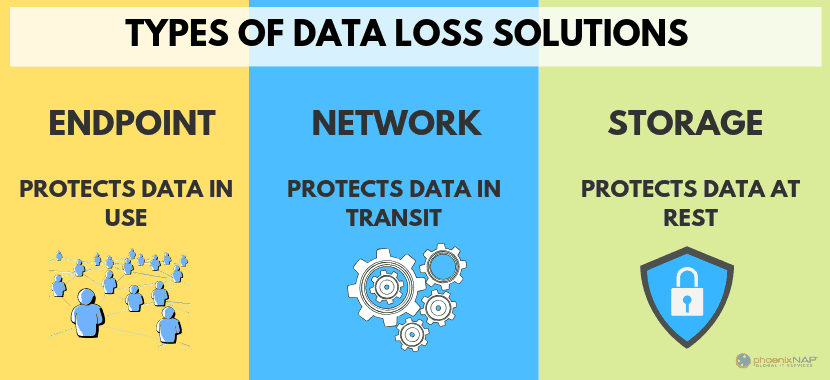
- Endpoint – This protects data in use, and devices used to access data. It could be as simple as a terminal or as complex as shadow IT of smartphones and tablets.
- Network –This protects the data during transit. Behavior analysis and traffic monitoring are common tools.
- Storage – This protects data at rest. This governs access to data in storage, whether on NAS drives or the cloud.
Steps to PreventData Loss
Compliance
If your business is regulated, compliance is a critical piece of a DLP plan. Starting at mandatory regulation helps to ensure custom data policies don’t contradict compliance. For example, Healthcare companies must comply with HIPAA compliance. To process credit cards, you need a PCI-DSS compliance plan.
Organize Data by Risk and Vulnerability
To start, identify, and organize data by type. The next step is to analyze each data type. Look at the level of risk each category presents, then their vulnerability to establish a list of targets. Start with the riskiest and most vulnerable data types. Then, implement a set of policies and technology to protect them.
Define User Roles
Users should have clearly-defined roles to make sure that users can only access data that’s necessary for their job. Examples might include a “Sales Agent” job that allows access to payment card data. Another example might be “Senior Technical Support,” which has access to bug reports and engineering fixes. Data can be restricted from specific user roles as well. A Senior Technical Support agent doesn’t usually need access to payment card data.
Involve Key Stakeholders
No one knows the business like the people doing the work. Take time to involve leaders from different parts of the company. They often see vulnerabilities that upper management can overlook and also anticipate problems or conflicts with new policies. Employees are more likely to buy into a new plan if they are involved in developing it.
Create policies, implement technology
It should go without saying that DLP plans should be enacted. If the DLP plan requires a review of all firewall settings, make sure employees are tasked with that job. Create a timeline for buying, testing, and installing new DLP software.
Automate
Humans make mistakes, and our ability to see problems can be limited.
Automating data loss tools and policies helps reduce the risk of human error. Some tasks cannot be automated. Wherever possible, try to create systems that protect data automatically. For example, spam-filtering software can prevent phishing attacks. Users are protected because they never have a chance to see (or be manipulated by) a phishing email.
Educate
Education takes leader involvement to the next step. Leaders who help develop DLP plans already understand the policy. The next step is to train individual team members. A good data loss prevention strategy is to teach what, then why. Explain the new systems and software and how to use it. Then have a conversation about why this change is essential. Help them understand how protecting data is a win for the company and its customers.
Document
Write down a master plan of the DLP solution. Proper documentation is essential for a couple of reasons. First, it helps keep the project on task. Everyone can refer back to the agreements and plan that was made. Second, it helps keep a record of what’s been implemented. The documentation is especially helpful if there are instructions. At a minimum, leave a brief note with the “how” and “why” for each part of the DLP plan.
Measure
Once the DLP plan is in place, check back regularly, and review the progress. Most data loss prevention tools have reporting metrics. Check to see how many intrusion attempts have been blocked. Review server logs to verify that data is being used appropriately.
Delete Unnecessary Data
It can be tempting to hold on to data forever. We never know when we might need it! Old, unused data can be a liability. If server logs are no longer required after seven years, delete them. If you can’t bear to delete them, archive them in long-term, secure storage. That data might seem valuable. But the value can easily be outstripped by its vulnerability. When weighed against the cost of a data breach, old data might not seem quite so important.
DLP Statistics
Cybercrime is big business. Here are a few sobering facts about Data Loss and the consequences.:
Data loss is estimated to have generated over a half billion dollars profit for cybercriminals in 2018.
Security breaches increased by 11% in 2018.
43% of cyber attacks target small businesses.
Ransomware statistics show that is costs businesses more than $75 billion per year.
83% of IT security professionals have experienced phishing attacks. Source: (Wombat Security)
It takes an average of 50 days between discovery and reporting of a breach.
DLP is a culture, not a silver bullet
Building a data loss prevention strategy is a critical component for today’s digital businesses.
The landscape of digital crime is continually evolving. A quick, one-and-done solution may be effective today, but obsolete tomorrow. Instead, develop policies as living documents. If a vulnerability is discovered, a flexible and growth-oriented security policy can better adapt to new threats. Eventually, data protection will grow to become a core feature of company culture.
Recent Posts
The Ultimate Guide to Zero-Day Exploit Attacks: Defined, Explained
In today’s digital marketplace, there is hardly an organization that does not depend on software or “the internet”. This dependence brings with it a degree of vulnerability. Businesses today are far more likely to have their operations interrupted by cybercriminals than malicious actors in the real world.
Zero-day attacks are especially feared because they give hackers a unique opportunity to bypass typical cybersecurity defenses. In this article, learn what a zero-day vulnerability is and how you can protect against an attack.
What Is a Zero-Day Vulnerability?
A zero-day attack is when hackers release malware before developers have an opportunity to release a fix for the vulnerability—hence zero-day.
Zero-day refers to a newly discovered vulnerability in the software. As developers are just finding out about the flaw, patches or security update to resolve the issue, have not been released. In zero-day attacks, software vendors are reactive, not proactive. They can only respond when problems emerge.
A zero-day attack happens when hackers exploit a window of vulnerability and then launch a direct attack using that vulnerability.
What makes zero-day exploits so dangerous is that the only people who know about them are the attackers themselves. Hackers can either attack immediatly or sit on their knowledge of weakness, waiting for the opportune moment to strike.
How Does A Zero-Day Attack Work?
Zero-day exploits work by many mechanisms. Typically, they involve targeting a software system with malware. Malware integrates into an existing layer of software and prevents it from performing its normal function.
Infiltration with malware is surprisingly easy. Often hackers will disguise malware in the form of website links. All a user has to do is click a website link, and they will automatically begin downloading the problem software. Downloads like these often occur when a hacker has found a way to exploit unpatched vulnerabilities in a web browser.
For example, suppose that your browser has just updated its software to add more features. You log into a website that you trust on your browser and then click what you believe to be a valid link. The link, however, contains malicious code.
Before the patch, your browser would have prevented the link from automatically downloading software onto your computer. However, thanks to changes in the browser code after patching, the download begins. Your computer then becomes infected.
Hours later, the browser company releases a new patch to prevent other people from getting infected. However, for you, it’s already too late.
Who are the targets?
Zero-day exploits target high-profile businesses and governments, but they can attack anyone. The zero-day exploit, Stuxnet, for instance, attempted to sabotage the Iranian Nuclear program in 2010. Many people believe that Israel and the United States were behind the attack. Stuxnet contained new forms of exploit that many people had not seen before.
New email software, for instance, may not be able to filter out fake addresses. This might expose people to various types of phishing attacks. Hackers may try to steal valuable information, like bank card details or passwords.
How Can Zero-Day Exploits be Prevented?
Many organizations and individuals believe that there’s not much that can be done to stop a zero-day attack. This is not entirely true. Take a look at these tips and learn prevention strategies.
Use Up-To-Date Advanced Security Software
The problem with many basic anti-virus software solutions is that they are only good at defending against known threats. When threats are unknown – as they are in zero-day attacks – then they can fail. Only the most advanced security software in the world can protect against hacking from as-yet-unknown origins. Keeping software up-to-date at all times is essential.
Ensure Security Software is Up-to-Date
Vendors may not always publicly disclose if they have been the victim of a zero-day attack. That’s why it’s essential to install new software updates as soon as they become available. They could protect your organization against threats software vendors have identified.
Teach Safe Online Security Habits
Many zero-day exploits harness human error. Malicious actors, for instance, may target employees with fake emails. These emails may contain documents infected with malware or encourage them to hand over sensitive information. Smart organizations, therefore, rigorously enforce security habits to help employees stay safe online.
Install Proactive Security Defenses
Smart security software can sometimes block as-yet-unknown threats using databases of past breaches. These data can be correlated with present attacks to detect threats. Look for software that can defend against attacks of both known and unknown origin.
Implement Network Access Control
Network access control is a tool that prevents unauthorized machines from accessing an organization’s network.
Use IPsec
IPsec encrypts and authenticates all network traffic. This allows the system to identify and isolate non-network traffic quickly.
Deploy a Web Application Firewall
Web application firewalls are a kind of firewall that helps to protect computers that link to a web server. The purpose of the firewall is to scan incoming packets of data for threats continually. The hope is that by using a web application firewall, companies can react in real-time. With a scanner, firms can immediately suppress suspicious activity on their platforms.
Use Content Threat Removal
Content threat removal is a type of detection technology that assumes all data is threatening. The system works by dismantling all data that comes through the network and discarding anything it thinks is malicious. The idea is to throw out anything potentially unsafe in the original data, based on a database of dangerous objects.
Develop Recovery Strategies
Even employing all of the above, it is unlikely that an organization will be able to eliminate the threat of zero-day exploits. Organizations, therefore, must prepare for the worse so that they can respond.
Having a disaster recovery strategy in place is essential. Disaster recovery strategies can mitigate damage from a breach. Most companies ensure that they have cloud backups for all their data. In the event of a breach, their data is safe, and they can continue with their operations as usual.
Detection of Zero Day Exploits
Organizations need to be able to detect attacks quick. Security professionals have four ways of identifying a zero-day attack.
- Statistical analysis can be deployed to analyze the likelihood and probable source of an attack.
- Signature-based. Previous data from past attacks can be examined and determine whether current data patterns signal a threat. If they do, then an attack may be underway.
- Behavioral analysis. By studying the behavior of malicious actors and see if it has changed. If the patterns from a suspected hacking entity differ from usual, then it could be a sign of an attack.
- Combination scoring system. By combining all methods into a single scoring system, the score determines the likelihood of a breach.
Recent Zero Day Attacks
Zero-day attacks are a common occurrence throughout recent history. Take a look at the following cases:
- Adobe Flash Player, 2016. In 2016, there was a zero-day attack on Adobe Flash. Hackers gained the ability to control read and write memory.
- Microsoft Office, 2017. In 2017, hackers discovered that documents in rich text format could open a visual basic script. The script could then be used to open PowerShell commands.
- Windows. A Google employee identified Windows as having zero-day vulnerabilities. The employee then went on the record to state the Microsoft’s flagship product had had flawed code for more than 20 years.
- Java. Java is a platform used by both Microsoft and Apple to create their products. Java recently released a fix designed to overcome some of the platform’s serious zero-day security vulnerabilities.
Recent Posts
17 Best Security Penetration Testing Tools The Pros Use
Are you seeking the best penetration testing tool for your needs? We have you covered.
Penetration testing tools are software applications used to check for network security threats.
Each application on this list provides unique benefits. Easy comparison helps you determine whether the software is the right choice for your business. Let’s dive in and discover the latest security software options on the market.
What Is Penetration Testing?
Penetration testing, also known as pen testing, means computer securities experts use to detect and take advantage of security vulnerabilities in a computer application. These experts, who are also known as white-hat hackers or ethical hackers, facilitate this by simulating real-world attacks by criminal hackers known as black-hat hackers.
In effect, conducting penetration testing is similar to hiring security consultants to attempt a security attack of a secure facility to find out how real criminals might do it. The results are used by organizations to make their applications more secure.
How Penetration Tests Work
First, penetration testers must learn about the computer systems they will be attempting to breach. Then, they typically use a set of software tools to find vulnerabilities. Penetration testing may also involve social engineering hacking threats. Testers will try to gain access to a system by tricking a member of an organization into providing access.
Penetration testers provide the results of their tests to the organization, which are then responsible for implementing changes that either resolve or mitigate the vulnerabilities.
 Types of Penetration Tests
Types of Penetration Tests
Penetration testing can consist of one or more of the following types of tests:
White Box Tests
A white box test is one in which organizations provide the penetration testers with a variety of security information relating to their systems, to help them better find vulnerabilities.
Blind Tests
A blind test, known as a black-box test, organizations provide penetration testers with no security information about the system being penetrated. The goal is to expose vulnerabilities that would not be detected otherwise.
Double-Blind Tests
A double-blind test, which is also known as a covert test, is one in which not only do organizations not provide penetration testers with security information. They also do not inform their own computer security teams of the tests. Such tests are typically highly controlled by those managing them.
External Tests
An external test is one in which penetration testers attempt to find vulnerabilities remotely. Because of the nature of these types of tests, they are performed on external-facing applications such as websites.
Internal Tests
An internal test is one in which the penetration testing takes place within an organization’s premises. These tests typically focus on security vulnerabilities that someone working from within an organization could take advantage of.
Top Penetration Testing Software & Tools
1. Netsparker
Netsparker Security Scanner is a popular automatic web application for penetration testing. The software can identify everything from cross-site scripting to SQL injection. Developers can use this tool on websites, web services, and web applications.
The system is powerful enough to scan anything between 500 and 1000 web applications at the same time. You will be able to customize your security scan with attack options, authentication, and URL rewrite rules. Netsparker automatically takes advantage of weak spots in a read-only way. Proof of exploitation is produced. The impact of vulnerabilities is instantly viewable.
Benefits:
- Scan 1000+ web applications in less than a day!
- Add multiple team members for collaboration and easy shareability of findings.
- Automatic scanning ensures a limited set up is necessary.
- Searches for exploitable SQL and XSS vulnerabilities in web applications.
- Legal web application and regulatory compliance reports.
- Proof-based scanning Technology guarantees accurate detection.
2. Wireshark
Once known as Ethereal 0.2.0, Wireshark is an award-winning network analyzer with 600 authors. With this software, you can quickly capture and interpret network packets. The tool is open-source and available for various systems, including Windows, Solaris, FreeBSD, and Linux.
Benefits:
- Provides both offline analysis and live-capture options.
- Capturing data packets allows you to explore various traits, including source and destination protocol.
- It offers the ability to investigate the smallest details for activities throughout a network.
- Optional adding of coloring rules to the pack for rapid, intuitive analysis.
3. Metasploit
Metasploit is the most used penetration testing automation framework in the world. Metasploit helps professional teams verify and manage security assessments, improves awareness, and arms and empowers defenders to stay a step ahead in the game.
It is useful for checking security and pinpointing flaws, setting up a defense. An Open source software, this tool will allow a network administrator to break in and identify fatal weak points. Beginner hackers use this tool to build their skills. The tool provides a way to replicates websites for social engineers.
Benefits:
- Easy to use with GUI clickable interface and command line.
- Manual brute-forcing, payloads to evade leading solutions, spear phishing, and awareness, an app for testing OWASP vulnerabilities.
- Collects testing data for over 1,500 exploits.
- MetaModules for network segmentation tests.
- You can use this to explore older vulnerabilities within your infrastructure.
- Available on Mac Os X, Windows and Linux.
- Can be used on servers, networks, and applications.
4. BeEF
This is a pen testing tool and is best suited for checking a web browser. Adapted for combating web-borne attacks and could benefit mobile clients. BeEF stands for Browser Exploitation Framework and uses GitHub to locate issues. BeEF is designed to explore weaknesses beyond the client system and network perimeter. Instead, the framework will look at exploitability within the context of just one source, the web browser.
Benefits:
- You can use client-side attack vectors to check security posture.
- Connects with more than one web browser and then launch directed command modules.
5. John The Ripper Password Cracker
Passwords are one of the most prominent vulnerabilities. Attackers may use passwords to steal credentials and enter sensitive systems. John the Ripper is the essential tool for password cracking and provides a range of systems for this purpose. The pen testing tool is a free open source software.
Benefits:
- Automatically identifies different password hashes.
- Discovers password weaknesses within databases.
- Pro version is available for Linux, Mac OS X, Hash Suite, Hash Suite Droid.
- Includes a customizable cracker.
- Allows users to explore documentation online. This includes a summary of changes between separate versions.
6. Aircrack
Aircrack NG is designed for cracking flaws within wireless connections by capturing data packets for an effective protocol in exporting through text files for analysis. While the software seemed abandoned in 2010, Aircrack was updated again in 2019.
This tool is supported on various OS and platforms with support for WEP dictionary attacks. It offers an improved tracking speed compared to most other penetration tools and supports multiple cards and drivers. After capturing the WPA handshake, the suite is capable of using a password dictionary and statistical techniques to break into WEP.
Benefits:
- Works with Linux, Windows, OS X, FreeBSD, NetBSD, OpenBSD, and Solaris.
- You can use this tool to capture packets and export data.
- It is designed for testing wifi devices as well as driver capabilities.
- Focuses on different areas of security, such as attacking, monitoring, testing, and cracking.
- In terms of attacking, you can perform de-authentication, establish fake access points, and perform replay attacks.
7. Acunetix Scanner
Acutenix is an automated testing tool you can use to complete a penetration test. The tool is capable of auditing complicated management reports and issues with compliance. The software can handle a range of network vulnerabilities. Acunetix is even capable of including out-of-band vulnerabilities.
The advanced tool integrates with the highly enjoyed Issue Trackers and WAFs. With a high-detection rate, Acunetix is one of the industry’s advanced Cross-site scripting and SQLi testing, which includes sophisticated advanced detection of XSS.
Benefits:
- The tool covers over 4500 weaknesses, including SQL injection as well as XSS.
- The Login Sequence Recorder is easy-to-implement and scans password-protected areas.
- The AcuSensor Technology, Manual Penetration tools, and Built-in Vulnerability Management streamline black and white box testing to enhance and enable remediation.
- Can crawl hundreds of thousands of web pages without delay.
- Ability to run locally or through a cloud solution.
8. Burp Suite Pen Tester
There are two different versions of the Burp Suite for developers. The free version provides the necessary and essential tools needed for scanning activities. Or, you can opt for the second version if you need advanced penetration testing. This tool is ideal for checking web-based applications. There are tools to map the tack surface and analyze requests between a browser and destination servers. The framework uses Web Penetration Testing on the Java platform and is an industry-standard tool used by the majority of information security professionals.
Benefits:
- Capable of automatically crawling web-based applications.
- Available on Windows, OS X, Linux, and Windows.
9. Ettercap
The Ettercap suite is designed to prevent man in the middle attacks. Using this application, you will be able to build the packets you want and perform specific tasks. The software can send invalid frames and complete techniques which are more difficult through other options.
Benefits:
- This tool is ideal for deep packet sniffing as well as monitoring and testing LAN.
- Ettercap supports active and passive dissection of protections.
- You can complete content filtering on the fly.
- The tool also provides settings for both network and host analysis.
10. W3af
W3af web application attack and audit frameworks are focused on finding and exploiting vulnerabilities in all web applications. Three types of plugins are provided for attack, audit, and discovery. The software then passes these on to the audit tool to check for flaws in the security.
Benefits:
- Easy to use for amateurs and powerful enough for developers.
- It can complete automated HTTP request generation and raw HTTP requests.
- Capability to be configured to run as a MITM proxy.
11. Nessus
Nessus has been used as a security penetration testing tool for twenty years. 27,000 companies utilize the application worldwide. The software is one of the most powerful testing tools on the market with over 45,000 CEs and 100,000 plugins. Ideally suited for scanning IP addresses, websites and completing sensitive data searches. You will be able to use this to locate ‘weak spots’ in your systems.
The tool is straightforward to use and offers accurate scanning and at the click of a button, providing an overview of your network’s vulnerabilities. The pen test application scans for open ports, weak passwords, and misconfiguration errors.
Benefits:
- Ideal for locating and identify missing patches as well as malware.
- The system only has .32 defects per every 1 million scans.
- You can create customized reports, including types of vulnerabilities by plugin or host.
- In addition to web application, mobile scanning, and cloud environment, the tool offers priority remediation.
12. Kali Linux
Kali Linux advanced penetration testing software is a Linux distribution used for penetration testing. Many experts believe this is the best tool for both injecting and password snipping. However, you will need skills in both TCP/IP protocol to gain the most benefit. An open-source project, Kali Linux, provides tool listings, version tracking, and meta-packages.
Benefits:
- With 64 bit support, you can use this tool for brute force password cracking.
- Kali uses a live image loaded into the RAM to test the security skills of ethical hackers.
- Kali has over 600 ethical hacking tools.
- Various security tools for vulnerability analysis, web applications, information gathering, wireless attacks, reverse engineering, password cracking, forensic tools, web applications, spoofing, sniffing, exploitation tools, and hardware hacking are available.
- Easy integration with other penetration testing tools, including Wireshark and Metasploit.
- The BackTrack provides tools for WLAN and LAN vulnerability assessment scanning, digital forensics, and sniffing.
13. SQLmap
SQLmap is an SQL injection takeover tool for databases. Supported database platforms include MySQL, SQLite, Sybase, DB2, Access, MSSQL, PostgreSQL. SQLmap is open-source and automates the process of exploiting database servers and SQL injection vulnerabilities.
Benefits:
- Detects and maps vulnerabilities.
- Provides support for all injection methods: Union, Time, Stack, Error, Boolean.
- Runs software at the command line and can be downloaded for Linux, Mac OS, and Windows systems
14. (SET) Social Engineer Toolkit
Social engineering is the primary focus of the toolkit. Despite the aim and focus, human beings are not the target of the vulnerability scanner.
Benefits:
- It has been featured at top cybersecurity conferences, including ShmooCon, Defcon, DerbyCon and is an industry-standard for penetration tests.
- SET has been downloaded over 2 million times.
- An open-source testing framework designed for social engineering detection.
15. Zed Attack Proxy
OWASP ZAP (Zed Attack Proxy) is part of the free OWASP community. It is ideal for developers and testers that are new to penetration testing. The project started in 2010 and is improved daily. ZAP runs in a cross-platform environment creating a proxy between the client and your website.
Benefits:
- 4 modes available with customizable options.
- To install ZAP, JAVA 8+ is required on your Windows or Linux system.
- The help section is comprehensive with a Getting Started (PDF), Tutorial, User Guide, User Groups, and StackOverflow.
- Users can learn all about Zap development through Source Code, Wiki, Developer Group, Crowdin, OpenHub, and BountySource.
16. Wapiti
Wapiti is an application security tool that allows black box testing. Black box testing checks web applications for potential liabilities. During the black box testing process, web pages are scanned, and the testing data is injected to check for any lapses in security.
- Experts will find ease-of-usability with the command-line application.
- Wapiti identifies vulnerabilities in file disclosure, XSS Injection, Database injection, XXE injection, Command Execution detection, and easily bypassed compromised .htaccess configurations.
17. Cain & Abel
Cain & Abel is ideal for procurement of network keys and passwords through penetration. The tool makes use of network sniffing to find susceptibilities.
- The Windows-based software can recover passwords using network sniffers, cryptanalysis attacks, and brute force.
- Excellent for recovery of lost passwords.
Get Started with Penetration Testing Software
Finding the right pen testing software doesn’t have to be overwhelming. The tools listed above represent some of the best options for developers.
Remember one of the best techniques to defend your IT structure is to use penetration testing proactively. Assess your IT security by looking for and discovering issues before potential attackers do.
Recent Posts
Insider Threats: Types & Attack Detection CISO's Need to Know For Prevention
In this article you will learn:
- All CISO’s need to understand your biggest asset, people, can also your most significant risk.
- Insider threats are increasing for enterprises across all industry sectors. Threats can come from anyone with access to sensitive data.
- Be prepared to mitigate your risk with active insider threat detection and prevention.
What is an Insider Threat?
Insider threats are defined as cybersecurity threats that come from within your own company. It may be an employee or a vendor – even ex-employees. Anyone that has valid access to your network can be an insider threat.
Dealing with insider threats isn’t easy since the people you trust with your data and systems are the ones responsible for them.
Types of Insider Threats
There are three types of insider threats, Compromised users, Careless users, and Malicious users.
Compromised Employees or Vendors
Compromised employees or vendors are the most important type of insider threat you’ll face. This is because neither of you knows they are compromised. It can happen if an employee grants access to an attacker by clicking on a phishing link in an email. These are the most common types of insider threats.
Careless Employees
Careless employees or vendors can become targets for attackers. Leaving a computer or terminal unlocked for a few minutes can be enough for one to gain access.
Granting DBA permissions to regular users (or worse, using software system accounts) to do IT work are also examples of careless insider threats.
Malicious Insider
Malicious attackers can take any shape or form. They usually have legitimate user access to the system and willfully extract data or Intellectual Property. Since they are involved with the attack, they can also cover up their tracks. That makes detection even more difficult.
Detecting Insider Threats
Most of the security tools used today try to stop legitimate users being compromised. This includes things like firewalls, endpoint scanning, and anti-phishing tools. They are also the most common types of breaches, so it makes sense that so much effort goes into stopping them.
The other two types of profiles aren’t that easy to deal with. With careless behavior, knowing what system event was valid or not is almost impossible. Network and security admins probably don’t know the context behind an application’s behavior, so won’t notice anything suspicious before it’s too late.
Similarly, with malicious attackers, they will know the ins and outs of your company’s security system. Giving them a good chance of getting away without being detected.
The most significant issues with detecting insider threats are:
1. Legitimate Users
The nature of the threat is what makes it so hard to prevent. With the actor using their authentic login profiles, there’s no immediate warning triggered. Accessing large files or databases infrequently may be a valid part of their day to day job requirements.
2. System and Software Context
For the security team to know that something terrible is happening, they need to know what something bad looks like. This isn’t easy as. Usually, business units are the experts when it comes to their software. Without the right context, detecting a real insider threat from the security operations center is almost impossible.
3. Post Login Activities
Keeping track of every user’s activities after they’ve logged in to the system is a lot of work. In some cases, raw logs need to be checked, and each event studied. Even with Machine Learning (ML) tools, this can still be a lot of work. It could also lead to many false positives being reported, adding noise to the problem.
Indicators of Insider Attacks
Detecting attacks is still possible. Some signs are easy to spot and take action on.
Common indicators of insider threats are:
- Unexplained Financial Gain
- Abuse by Service Accounts.
- Multiple failed logins.
- Incorrect software access requests.
- Large data or file transfers.
Using systems and tools that look for these items can help raise the alarm for an attack. While regular endpoint scans (daily) will ensure workstations stay clean from viruses and malware.
Identifying Breaches in the System
Identify breaches starts with the security team understanding normal behavior.
Normal behavior should be mapped down to the lowest access and activity. Included in the logs should be the User’s ID, workstation IP address, the accessed server’s IP, employee department, and the software used.
Additionally, knowing what database was accessed, which schemas and tables read, and what other SQL operations were performed, will help the security team identify breaches.
Detect Insider Threats with Machine Learning
One area where machine learning gives a massive ROI is in network threat detection. Although it isn’t magic, it can highlight where to point your resources.
By providing the system’s state and behavioral information to a machine learning algorithm, weird and suspect actions can be identified quickly. Information like user and connection types, role access and application rights, working times and access patterns, can promptly be passed to ML applications.
Knowing what falls outside of the above normal system state can be done by mapping the following into the alert process:
- Listing table access rights per app.
- Specifying service account credentials and schemas used.
- Monitoring the usual data storage locations.
Prevent Insider Threats With Threat Scoring
Correlating the above types of information allows you to create threat scores for each user activity. Couple that to the user’s credentials, you can alert the security team soon after a breach is found.
Using this type of analytics is new to the industry. Early implementations have been successful in helping companies gain the edge on their rivals.
Vendors are starting to offer custom Security Risk Management solutions that include:
- Behavior analytics
- Threat intelligence
- Anomaly detection
- Predictive alerts
Statistics on Insider Threats
33% of organizations have faced an insider threat incident. (Source: SANS)
Two out of three insider incidents happen from contractor or employee negligence. (Source: Ponemon Institute)
69% of organizations have experienced an attempted or successful threat or corruption of data in the last 12 months. (Source: Accenture)
It takes an average of 72 days to contain an insider threat.
Take a Proactive Approach to Insider Threats
Using historical data can help you quickly build risk profiles for each of your users. Mapping their daily interactions with the data you manage will let you know where high-risk profiles are. This will allow you to proactively engage in the areas where you have the biggest concerns.
Although any point in the network poses a risk, elevated access rights have the highest potential for abuse. Implementing key indicator monitoring on these user profiles with active directory policies will reduce the amount of risk you face.
Auditing exiting employees, ensuring their credentials are revoked and they do not leave with company data is also vital. Nearly 70% of outgoing employees admit to taking some data with them out the door. If credentials are also left intact, you may as well leave the door open for them. Privileged access management is a great way to manage user.
Although unintended insider threats remain the biggest concern, it’s the malicious ones that can cause the worst disaster.
Recent Posts
13 Best SIEM Tools for Businesses in 2020 {Open-Source}
Choosing the right Security Information and Event Management software can be overwhelming.
The SIEM market today is nearly a $3 billion industry and growing. Gartner predicts spending on SIEM technologies will rise to almost $2.6 billion in 2020 and $3.4 billion in 2021.
As you consider threat detection systems, find the tools you’ll need to protect your organization against various types of cyberattacks. Examine how you should build out your protection.
Take the time to consider the preparations necessary for successful expansion into the technology. The benefits of a sound, real-time security system are well worth the investment.
What is SIEM?
SIEM or Security information and event management is a set of tools that combines SEM (security event management) and SIM (security information management) Both of these systems are essential and are very closely related to each other.
SIM refers to the way that a company collects data. In most cases, data is combined into a specific format, such as the log file. That format is then placed in a centralized location. Once you have a format and location for your data, it can be analyzed quickly.
SIM does not refer to a complete enterprise security solution, though it is often mistaken for one. SIM relates only to the data collection techniques used to discover problems within a system.
SEM provides real-time system monitoring and notifies network administrators about potential issues. It can also establish correlations between security events.
What are SIEM Software Tools?
SIEM products run directly on the systems they monitor. The software sends log information to a central portal. This is typically a cloud server as they have more robust security monitoring than in-house hardware. They also provide a degree of separation for added protection.
A console provides clients visual aids filtered through local parameters. Cybersecurity incidents can be identified, recreated, and audited through accounting logs.
How Security Information Event Management Works
SIEM works by identifying the correlation between separate log entries. More advanced platforms also include entity and user behavior analysis (UEBA). Other systems may also include SOAR. SOAR stands for “Security Orchestration and Automated Response.” UEBA and SOAR are very helpful in specific instances.
Security Information and Event Management also works by monitoring and logging data. Most security operations experts consider SIEM tools to be more than a simple monitoring and logging solution.
A SIEM security system includes:
- Actively develops lists of global threats based on intelligence.
- Collecting logs from vetted sources of intelligence.
- A SIEM solution consolidates and analyzes log file, including supplemental analytics data to enrich the logs.
- Finds security correlations in your logs and investigates them.
- If a SIEM rule is triggered, the system automatically notifies personnel.
Best Practices for Using a SIEM Solution
Identify Critical Assets To Secure
The first thing organizations must do is identify critical assets thru security risk management. Identification leads to prioritization. No company has the resources to protect everything equally. Prioritizing assets allows an organization to maximize its security within a budget.
Prioritizing assets also help in selecting a SIEM solution
Understanding a companies needs also helps to scale the SIEM platform used. SIEM technology can help with low-level compliance efforts without much customization.
Enterprise visibility is another goal altogether. This requires a much higher level of deployment. This goal does not require as much customization. Does your company know its goals? Take the time to form a detailed strategy before investing.
Train Staff to Understand SIEM Software
The second step is to ensure that in-house staff understands SIEM as a platform.
What system log files will the SIEM technology solution monitor? Does your company use a variety of logs? You may process data differently in various departments. You must normalize these logs before a SIEM security helps you. Different logs do not allow the system to execute to its maximum potential or deliver actionable reports. Why? The data is not consistent.
Create a Scaling Strategy
Some companies duplicate a logging strategy as they expand. The need for servers will eventually increase. As it does, the company reproduces the log rules. The log files will copy themselves as time goes on. This helps preserve records if a company is acquired or merges with another.
Creating a viable strategy becomes more difficult if servers are spread throughout different time zones and locations. Ideally, you would standardize the time zone your organization will use. Unsynchronized time stamps may result from neglecting this step. Finally, configure the triage of potential incidents on the system.
Make Sure the SIEM Solution Meets Your Needs
Each Security Information and Event Management comes with a log gathering requirement. For instance, Syslog logs connect through outsourced agents. Logs from Microsoft deal with locally installed agents. Logs are then collected centrally from a Remote Procedure Call or a Windows Management Instrumentation. Only then are they given to the devices collecting logs.
Executives are responsible for determining the security needs of each prioritized asset. This is essential to produce measurable and actionable results from a SIEM.
Log Only Critical Assets (at First)
Secondary features can roll out after configuring the full log environment. Managing this step by step helps to avoid errors. It also helps to hold back total commitment until the SIEM is tested.

Top SIEM Tools and Software Solutions to Consider
The capabilities of each SIEM product listed below vary. Make sure that you vet each system based on your individual needs.
OSSEC
Open source SIEM is quite popular. OSSEC is used most often as a host-based system for intrusion prevention and detection. This system is often abbreviated as an IDS. OSSEC works with Solaris, Mac OS, Linux, and Windows servers and Mac OS. It works well because of its structure. Two components comprise OSSEC: 1. the host agent and 2. the main applications.
OSSEC allows direct monitoring for rootkit detection, file integrity, and log files. It can also connect to mail, FTP, web, firewall, and DNS based IDS platforms. You also can synchronize log analysis from primary commercial network services.
Snort
Snort is a network-based IDS. It lives farther away from the host, allowing it to scan and monitor more traffic. As one of the top SIEM tools, Snort analyzes your network flow in real-time. Its display is quite robust: you can dump packets, perform analysis, or display packets in real-time.
If your network link has a throughput of 100 Gbps or higher, Snort may be the product for your company. The configuration has a high relative learning curve, but the system is worth the wait. Make sure that your staff has a sturdy grip on how to use Snort. It has robust analytical and filtering capabilities alongside its high-performance output plugins. You can use this SIEM tool in many ways.
ELK
ELK may be the most popular solution in the market. The ELK stack is the combination of products from SIEM vendors Elasticsearch, Logstash, and Kibana.
Elasticsearch provides the engine to store data. It is considered a top solution in the marketplace.
Logstash can receive your log data from anywhere. It can also enhance, process, and filter your log data if needed.
Finally, Kibana gives you your visuals. There is no argument in the world of IT about Kibana’s capabilities. It is considered the top open-source analytics visualization system produced in the industry so far.
This stack forms the base of many commercial Security Information and Event Management platforms. Each program specializes, making the entire stack more stable. This is an excellent choice for high performance and a relatively simple learning curve.
Prelude
Are you making use of various open-source tools? Prelude is the platform that combines them all. It fills in certain holes that Snort and OSSEC do not prioritize.
Prelude gives you the ability to store logs from multiple sources in one place. It does this using IDMEF technology (Intrusion Detection Message Exchange Format). You gain the ability to analyze, filter, correlate, alert, and visualize your data. The commercial version is more robust than the open-source version. If you need top performance, go commercial.
OSSIM SIEM Solution
ELK is one of the top SIEM solutions. OSSIM is a close second. OSSIM is the open-source sister to the Unified Security Management package from Alien Vault. It has an automated testing framework that is reminiscent of Prelude. It is considered an excellent tool.
OSSIM is more robust as a commercial offering. The SIEM, open-source version, works well with micro deployments. Get the commercial offering if you need performance at scale.
SolarWinds SIEM Log Manager
You get the event log analyzer and management consolidator for free as a trial. SolarWinds SIEM systems allow you to view logs across more than one Windows system. You can filter your logs and patterns. The Security Events Manager gives you the capacity to assess and store your historical log data.
SolarWinds is one of the most competitive entry-level SIEM security tools on the market. It offers all of the core features you would expect, including extensive log management and other features.
It is an excellent tool for those looking to exploit Windows event logs because of the detailed incident response and is suitable for those who want to manage their network infrastructure against future threats actively.
One nice feature is the detailed and intuitive dashboard design. The user can quickly identify any anomalies because of the attractive and easy to use display.
The company offers 24/7 support as a welcome incentive, so you can contact them for advice if you have issues.
LogFusion SIEM Software
LogFusion is a simple program. It has a simple user portal and a flat learning curve. If you want to handle remote logging, log dumps, and remote event channels from a single screen, this is the platform for you.
Netwrix Event Log Manager
If you do not need all of the features of Auditor, then the Netwrix Event Log Manager may be right up your alley. You get event consolidation from a whole network in a single location. You can create email alerts in real-time. You also have a limited ability to archive and some alert criteria filtering for extra measure.
McAfee Enterprise Security Manager SIEM
McAfee Enterprise Security Manager is one of the best options for analytics. It allows you to collect a variety of logs across a wide range of devices using the Active Directory system.
When it comes to normalization, McAfee’s correlation engine compiles disparate data sources efficiently and effectively. This ensures that it’s easier to detect when a security event needs attention.
With this package, users have access to both McAfee Enterprise Technical Support and McAfee Business Technical Support. The user can choose to have their site visited by a Support Account Manager twice a year if they would like, and this is recommended to make the most of the services.
This choice is Best for mid to large companies looking for a complete security event management solution.
RSA NetWitness
RSA NetWitness offers a complete network analytics solution. For larger organizations, this is one of the most extensive tools available.
However, if you’re looking for something simple, this is not it. The tool is not very easy to use
And can be time-consuming setup. Although comprehensive user documentation can assist you when setting up, the guides don’t help with everything.
LogRhythm Security Intelligence Platform
LogRhythm can help in numerous ways, from behavioral analysis to log correlation and even artificial intelligence. The system is compatible with an extensive range of devices and log types.
When you look at configuring your settings, most activity is managed through the Deployment Manager. For example, you can use the Windows Host Wizard to go through Windows logs. It’s a capable tool that will help you to narrow down on what is happening on your network.
The interface does have a learning curve, but the instruction manual is thorough and does help. The manual provides hyperlinks to features so you can find the links that will help you.
Splunk Enterprise Security
Splunk is one of, if not the most popular SIEM management solution in the world.
The thing that sets Splunk magic quadrant apart from the rest is that it has incorporated analytics into the heart of its SIEM. Network and machine data can be monitored on a real-time basis as the system looks for any vulnerabilities and weaknesses. Display alerts can be defined by you.
The user interface is incredibly simple when it comes to responding to threats, and the asset Investigator does an excellent job of flagging malicious actions.
Papertrail by SolarWinds SIEM Log Management
Papertrail is a cloud-based log management tool that works with any operating system.
Papertrail has SIEM capabilities because the interface for the tool includes record filtering and sorting capabilities, and these things, in turn, allow you to perform data analysis.
Data transfers, storage, and access are all guarded with encryption. Only authorized users are allowed access to your company’s data stored on the server, and setting up unlimited user accounts is simple.
Performance and anomaly alerts are provided and can be set up via the dashboard and are based on the detection and intrusion signatures stored in the Papertrail threat database.
Papertrail will also store your log data, making them available for analysis.
Logstash
Logstash is one of three software solutions that work together to create a full SIEM system. Each application can be used with the other tools as the user sees fit. Each product can be regarded as SIEM software but used together they form a SIEM system.
It is not compulsory to use them together. All of the modules are open source and free for the user.
Logstash collects log data from the network and writes them to file. You can specify in the settings of Logstash which types of records it should manage, so you can ignore specific sources if you wish.
The system has its own record format, and the Logstash file interface can reinterpret the data into other forms for delivery.

SIEM Tools and Technology: Key Takeaways
Cybersecurity tools and threat detection are a must to secure data and prevent downtime. Vulnerable systems are always a target of hackers, and this is why Security Information and Event Management products have become a crucial aspect in identifying and dealing with cyber attacks.
The top SIEM products provide real-time analysis of security alerts and are essential to identify cyber-attacks.
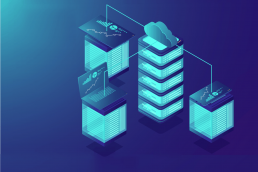

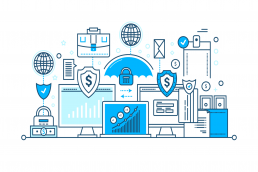



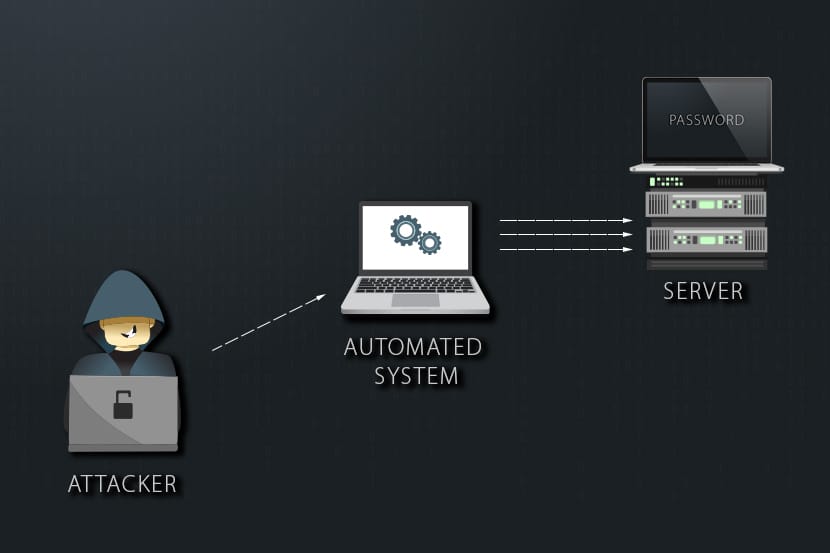

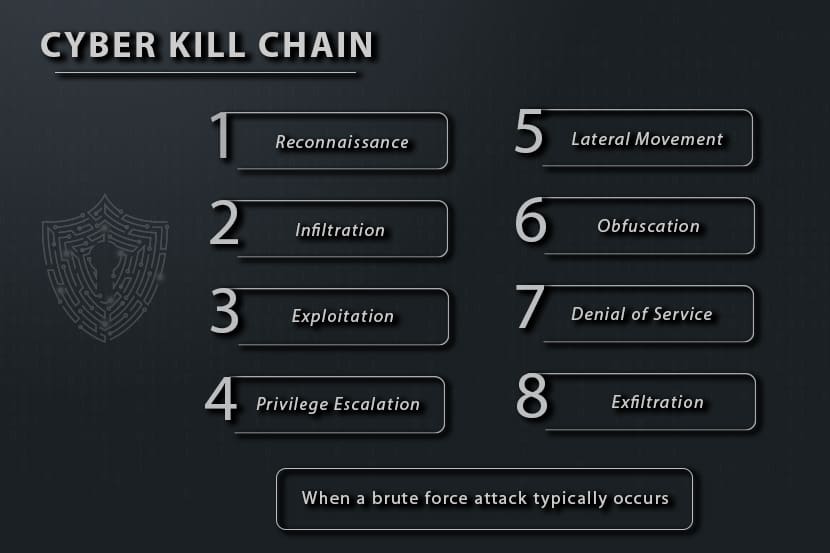



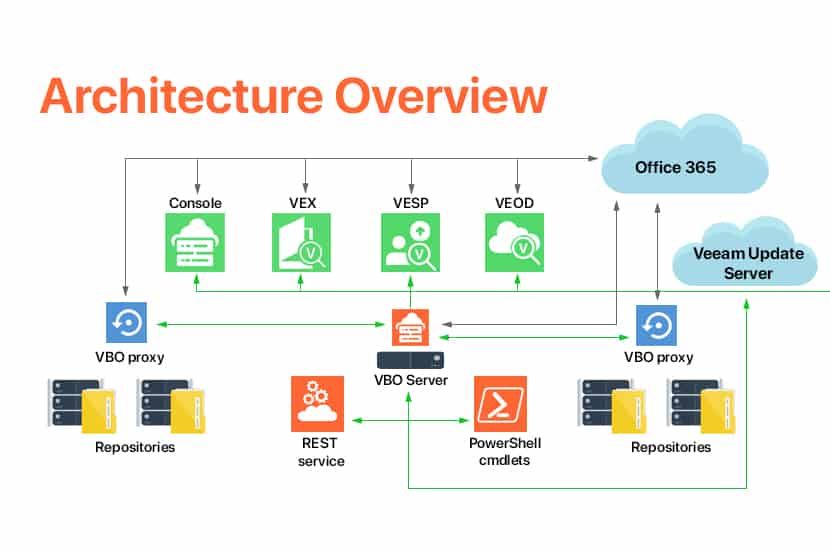
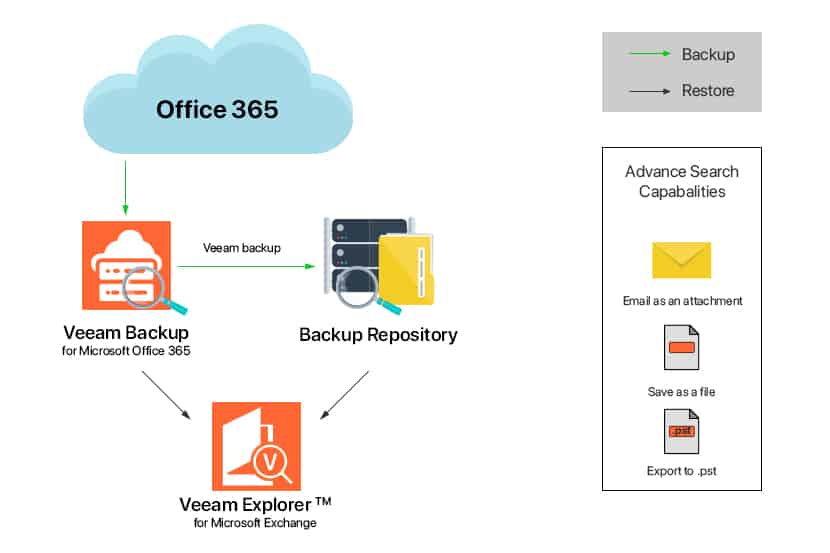

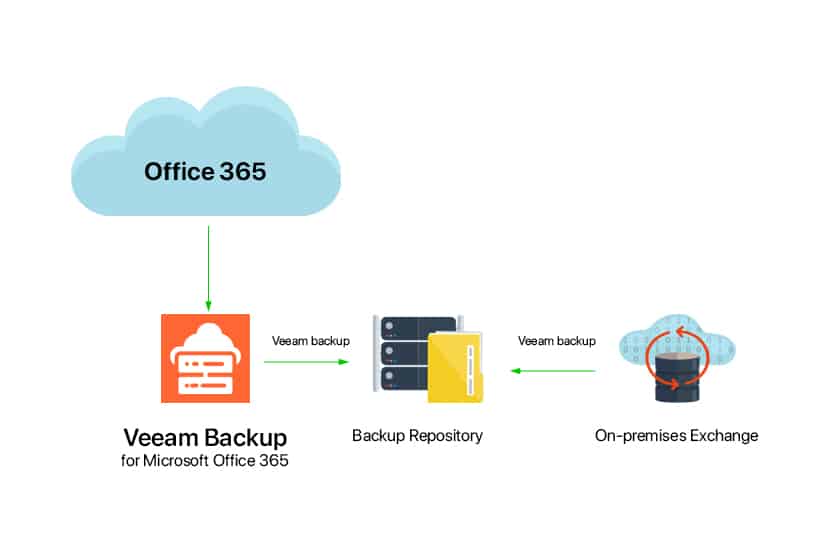

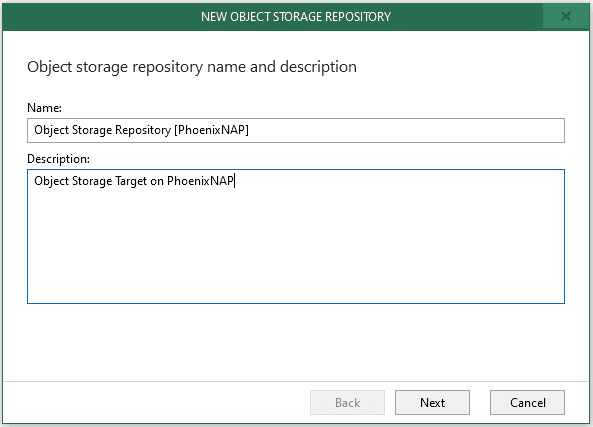


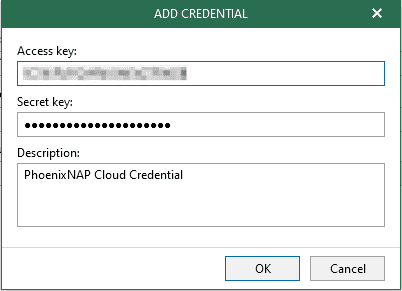

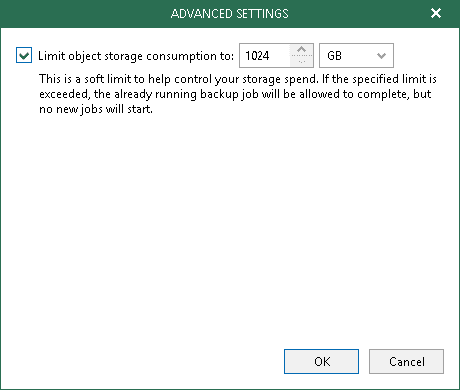
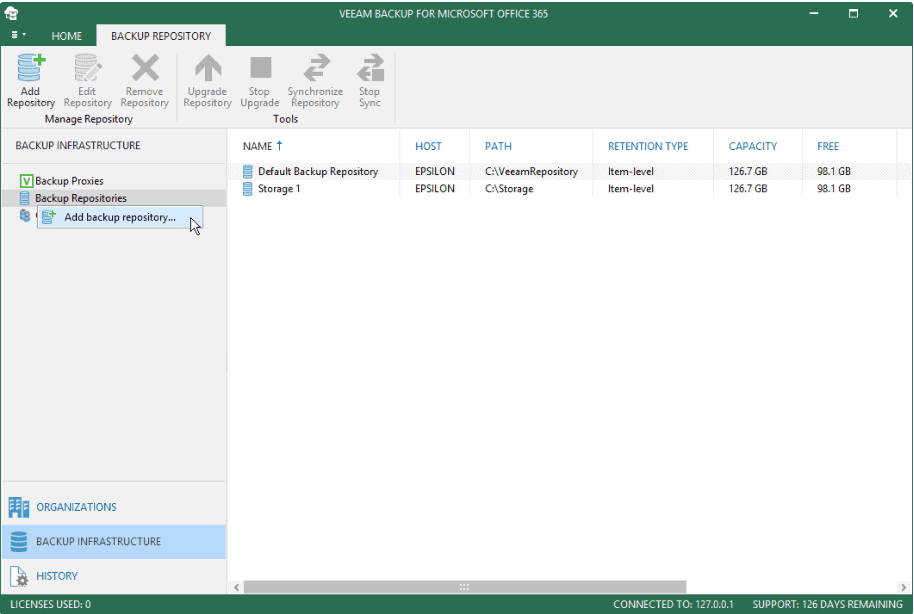

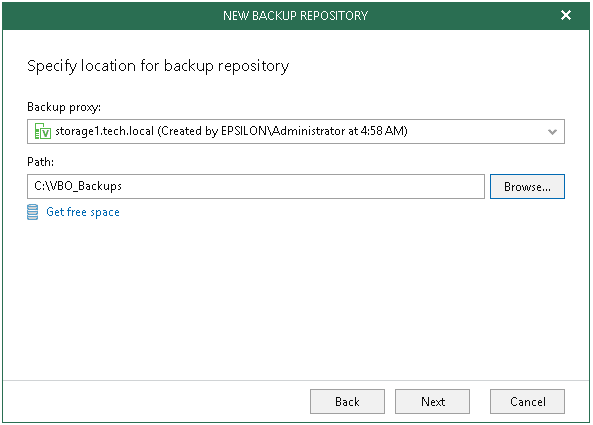
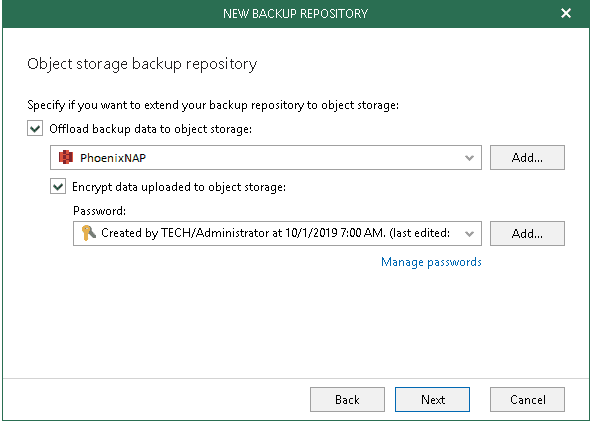
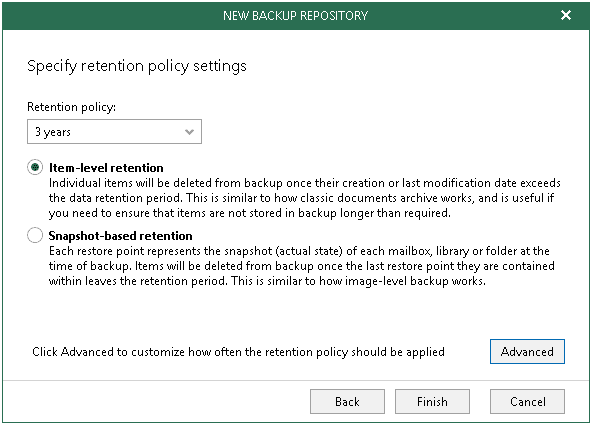

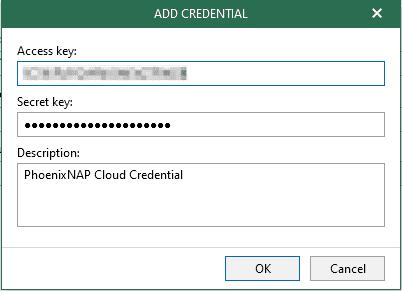



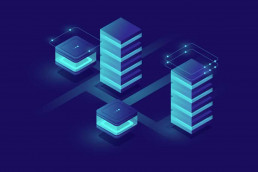


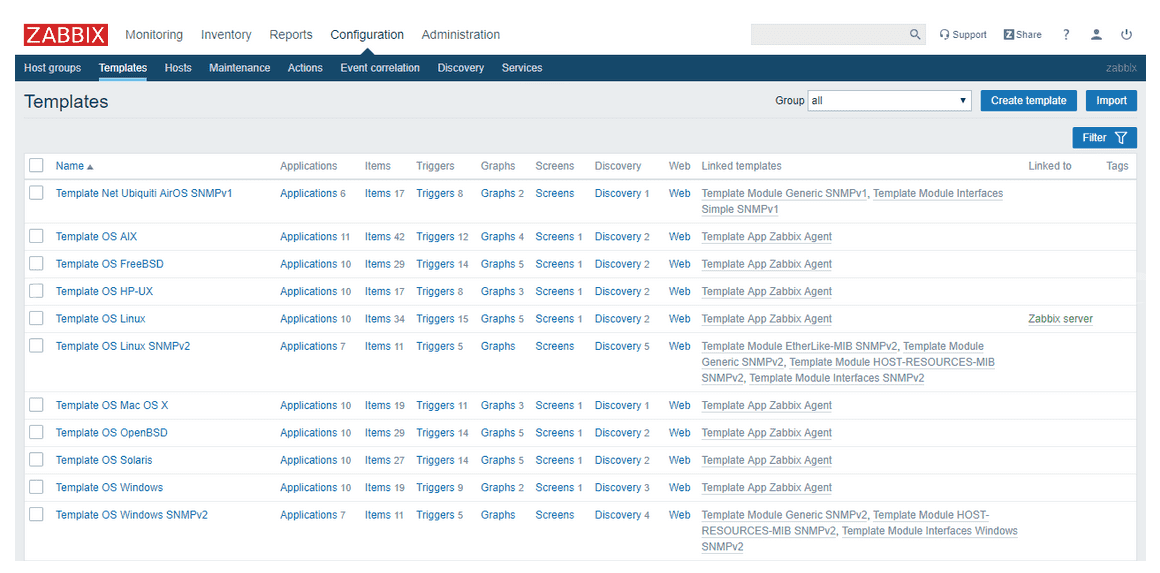
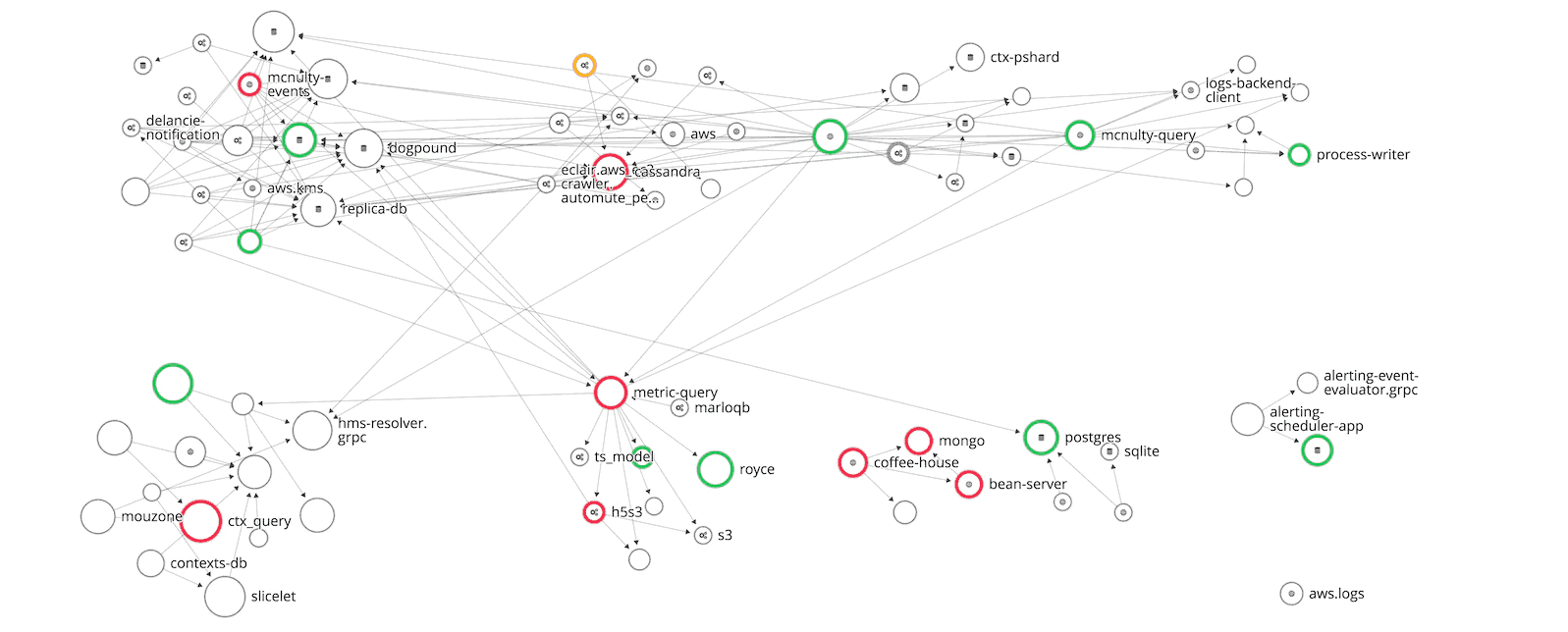
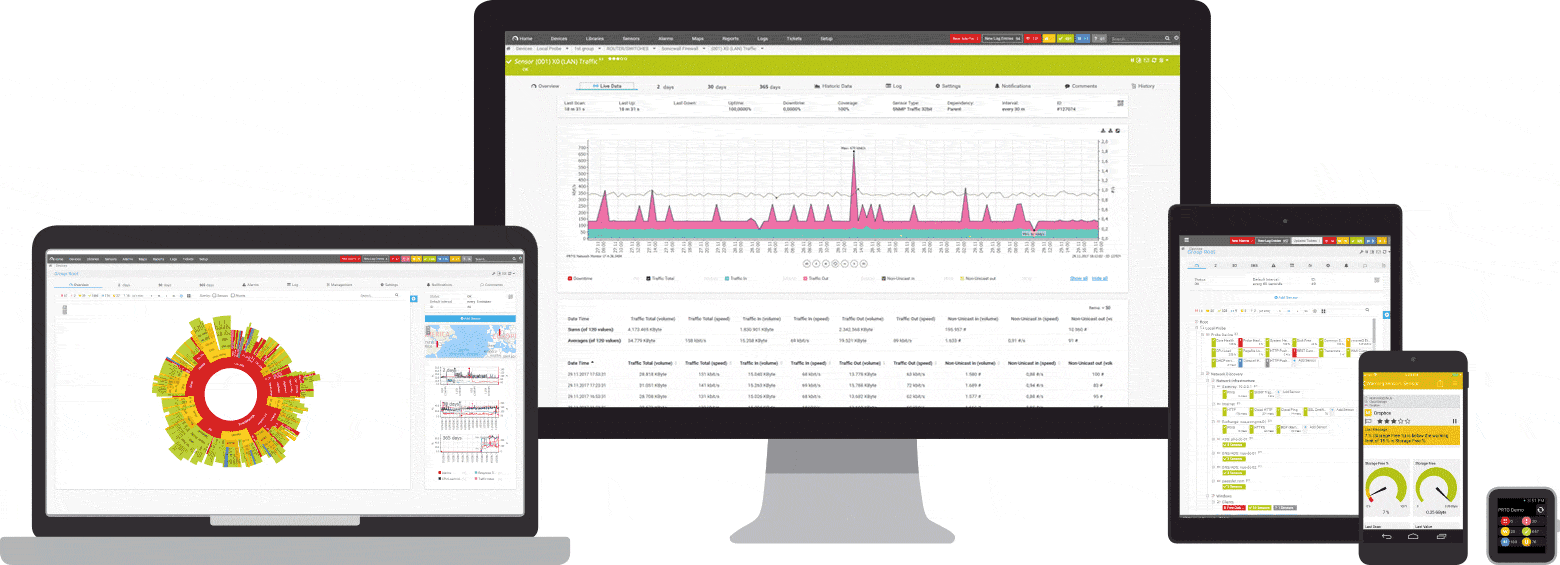
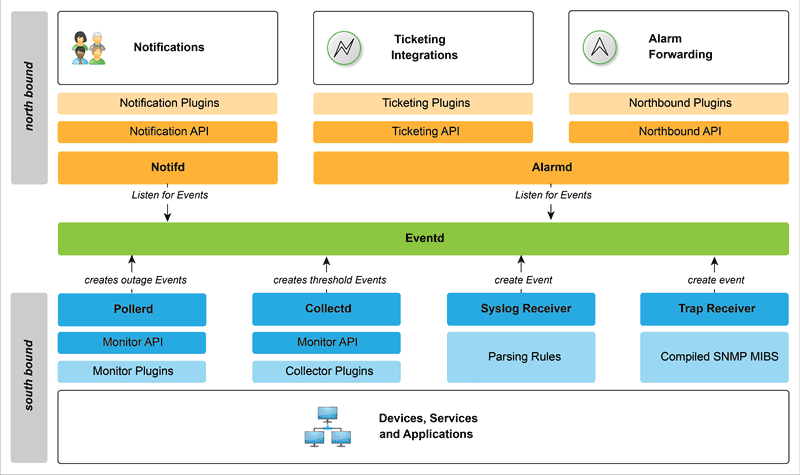
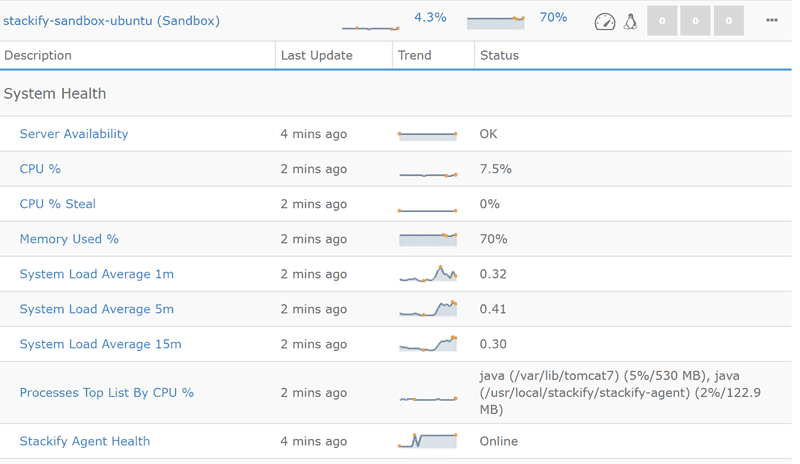
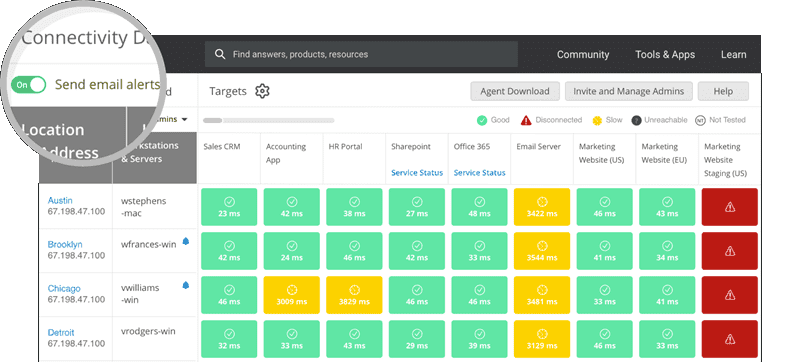

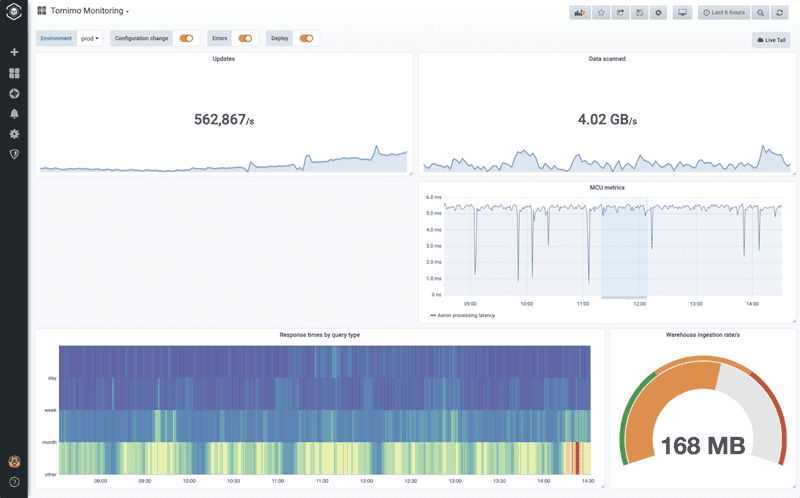
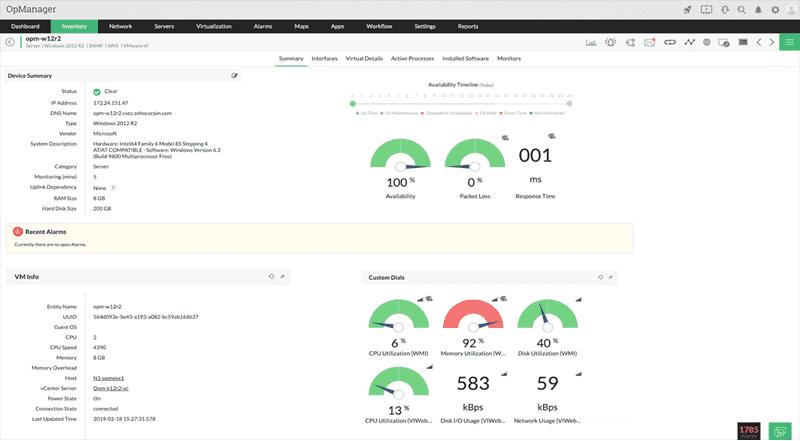


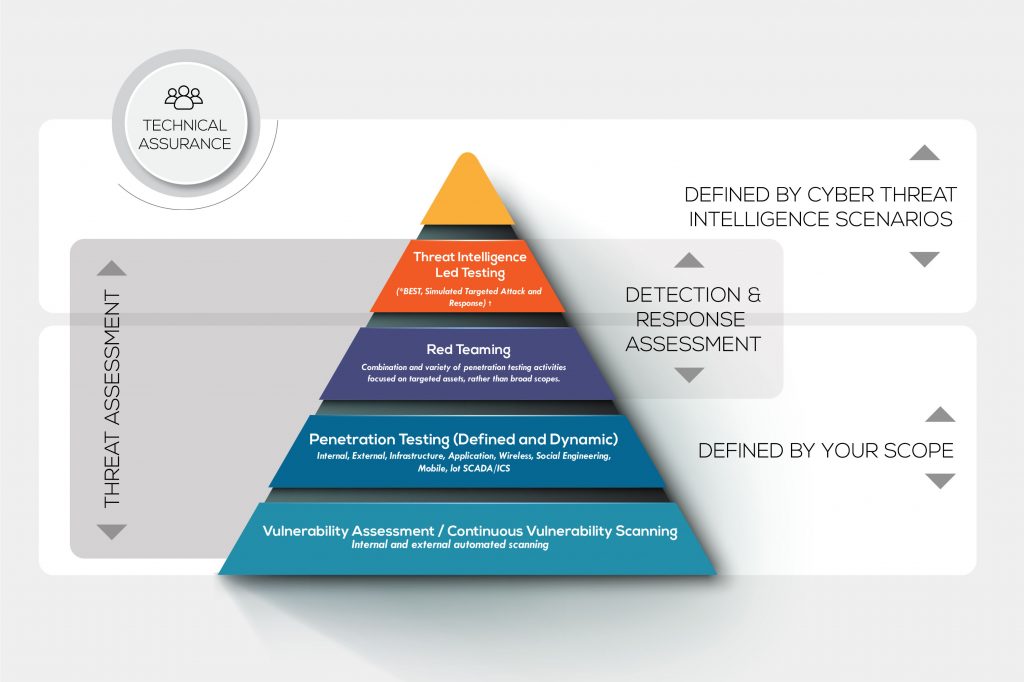
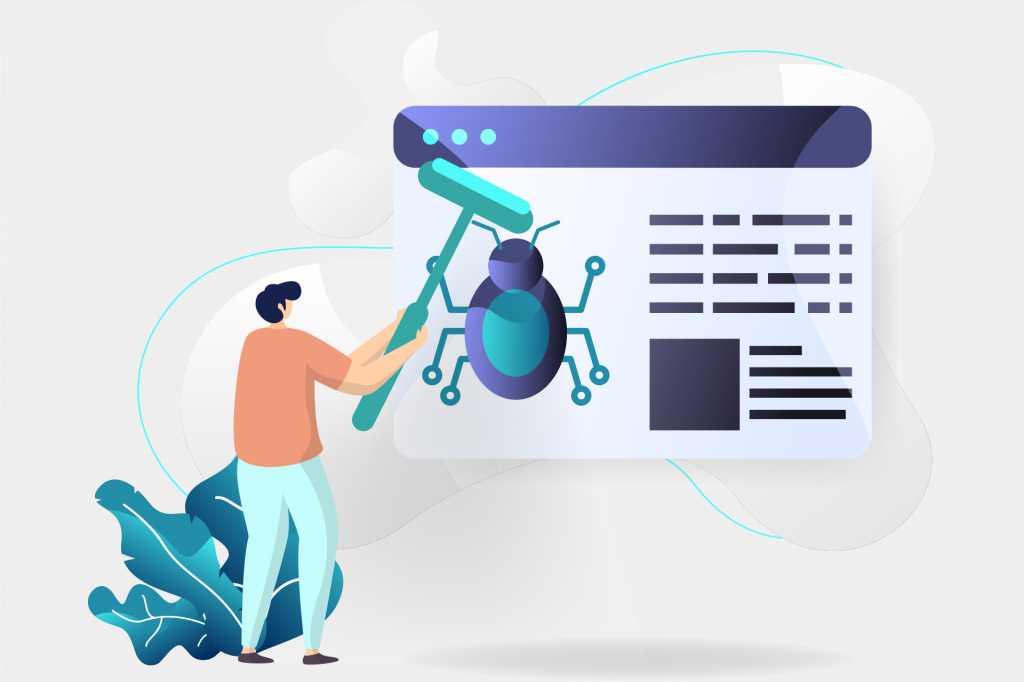



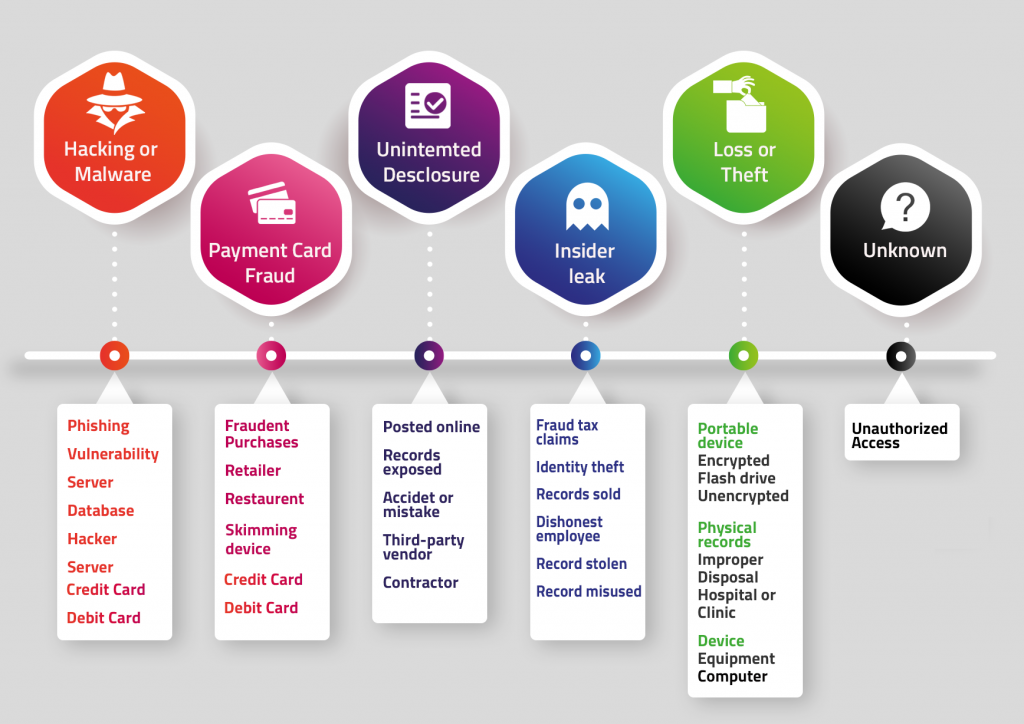

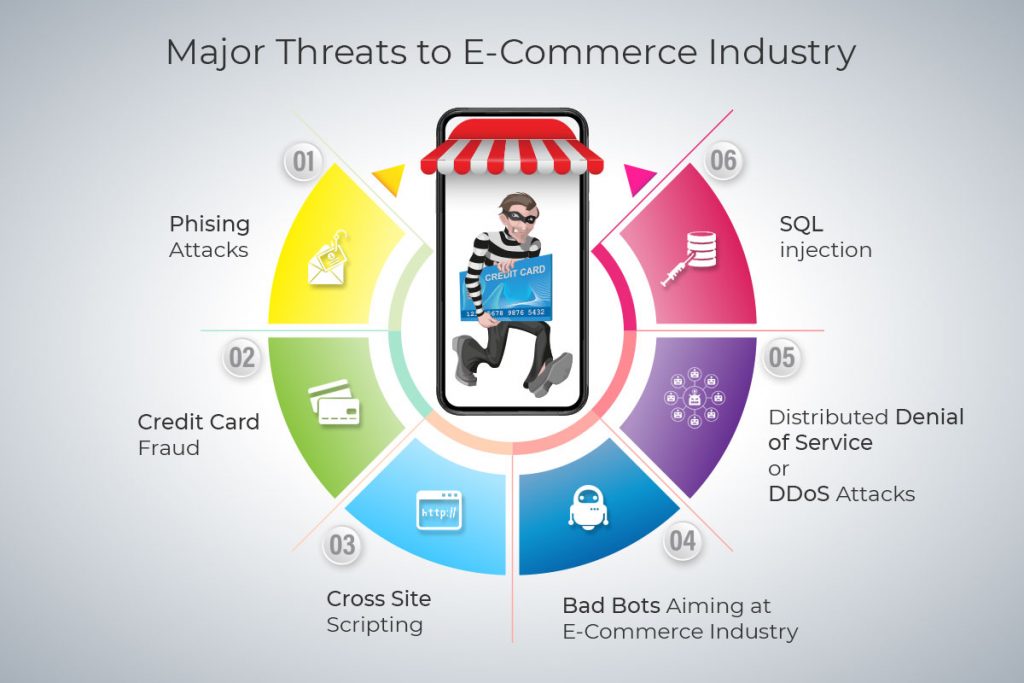
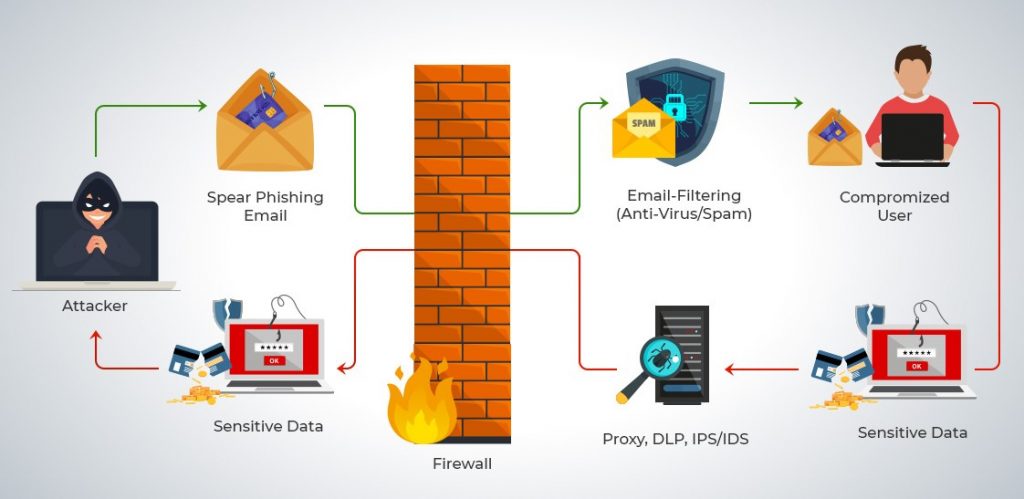
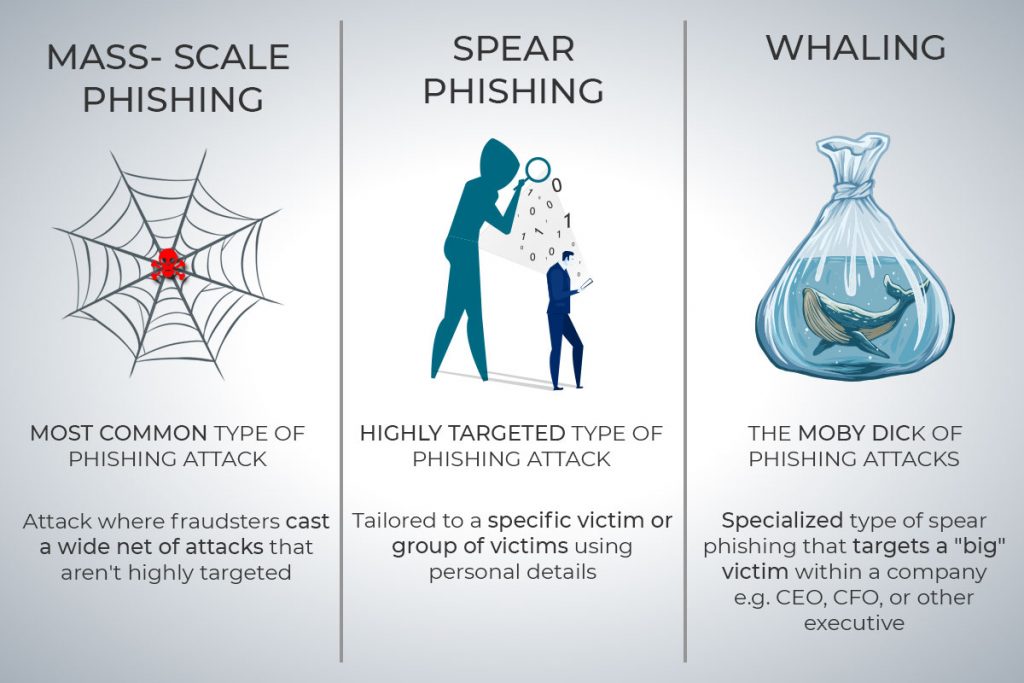


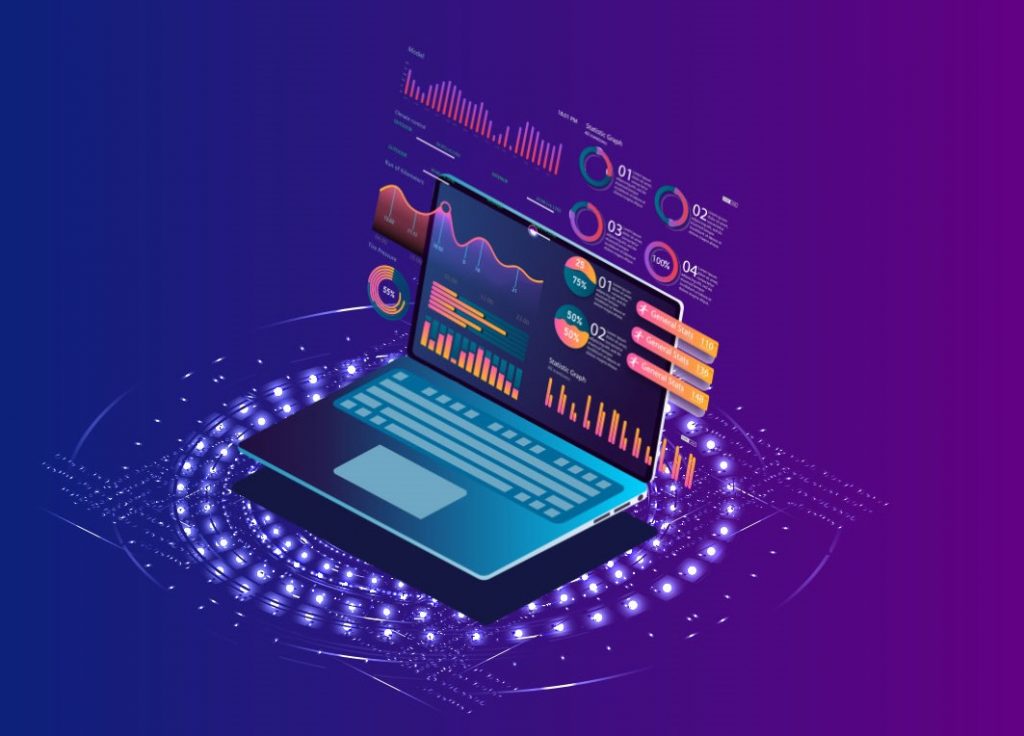
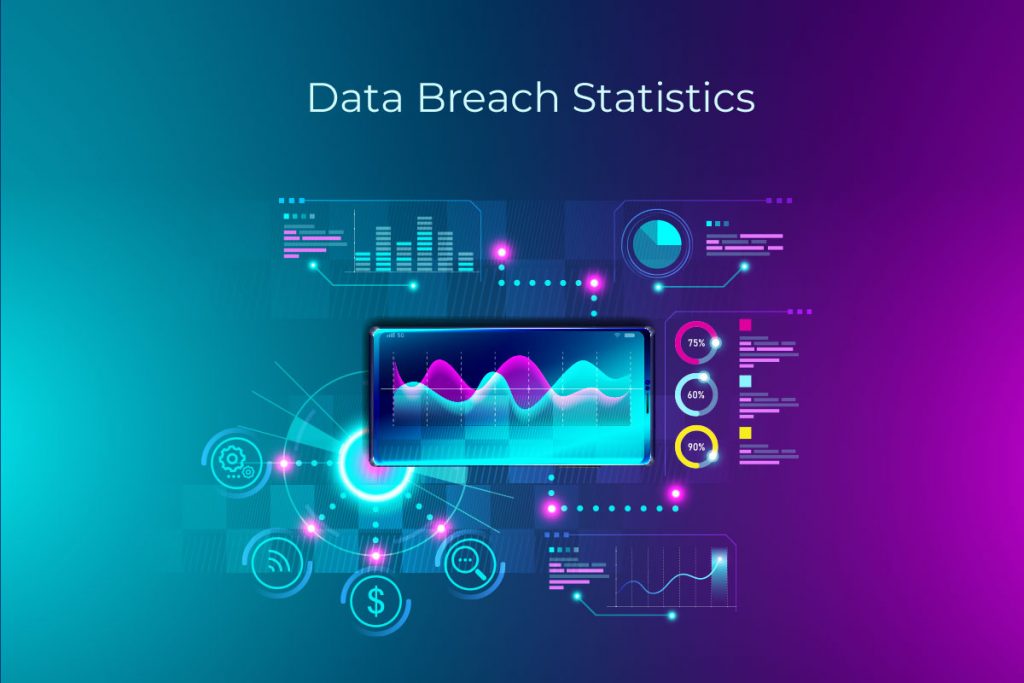



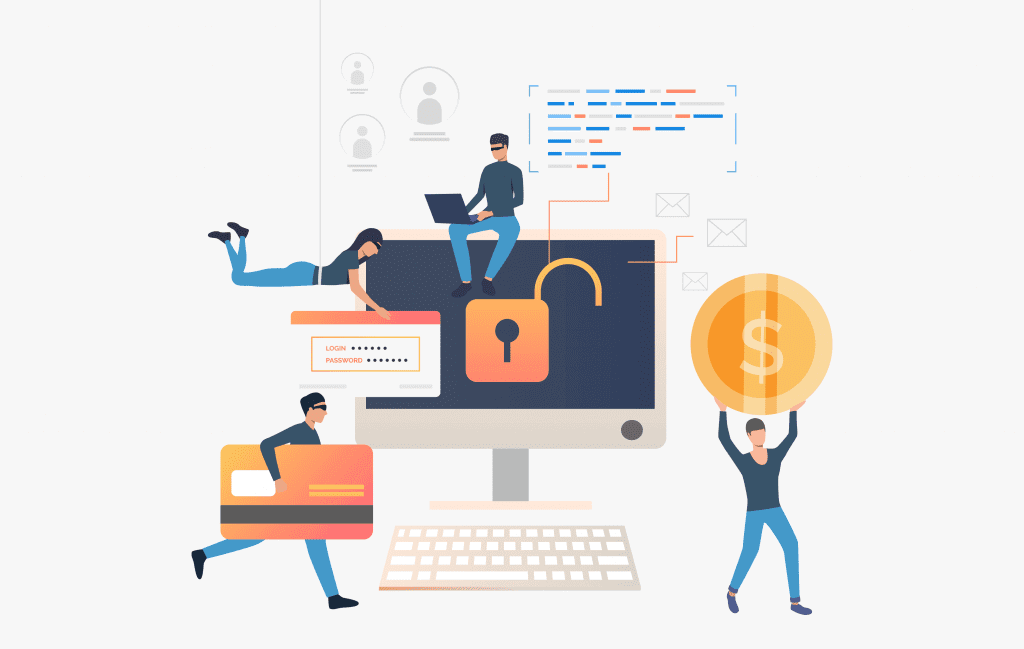


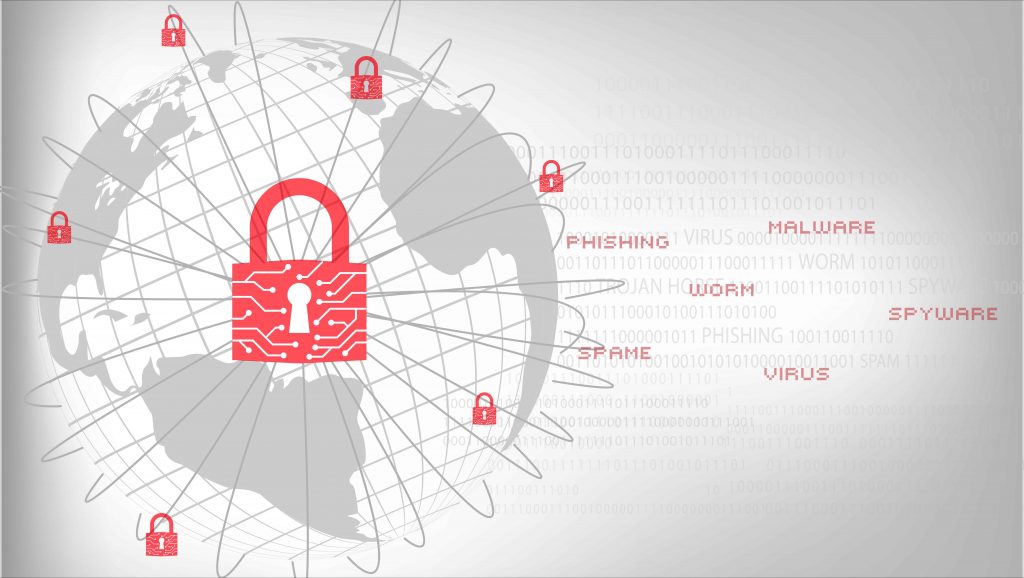







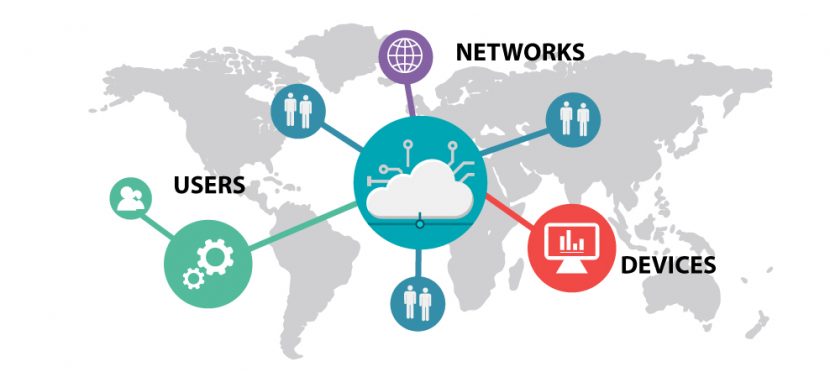

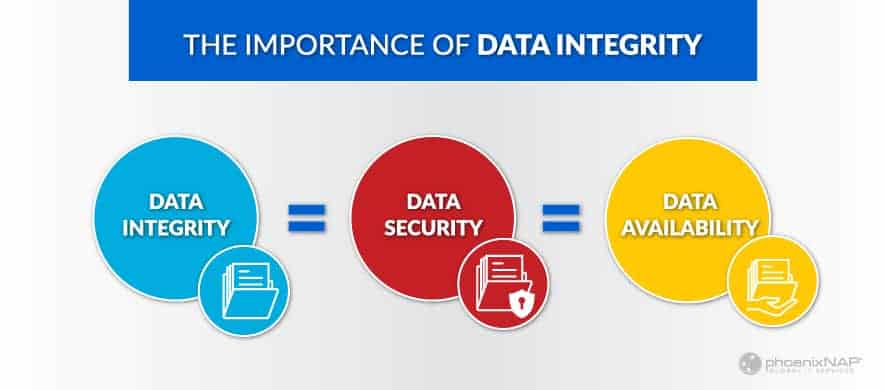
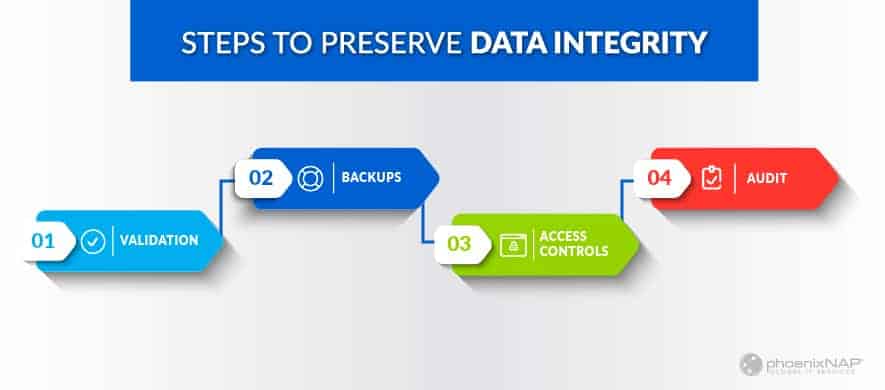

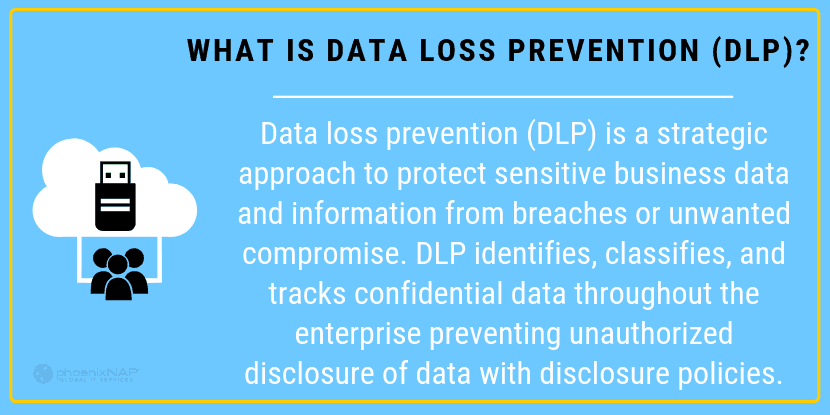

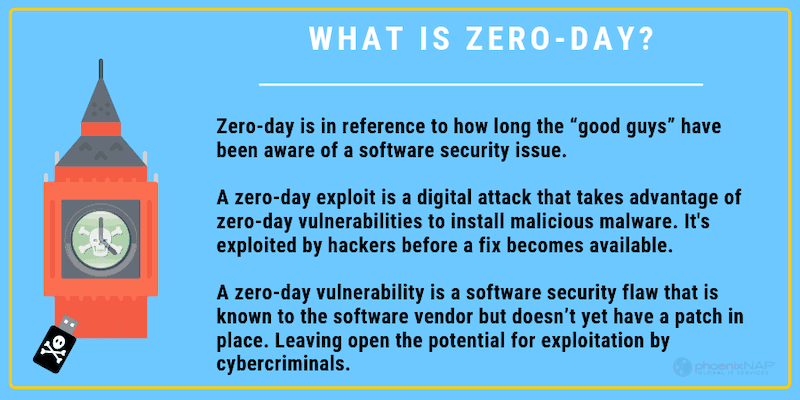
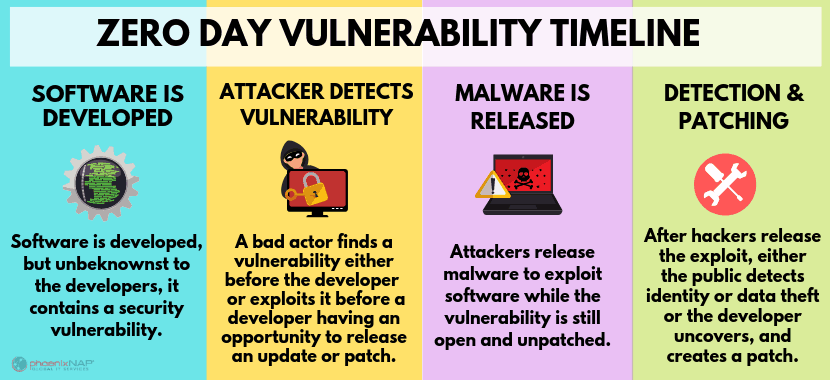
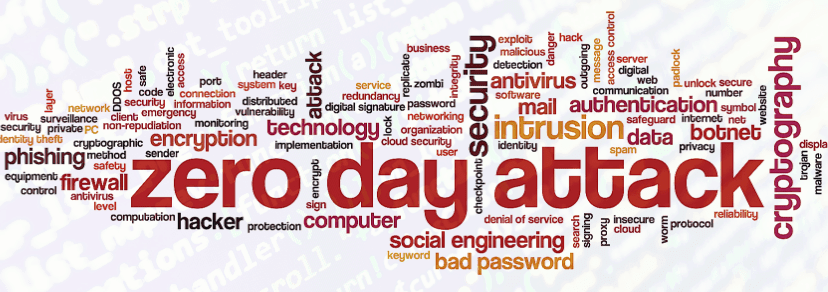

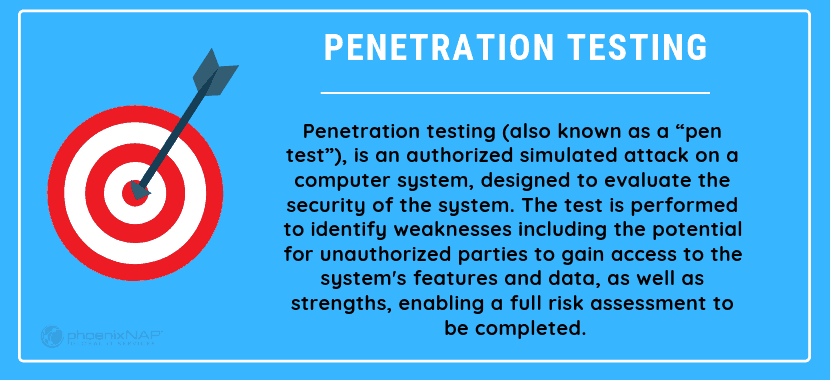
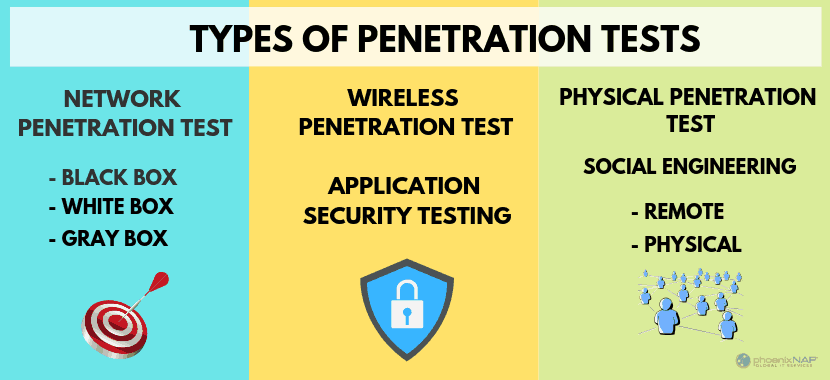 Types of Penetration Tests
Types of Penetration Tests


